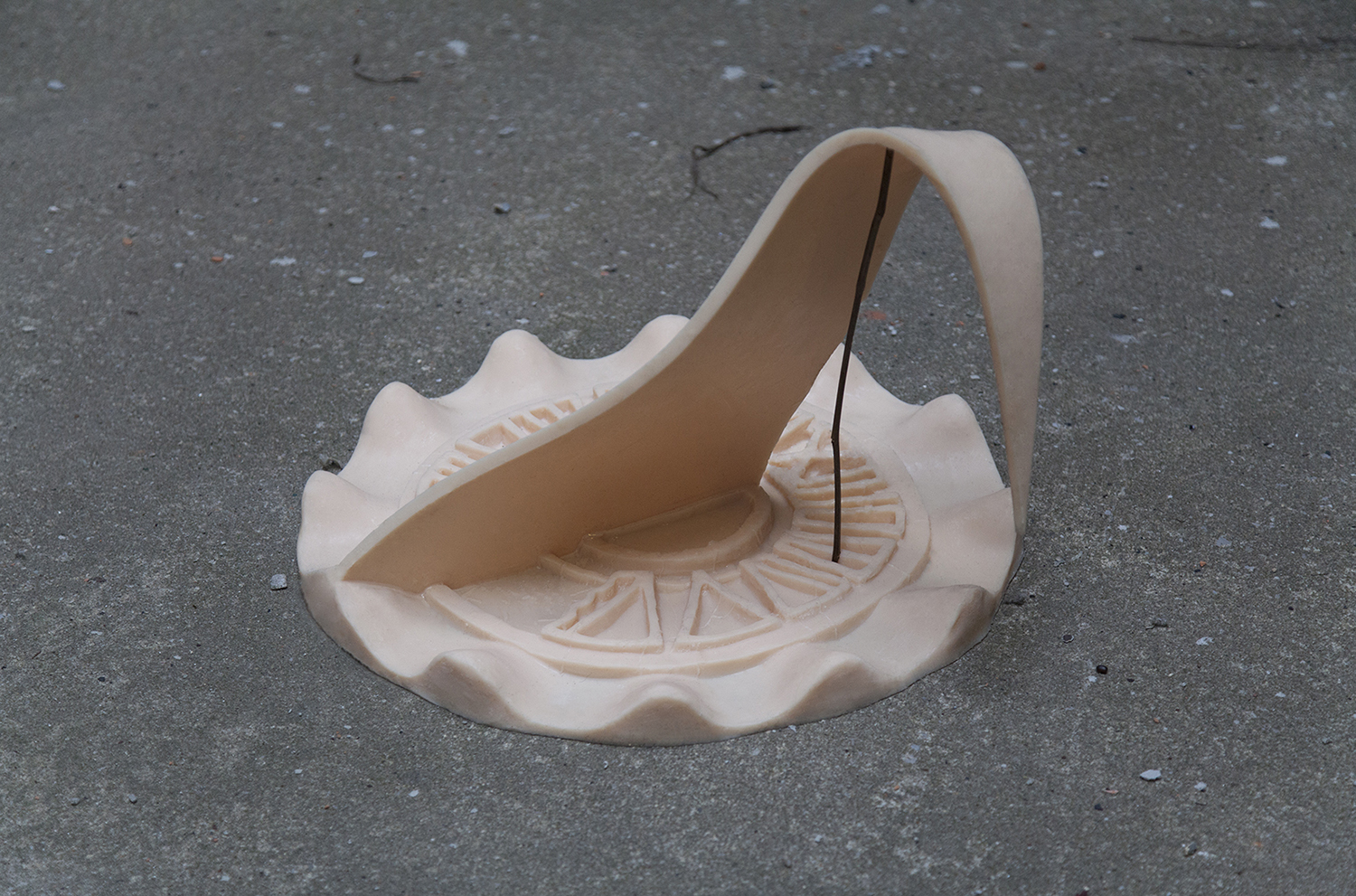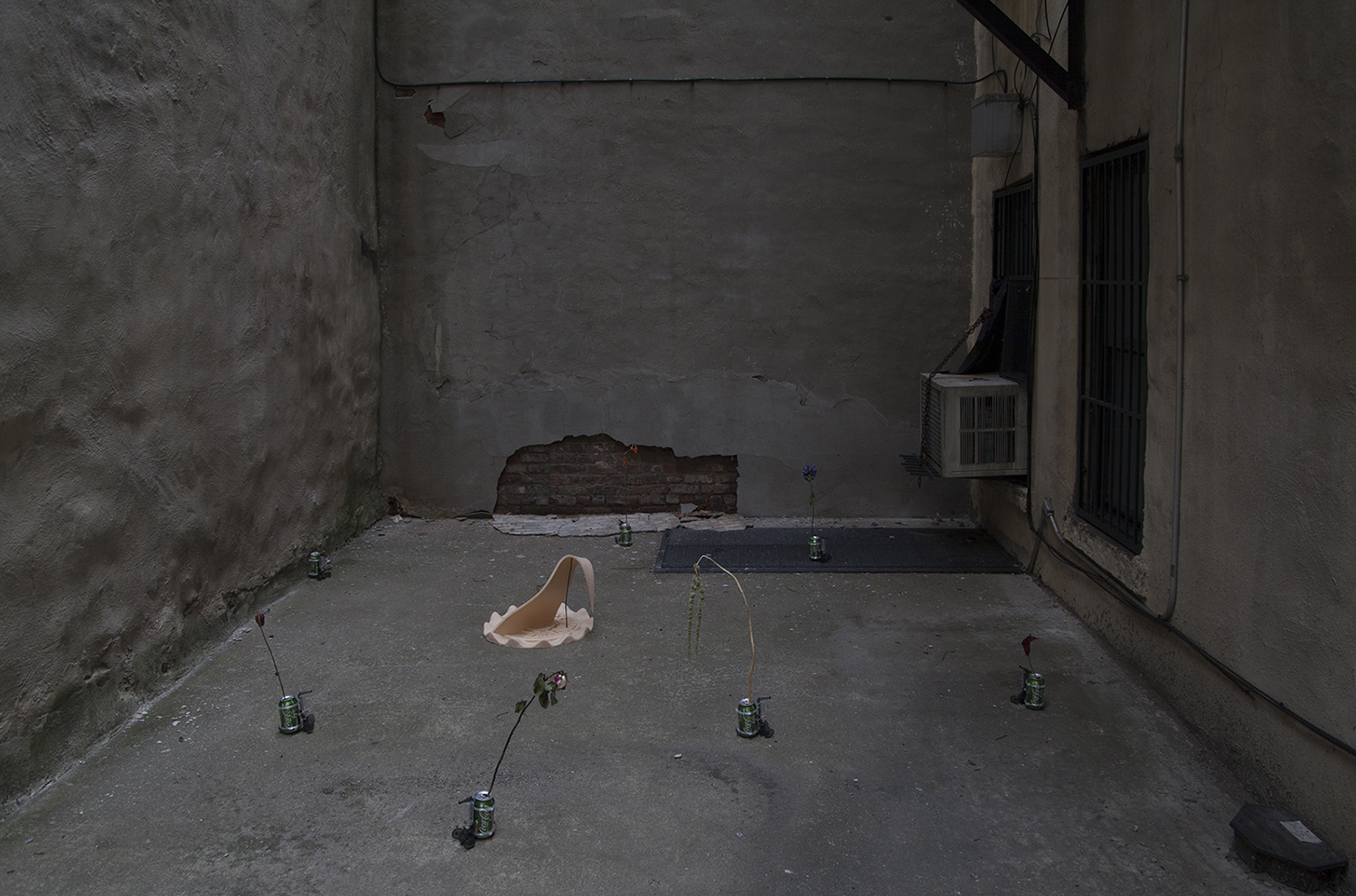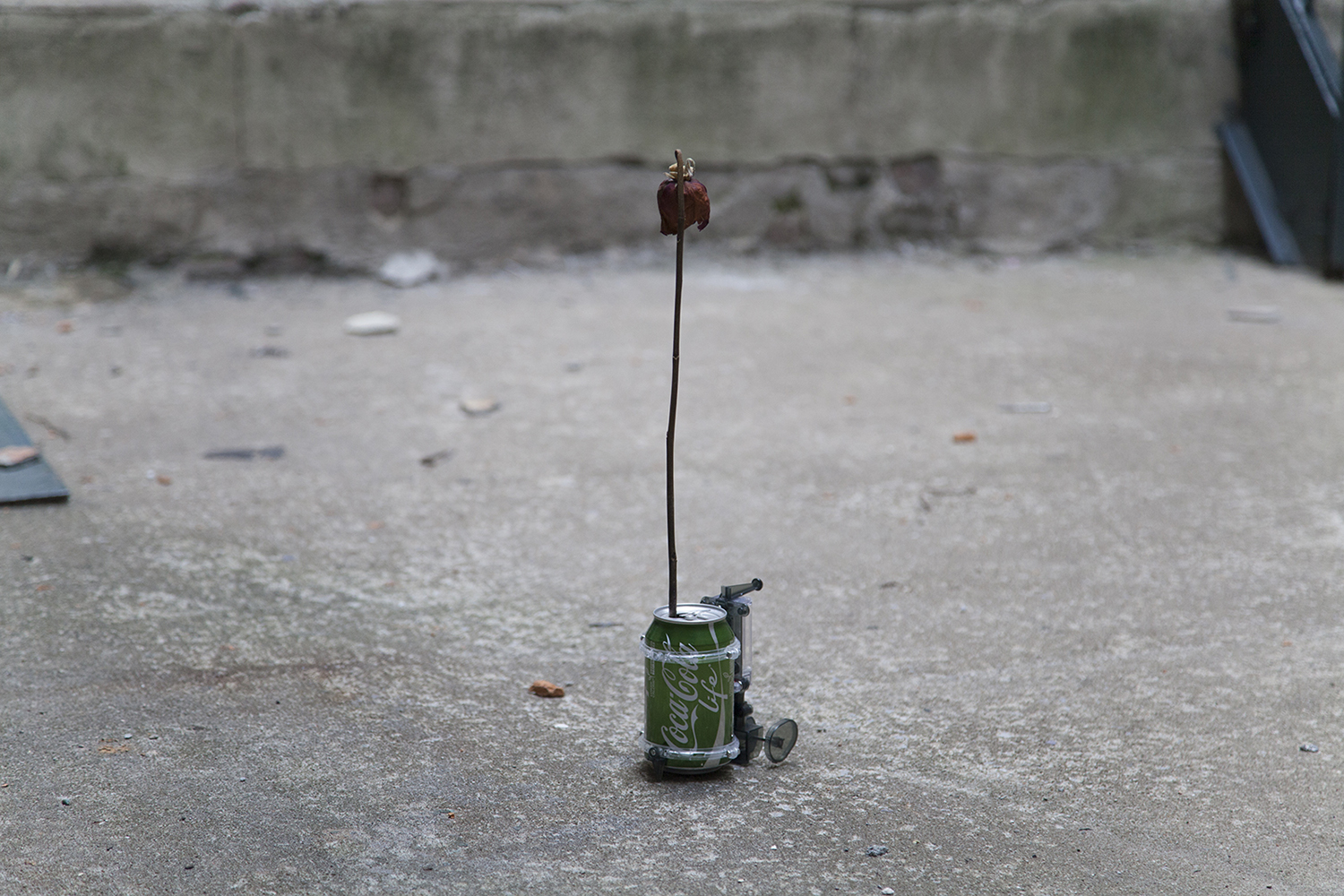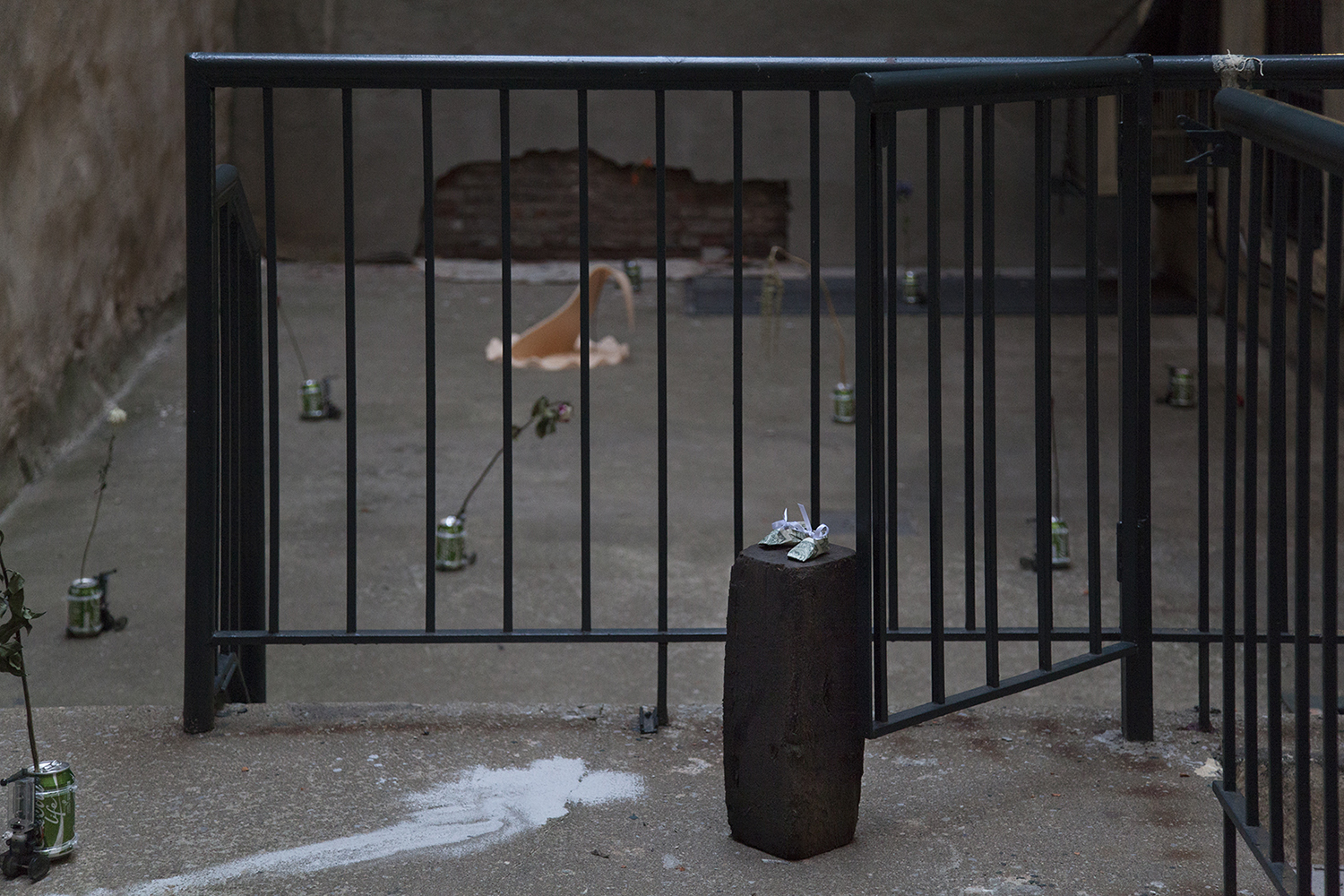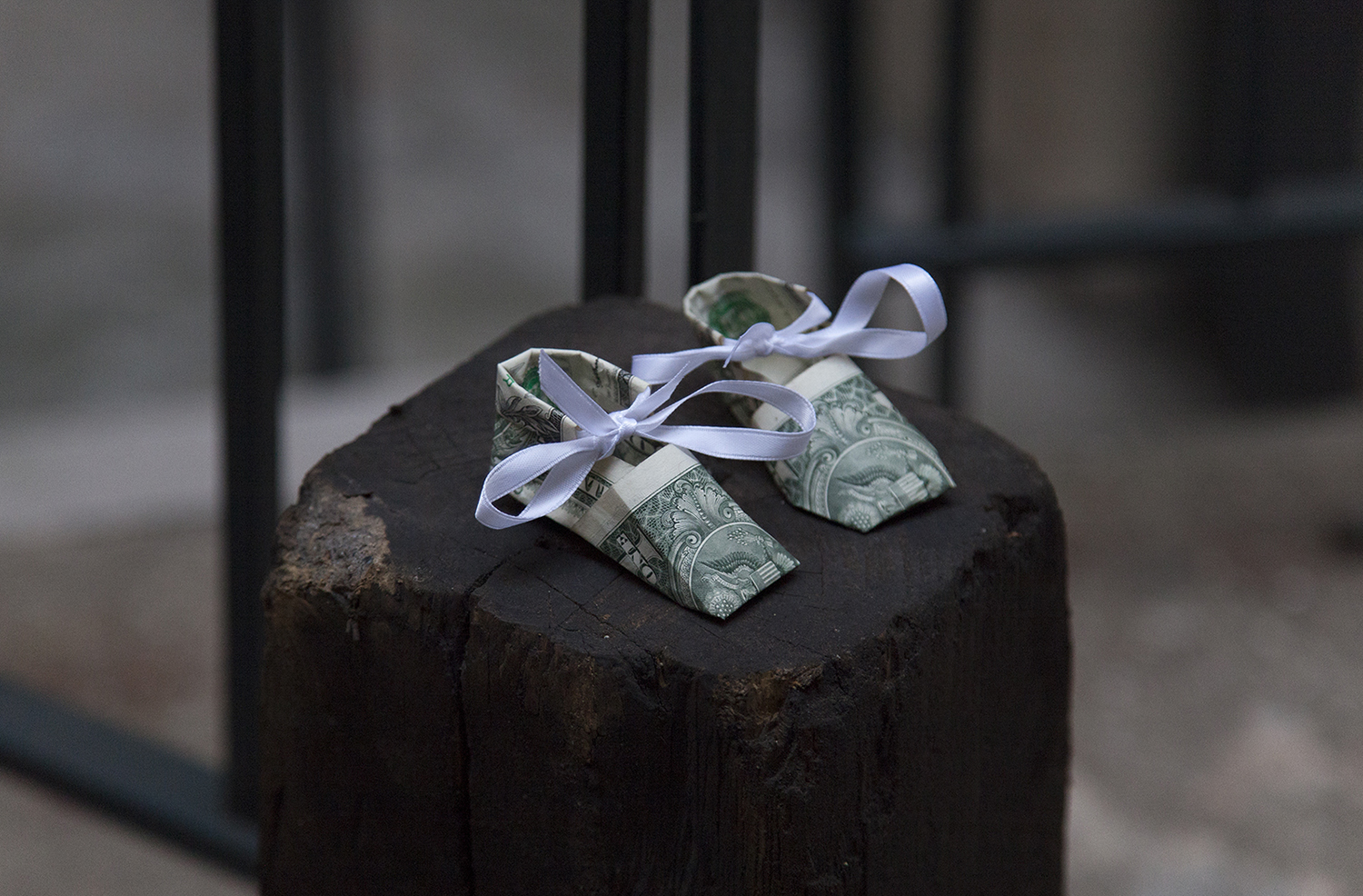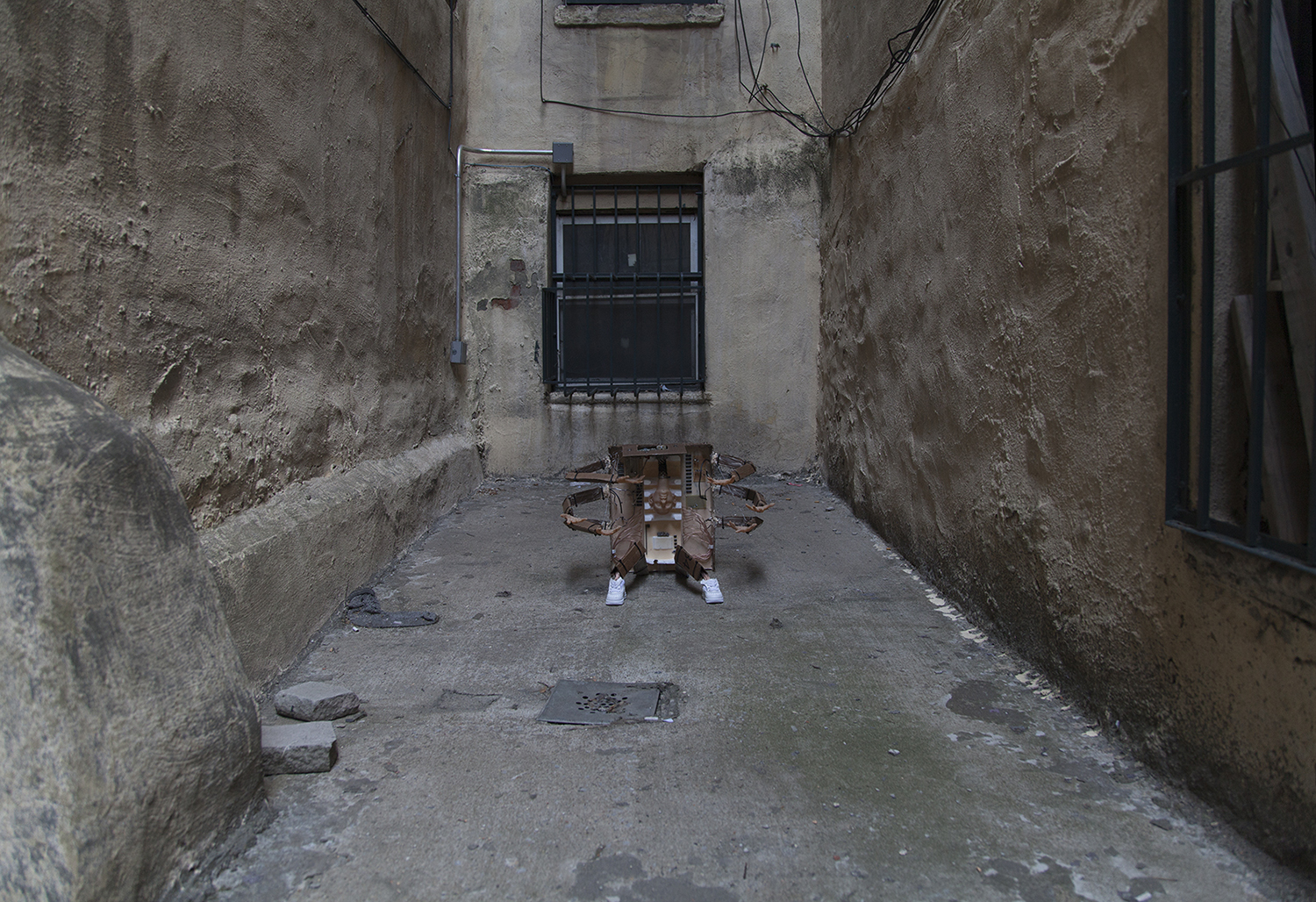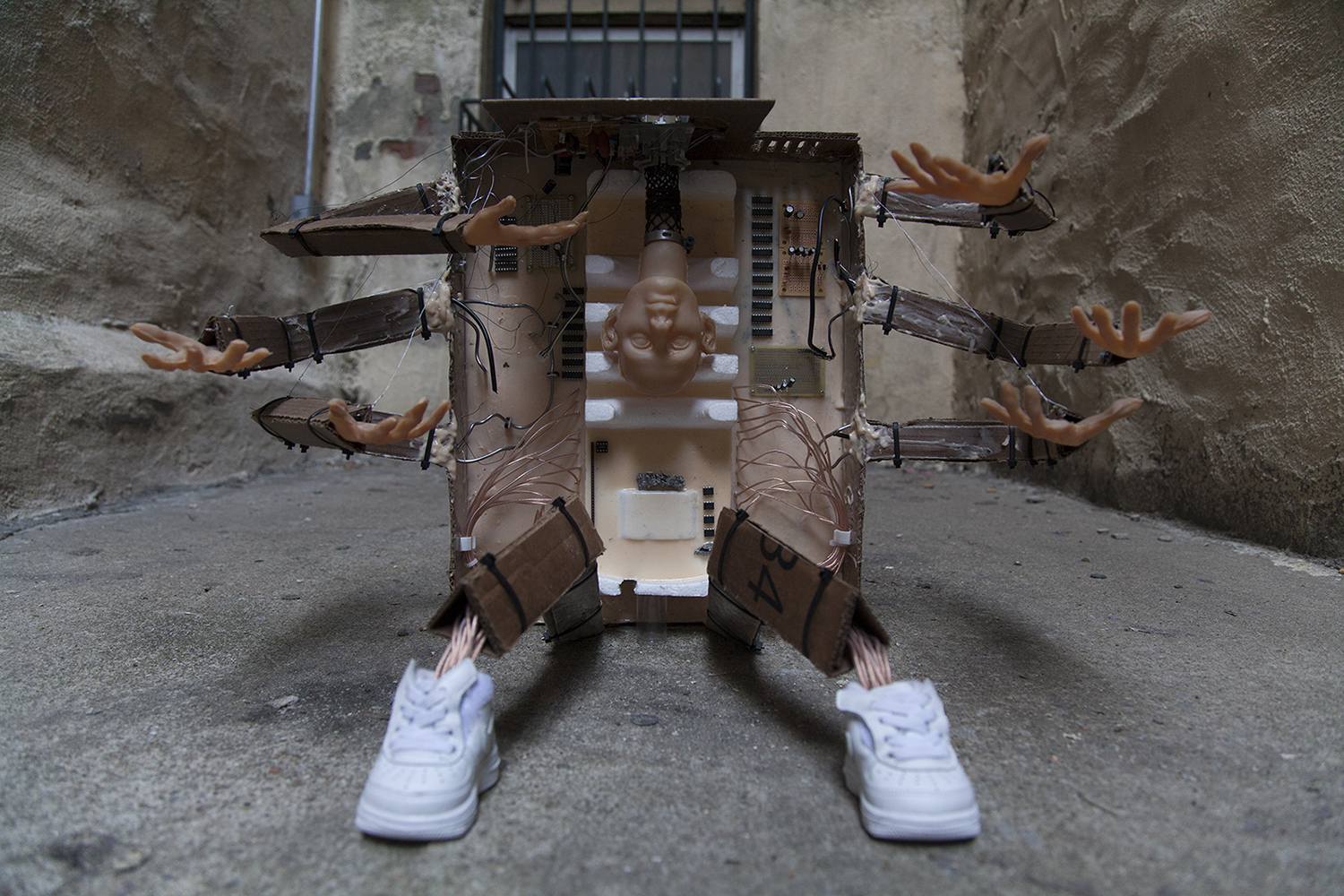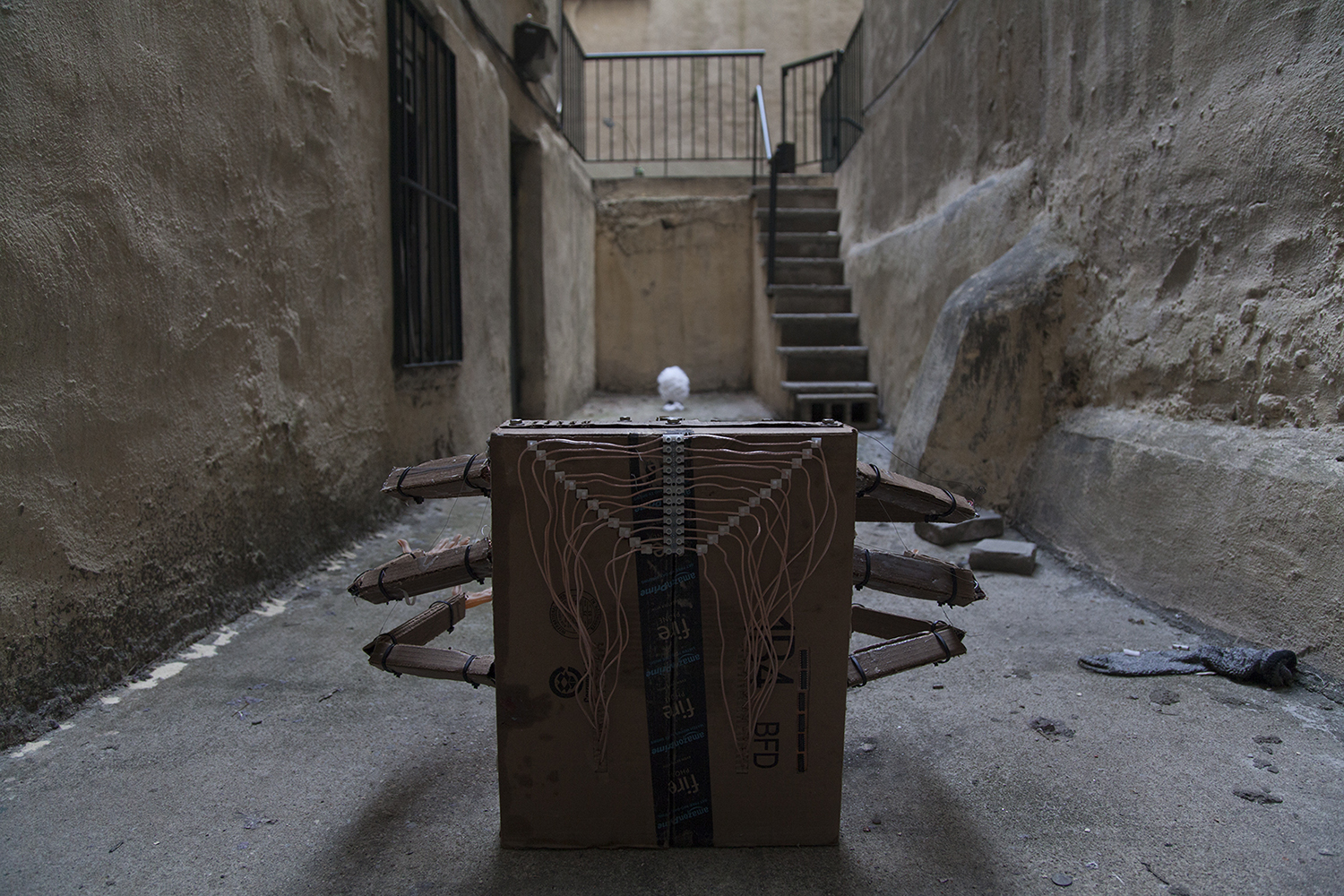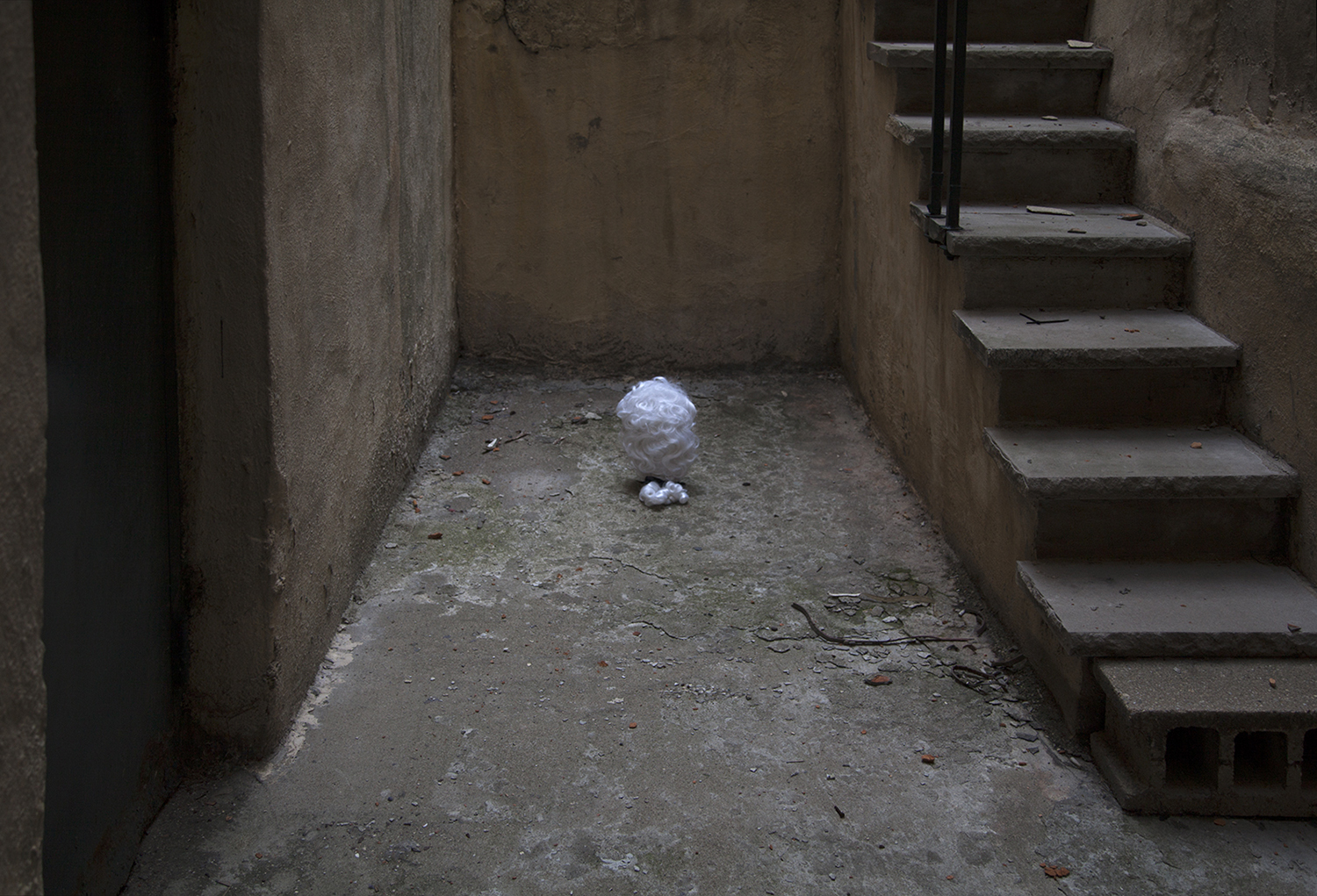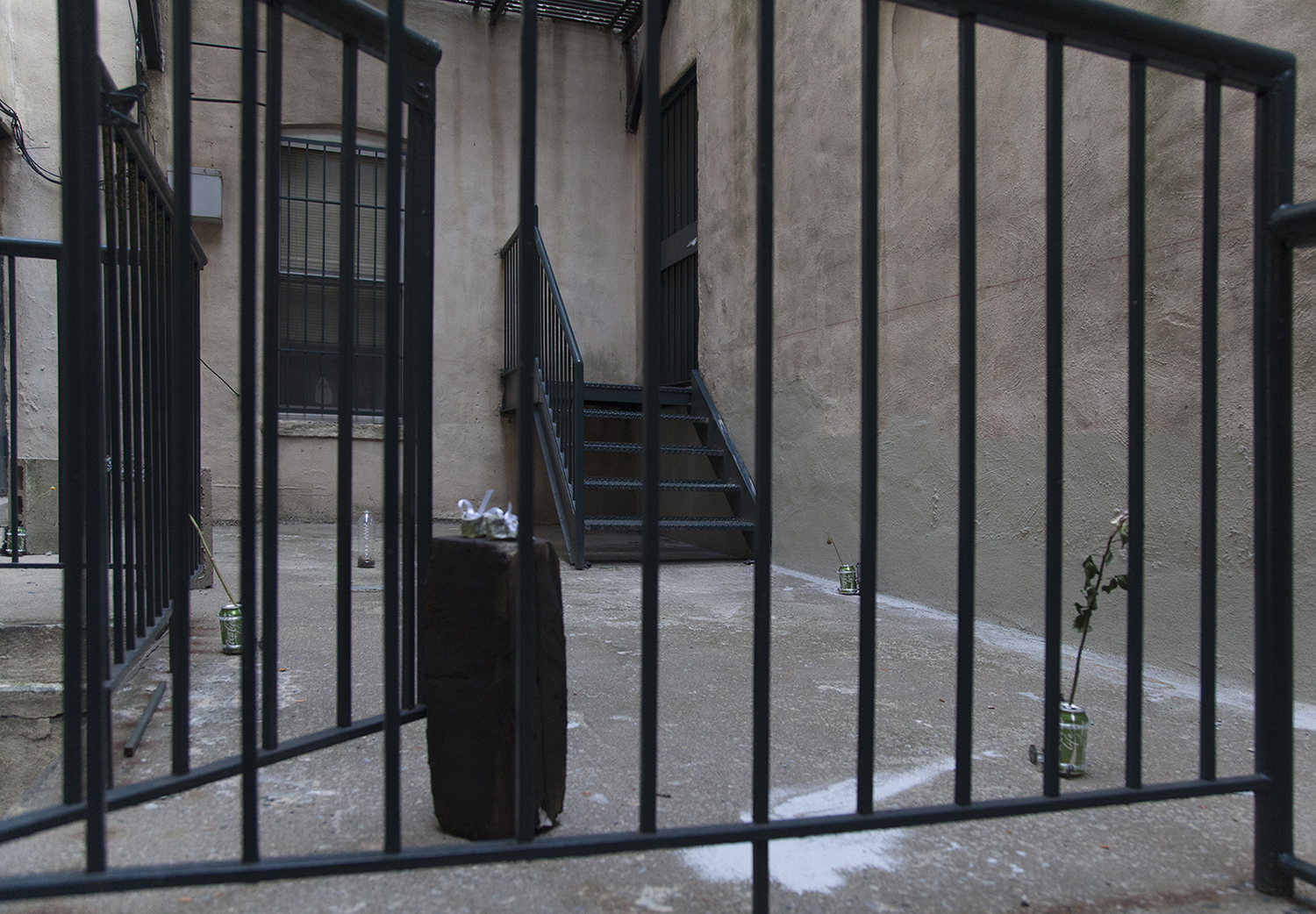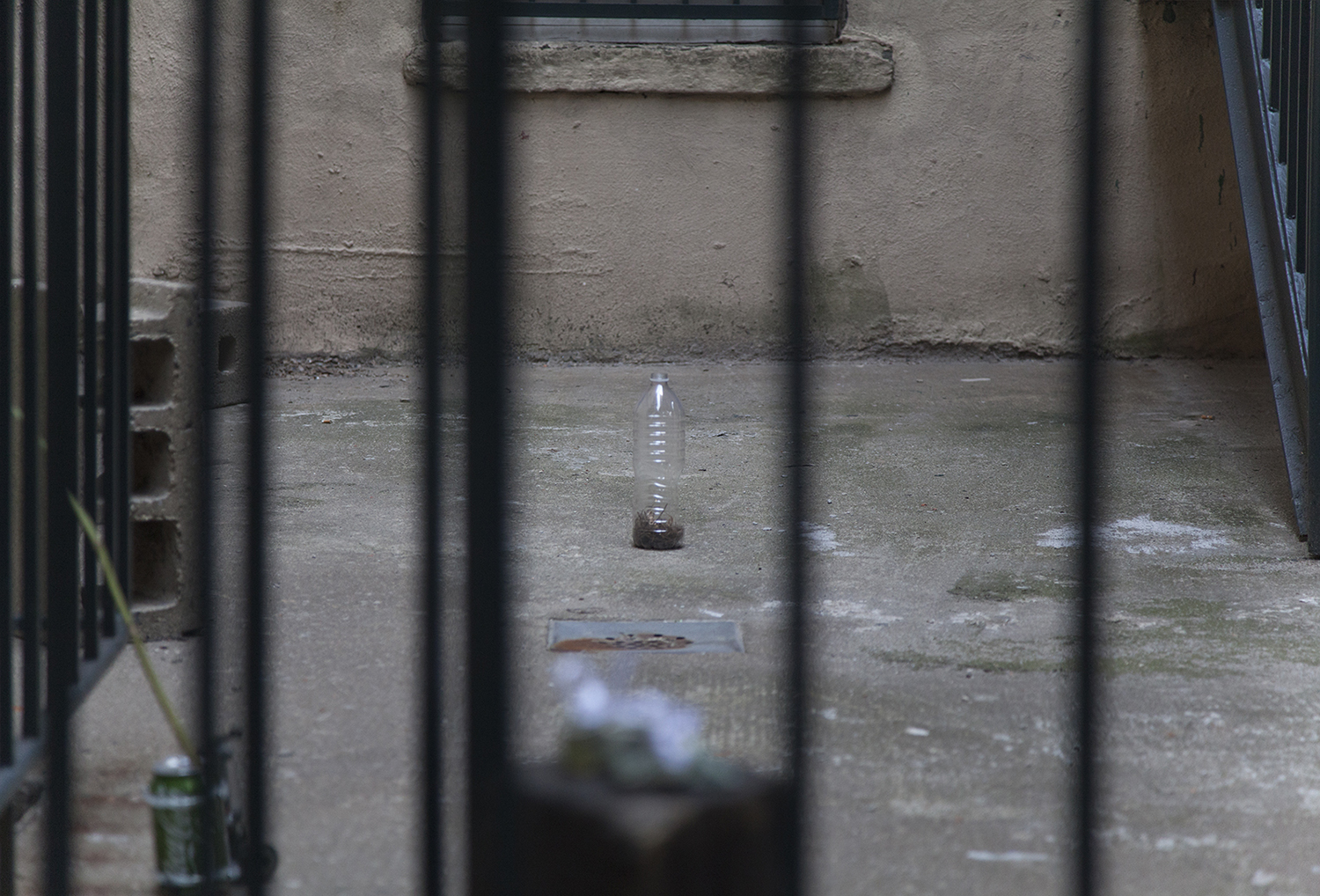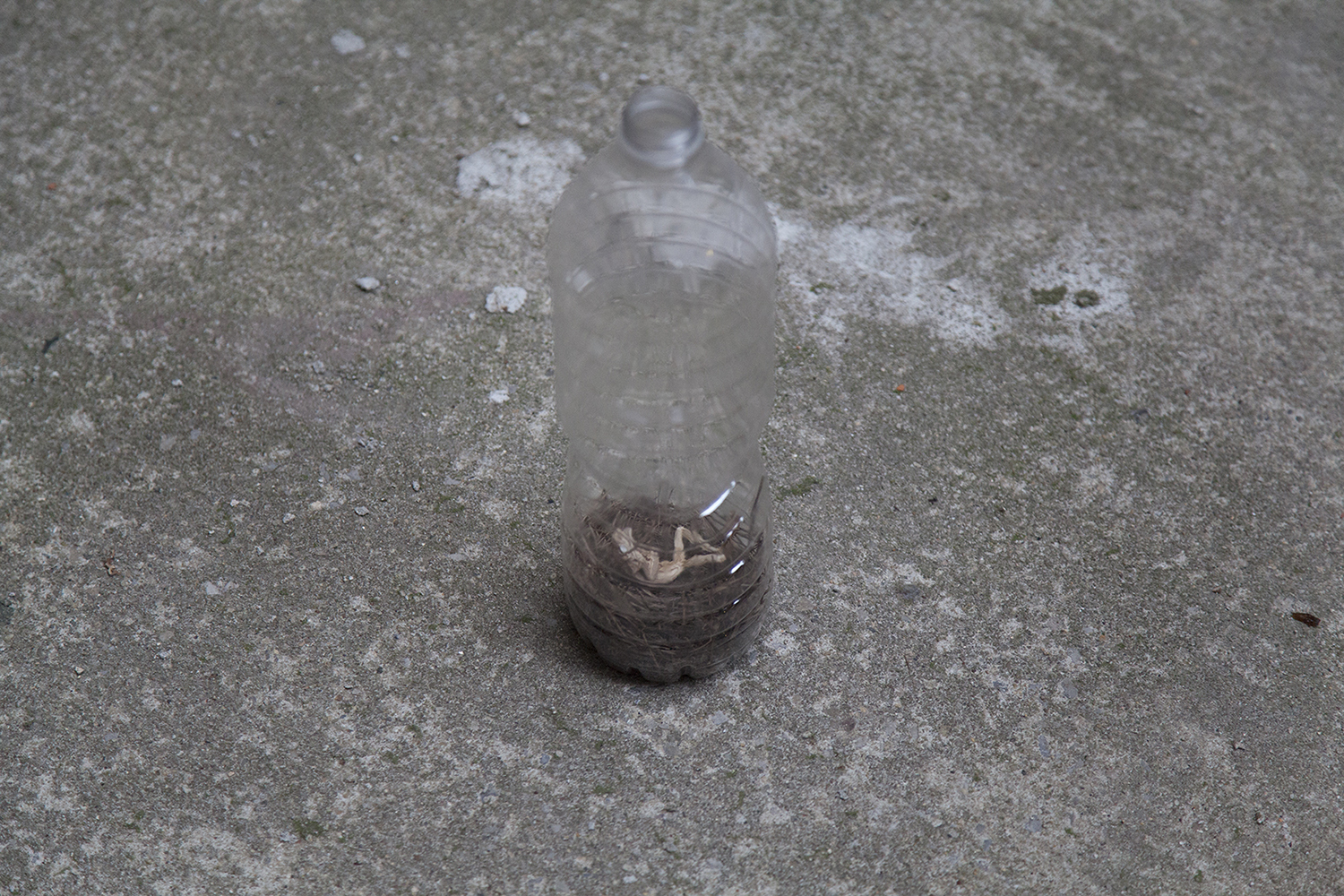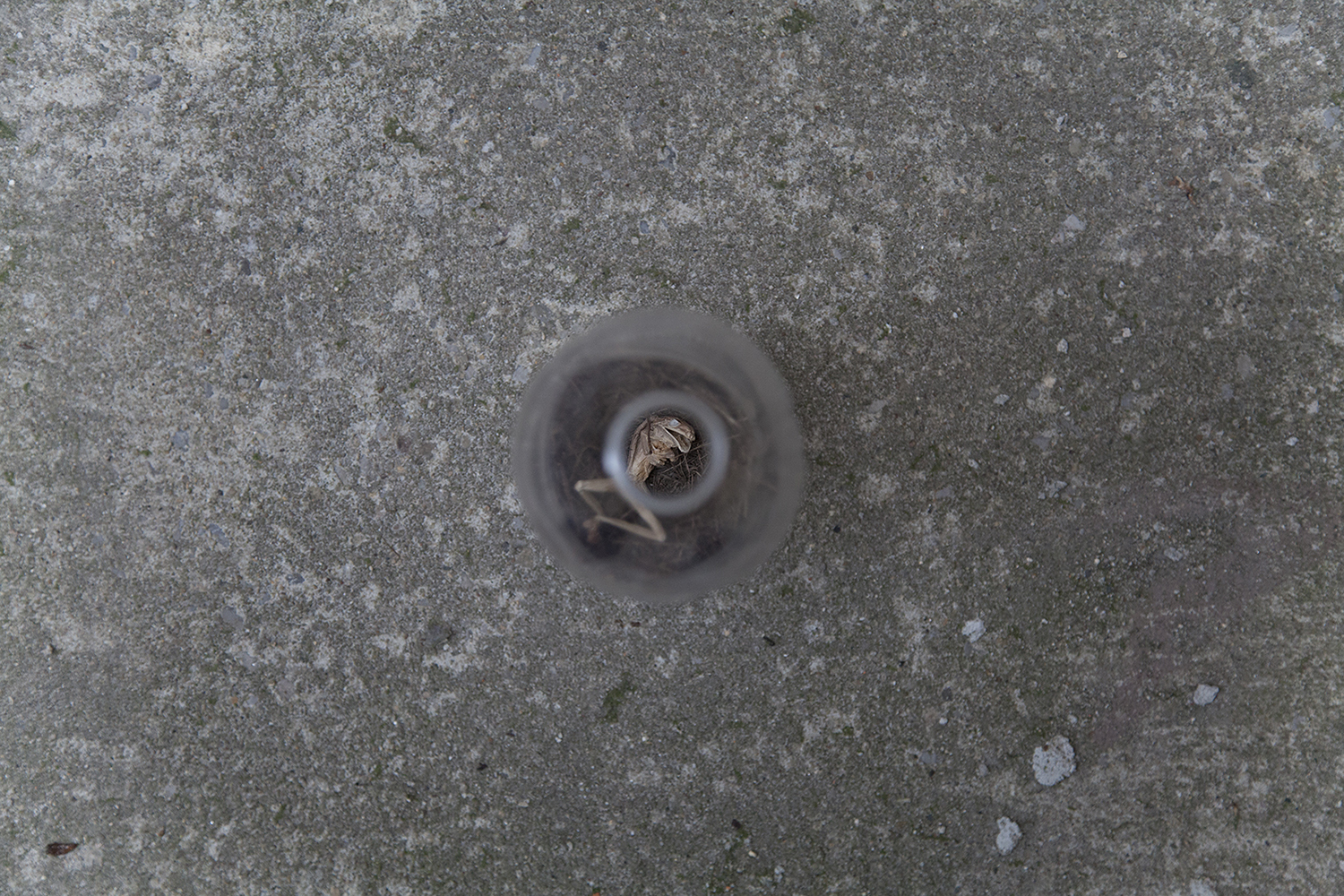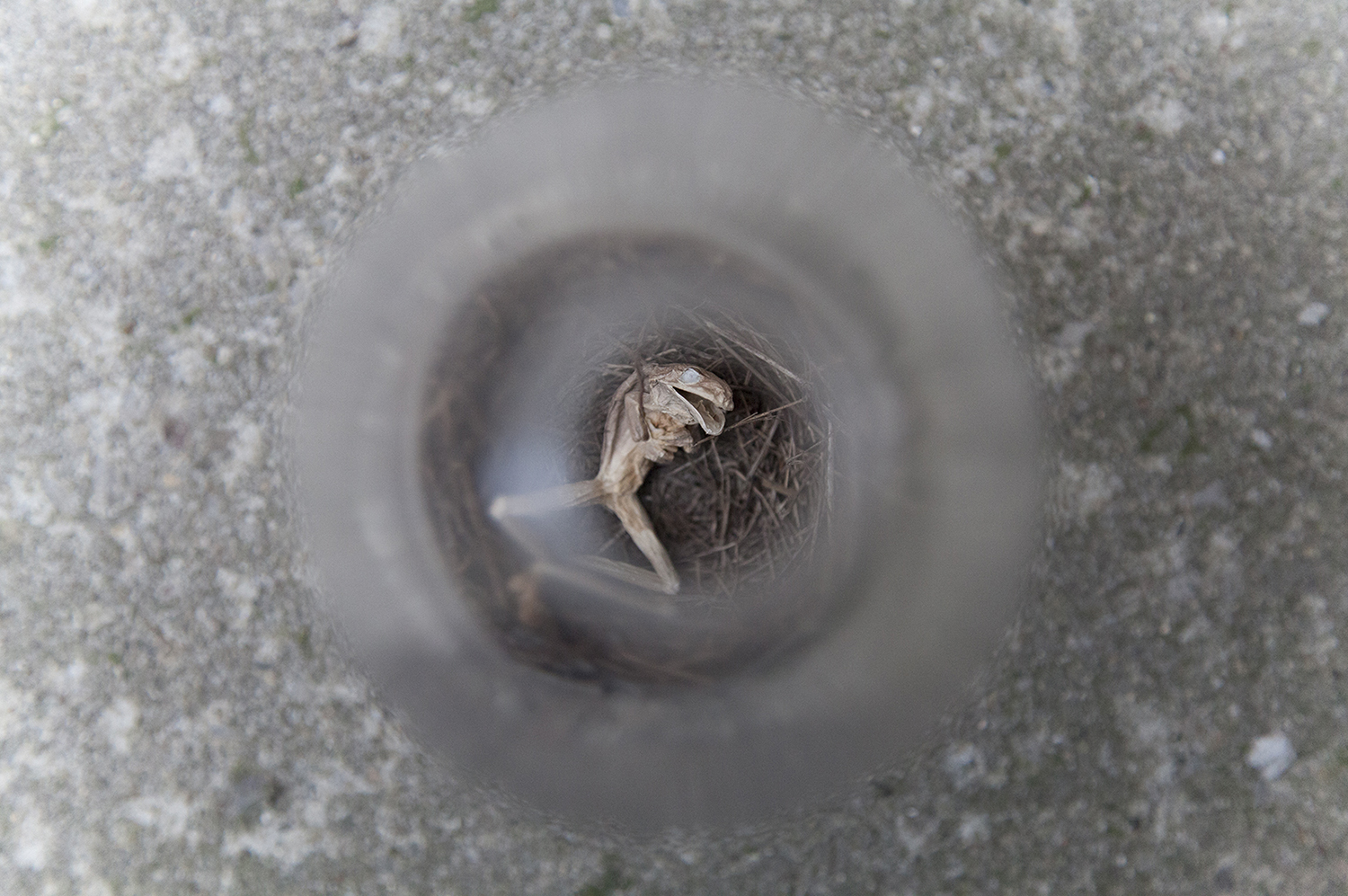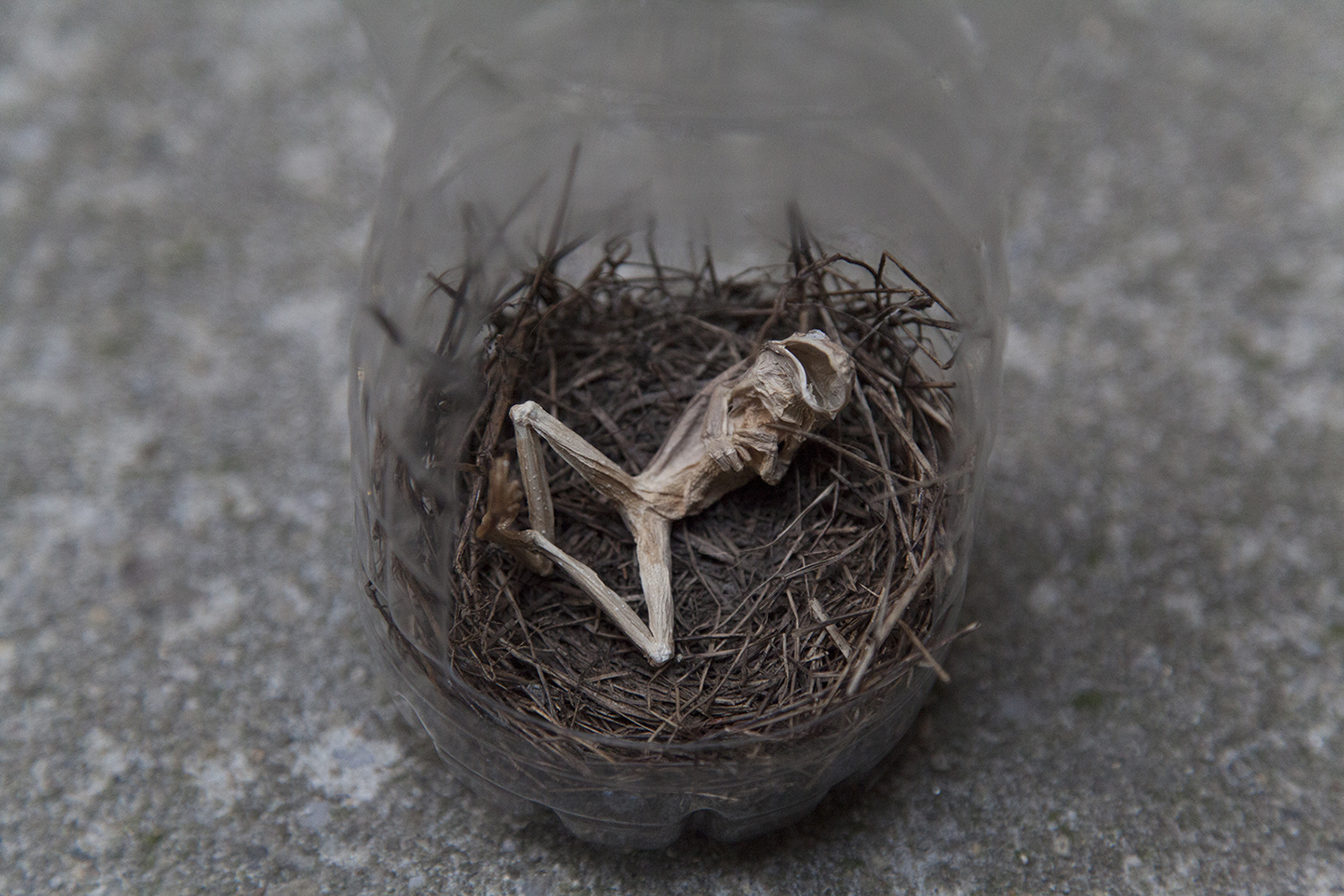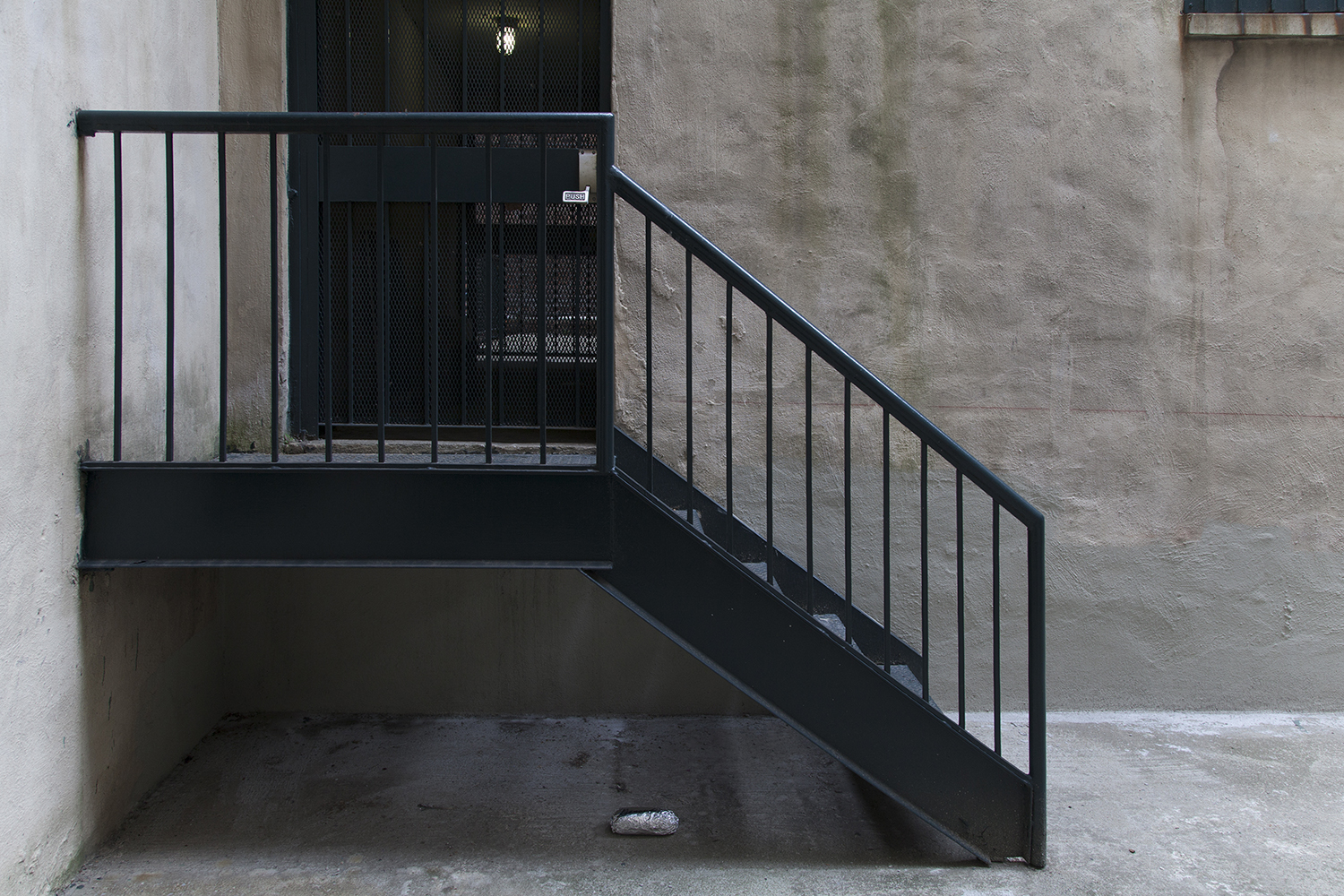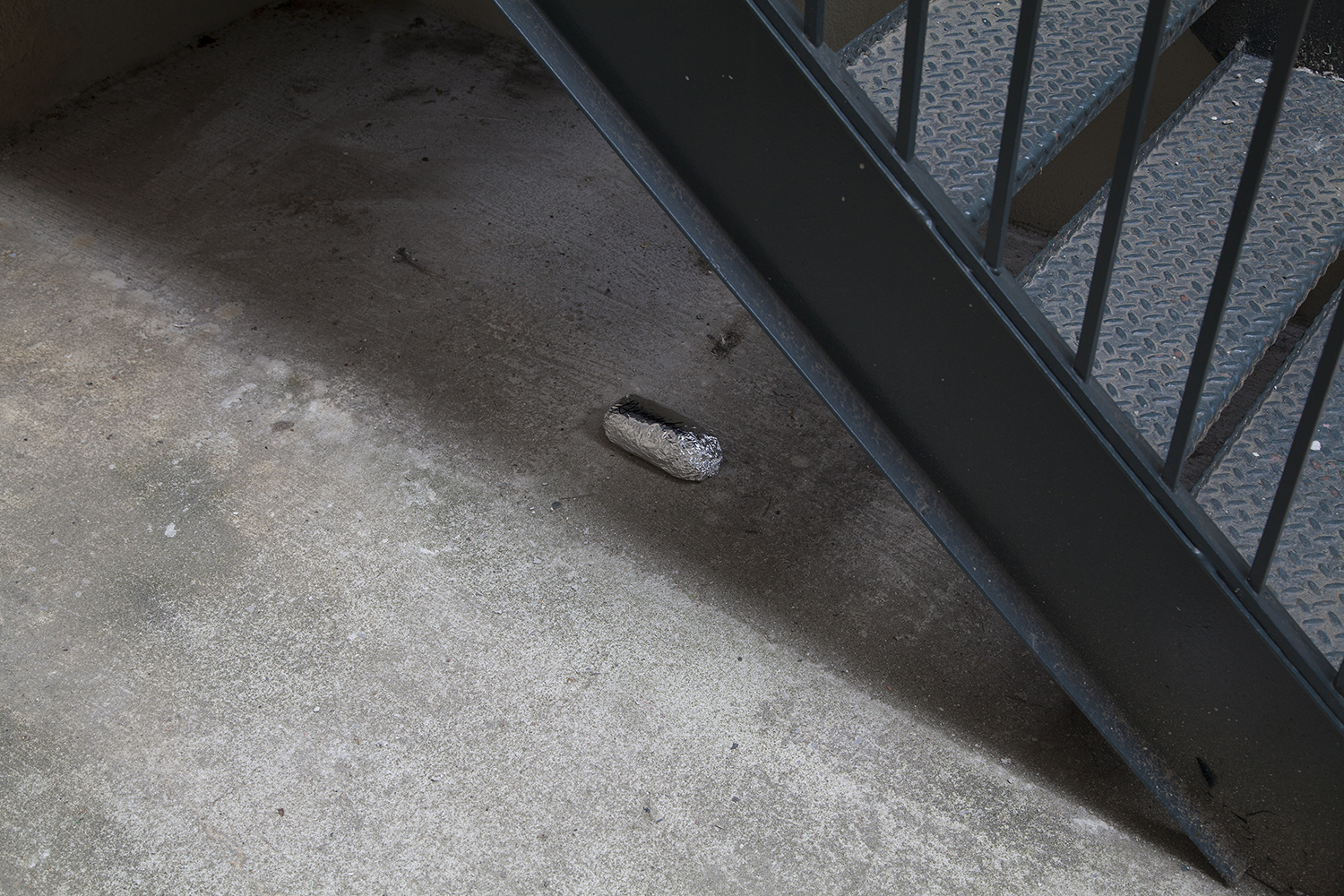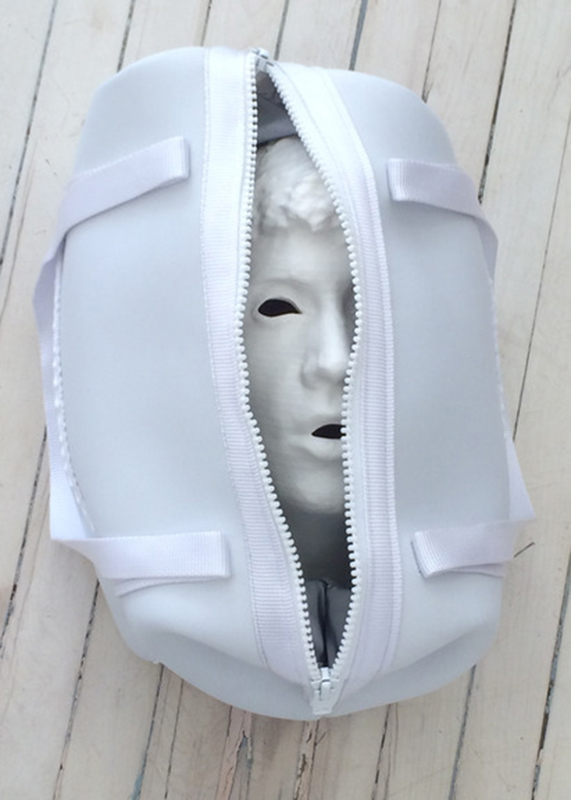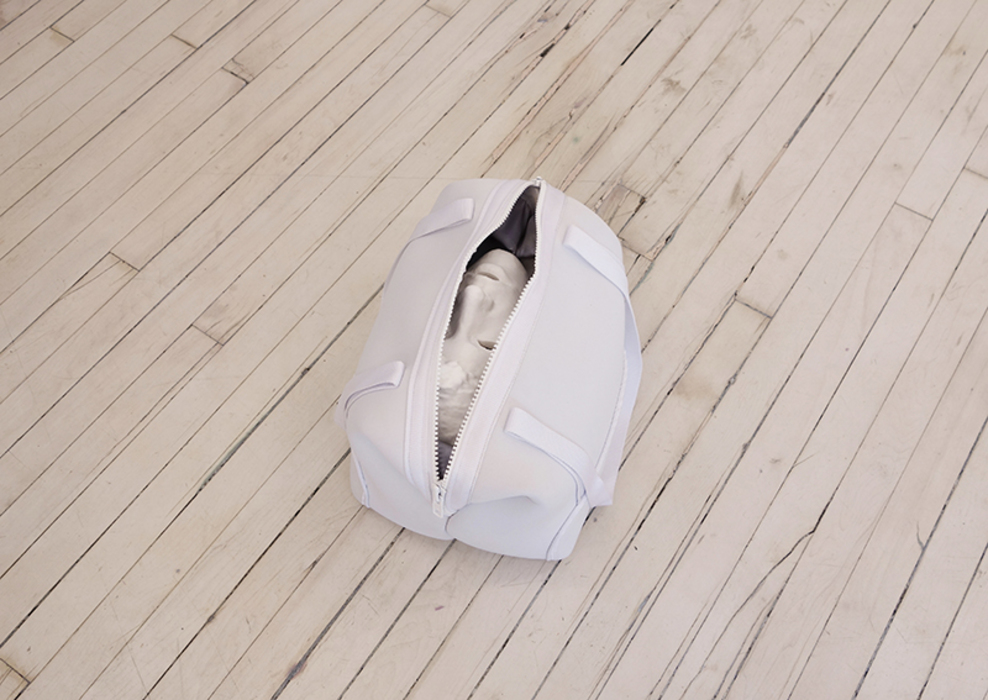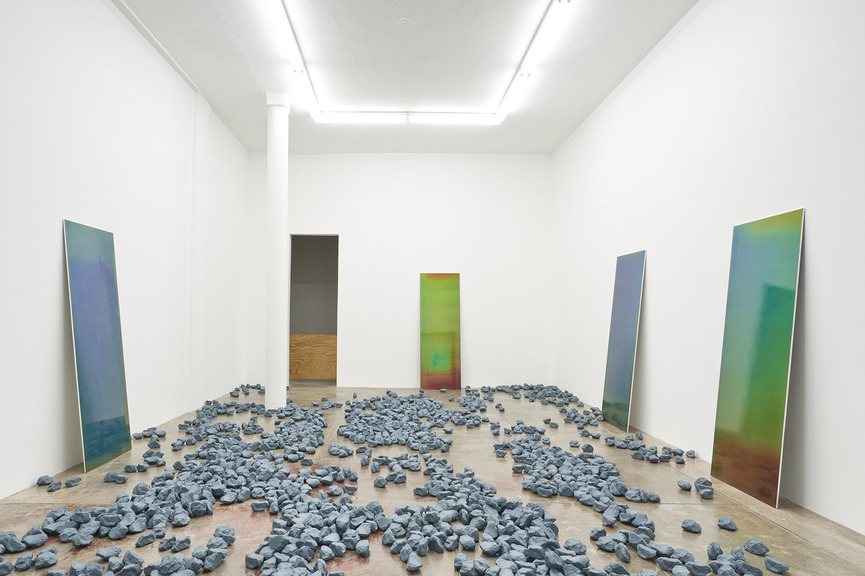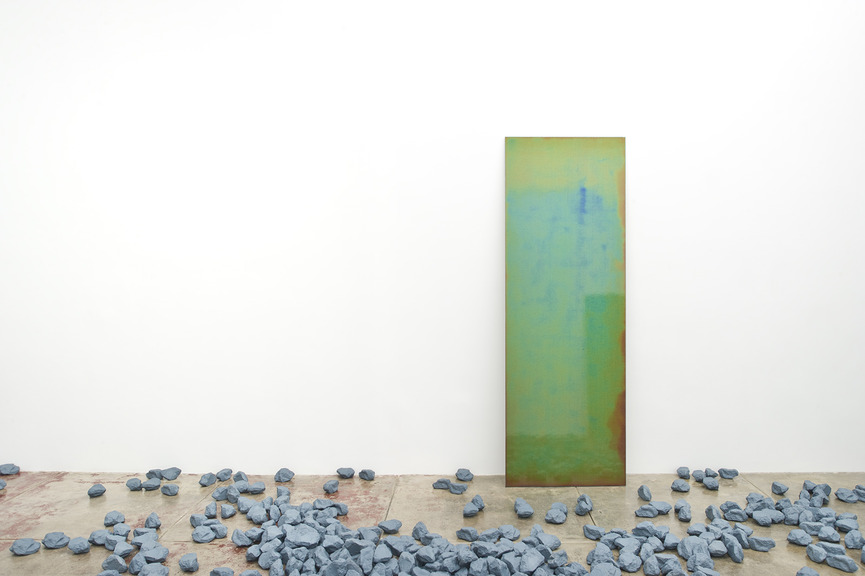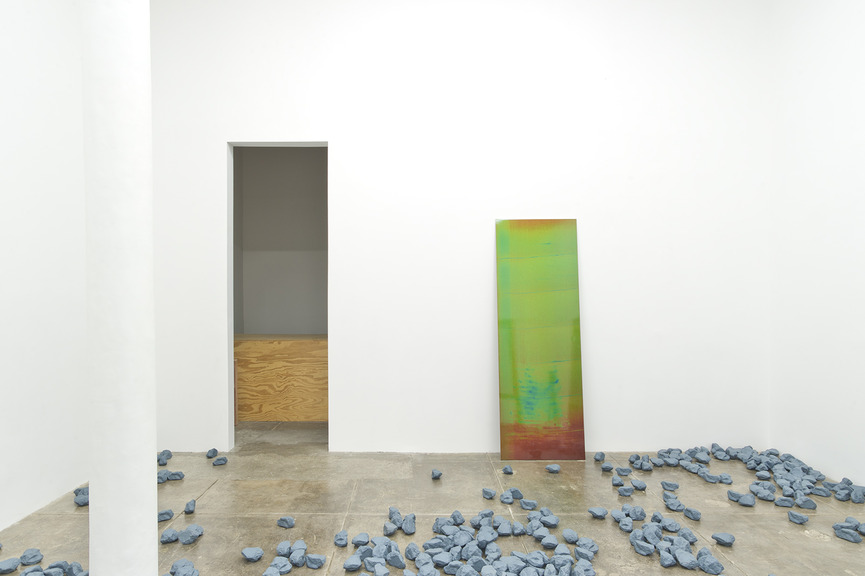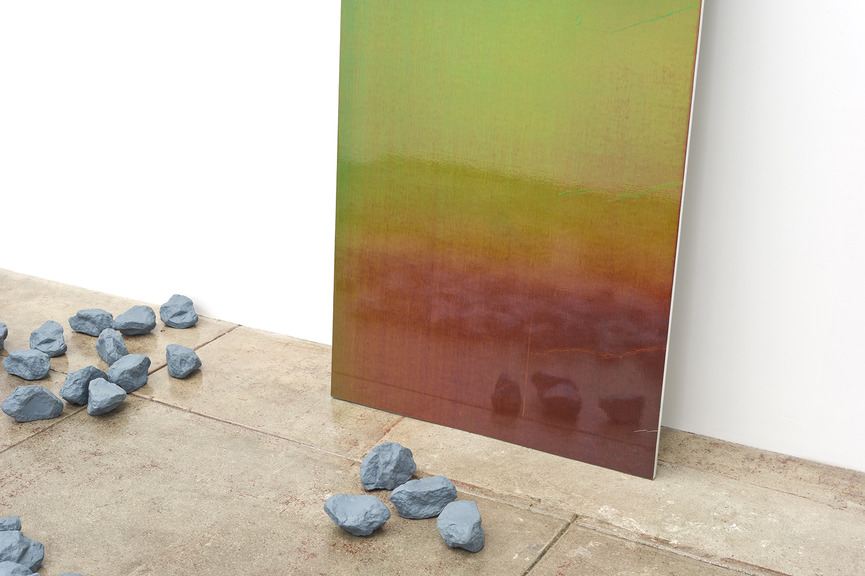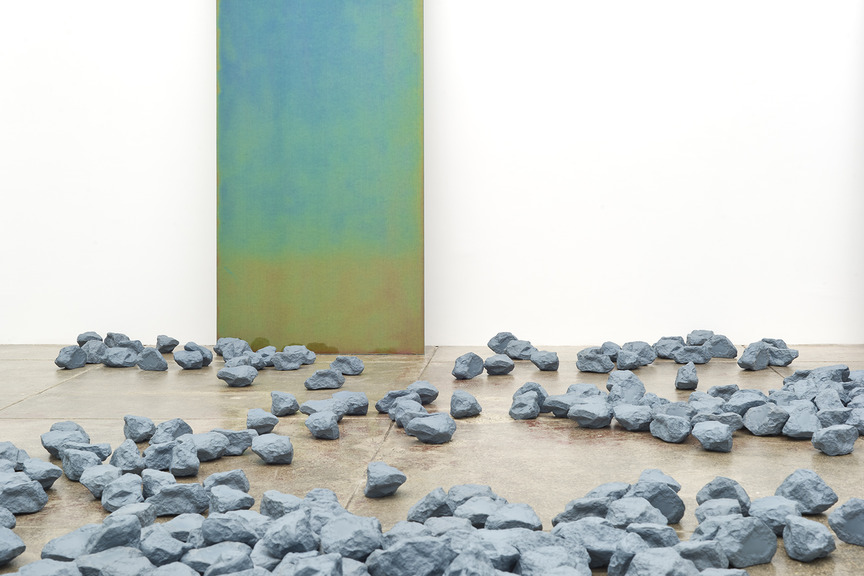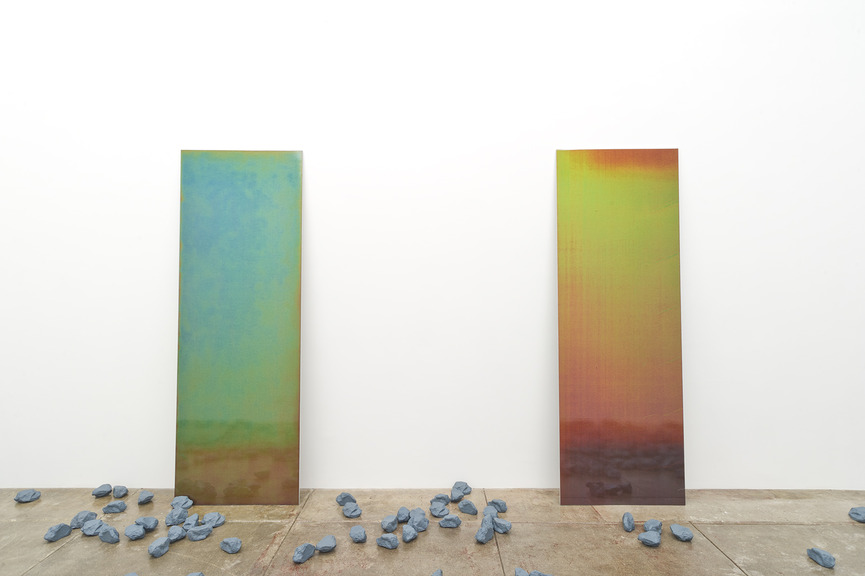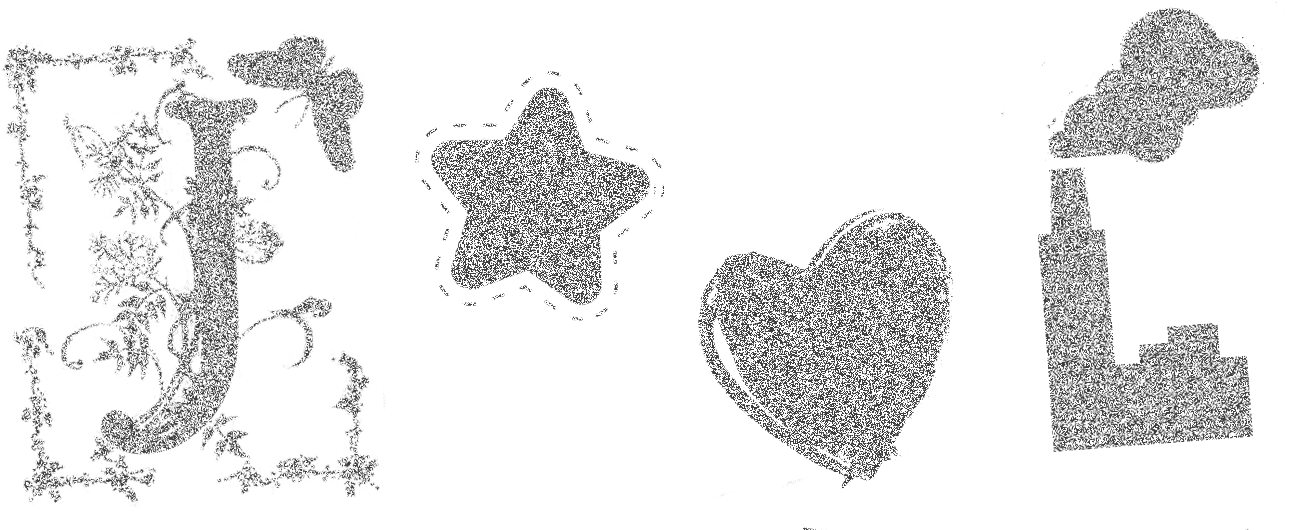 joeldempseydean@gmail.com
joeldempseydean@gmail.comNotes on the Fall of Emphasis
February 15 - March 23, 2024
Derosia
If you're reading this, we're doing it again- beginning with the end. The thing's afterthoughts have been shaped into its introduction. Words of summary reordered into preview. Our ritual of looking forward by looking back has come full circle. So let's look back, back to the future. The date is February 15th, 2024. An exhibition is opening. It's my exhibition. All my friends are there. The city's most celebrated critics are there. Members of the general public. Collectors too. You're there. We're all standing there, together at the edge of time.
And who was it that said the only reason for time is so that everything doesn't happen all at once? Who was it that told me the Earth's axial tilt is 23.5 degrees? That it spins at just over 1000 miles per hour? The fast life. Life at a diagonal. Up and Down. Simultaneously and in succession. Dramatic. The heavier the engagement, the harder the engagement can be to accurately locate on a timeline. Duration warps in scale as it's weighed down, held in place by memory. A future unfolding in retrospect reveals the mirrored perspectives of many new angles. Crystalized. Self-reflective. A change of pace. Beautiful. A song.
For that matter a coin; a coin so beautiful it can't be circulated. The total absence of value minted in a timeless way. A procession of countless deposits in the memory bank spin motionless in a limited time forever. Life on a global scale hangs in the balance of heavy light. A frequency is accelerating in its current form while this type of vibration is spelling out how things become other things, like an oscillation generating a buzz.
Can you remember where you were when it first leaned forward into the bent crook of a slanted, upward-angled arm, while raising the opposite arm out straight in a parallel direction? What bomb-born sad celebratory bow pointed out to the sky some twenty-thirty years after the fact allowed itself an echo? Hiding its face with the grandness of a piano as it seeped through the years gathering this now. With each fall harder into the future because over time gravity consolidates into a single key.
And entropy also increases with time, so it might be time to ask ourselves- how accurate can any clock be? A forward motion reveals the slant of its approach. Like a second hand tracing the curve of the horizon as it leans into itself, rhythm is a graceful conductor. Even so, nobody has the developmental tools to deal with the end of the world, maybe that's what all the fuss is about. Maybe that's why you're reading this, why we're doing it again- ending with the beginning.
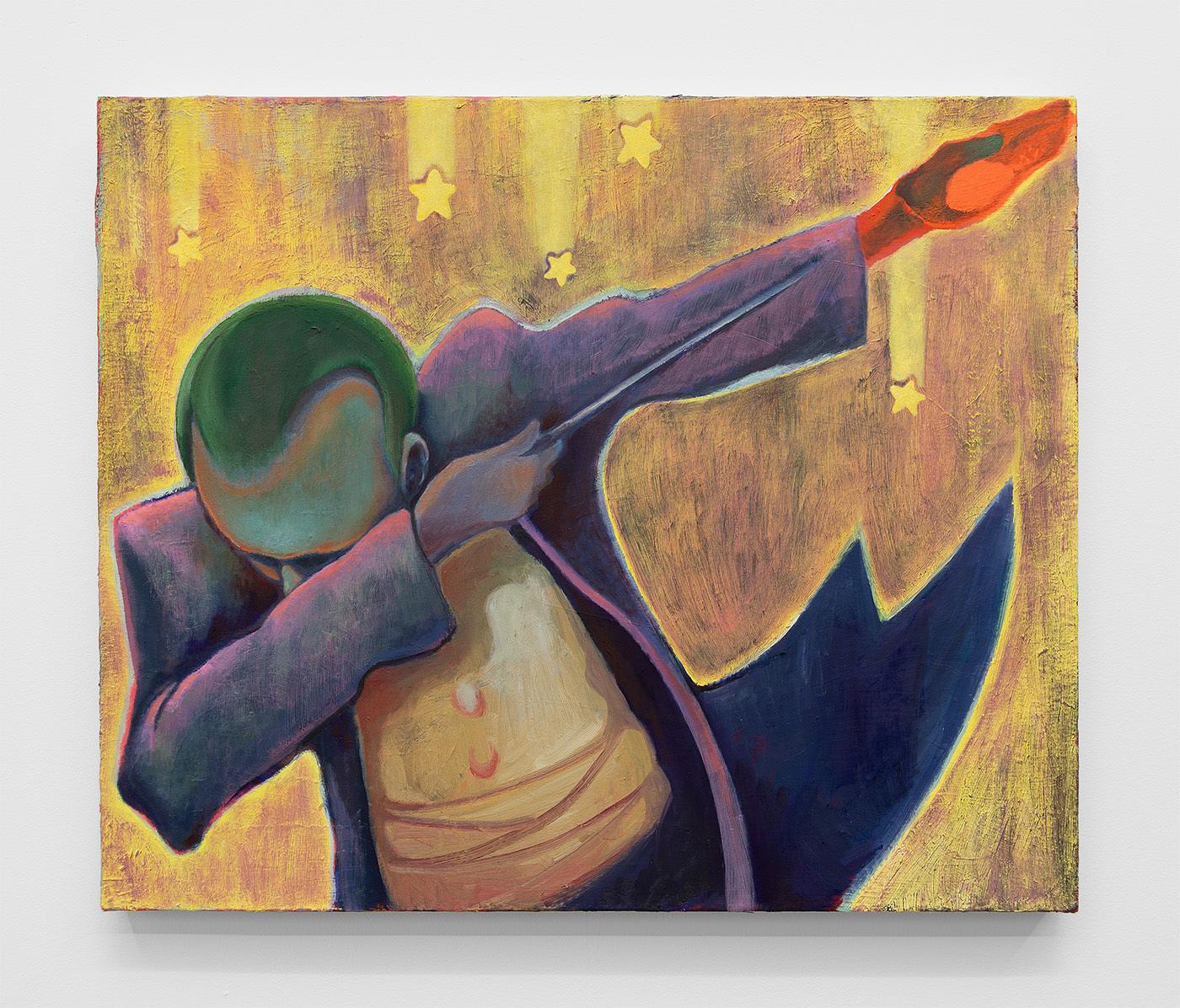
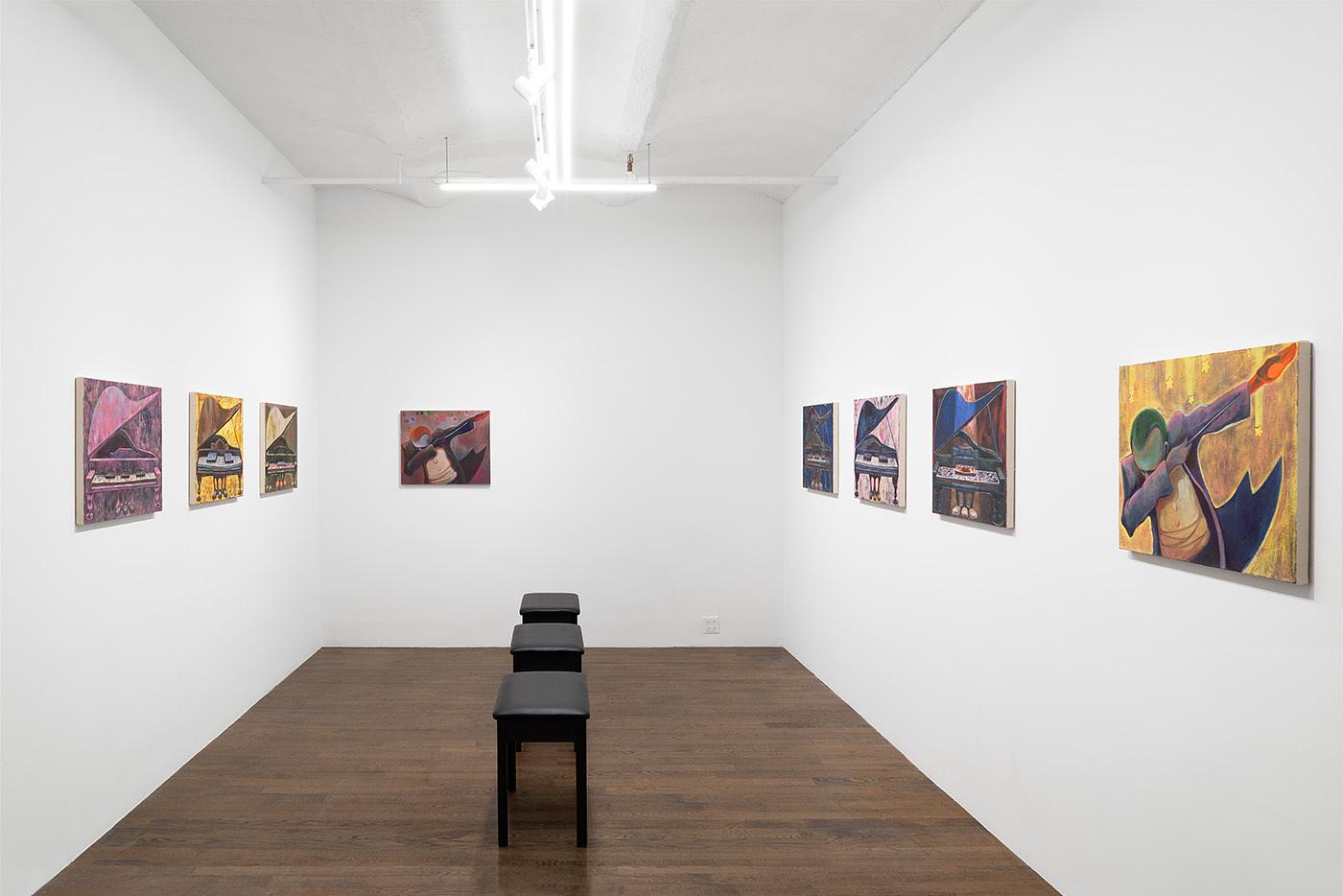
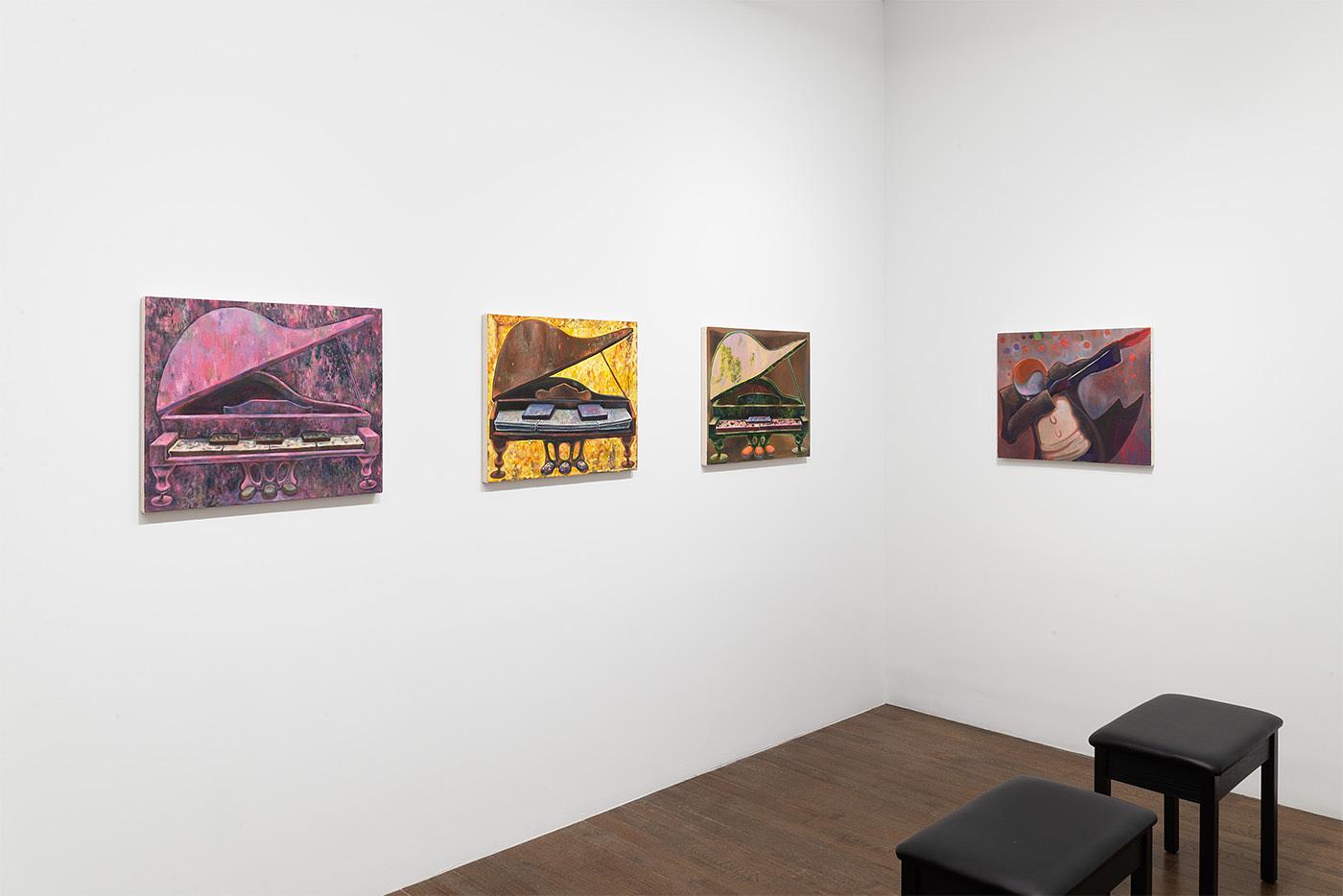
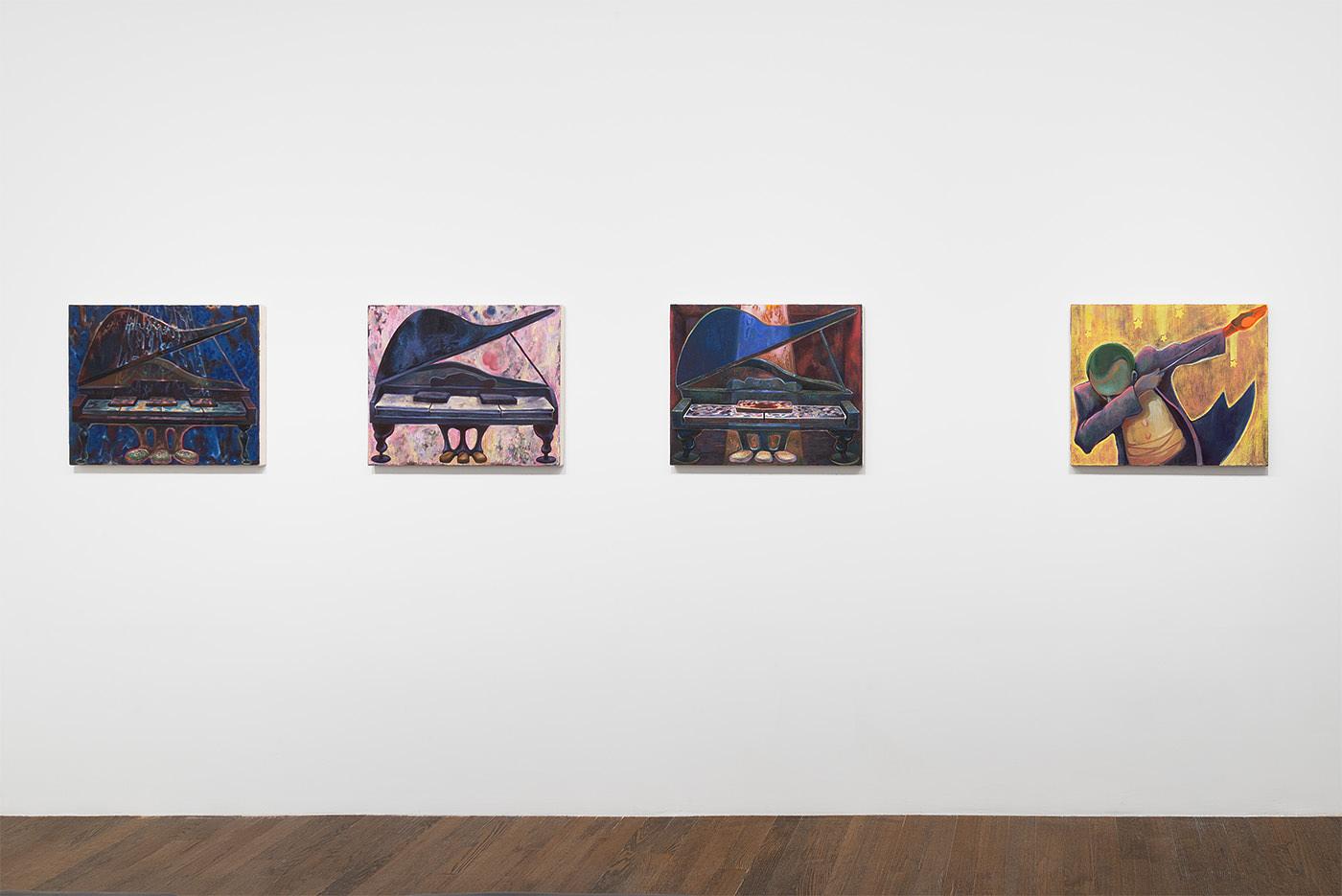
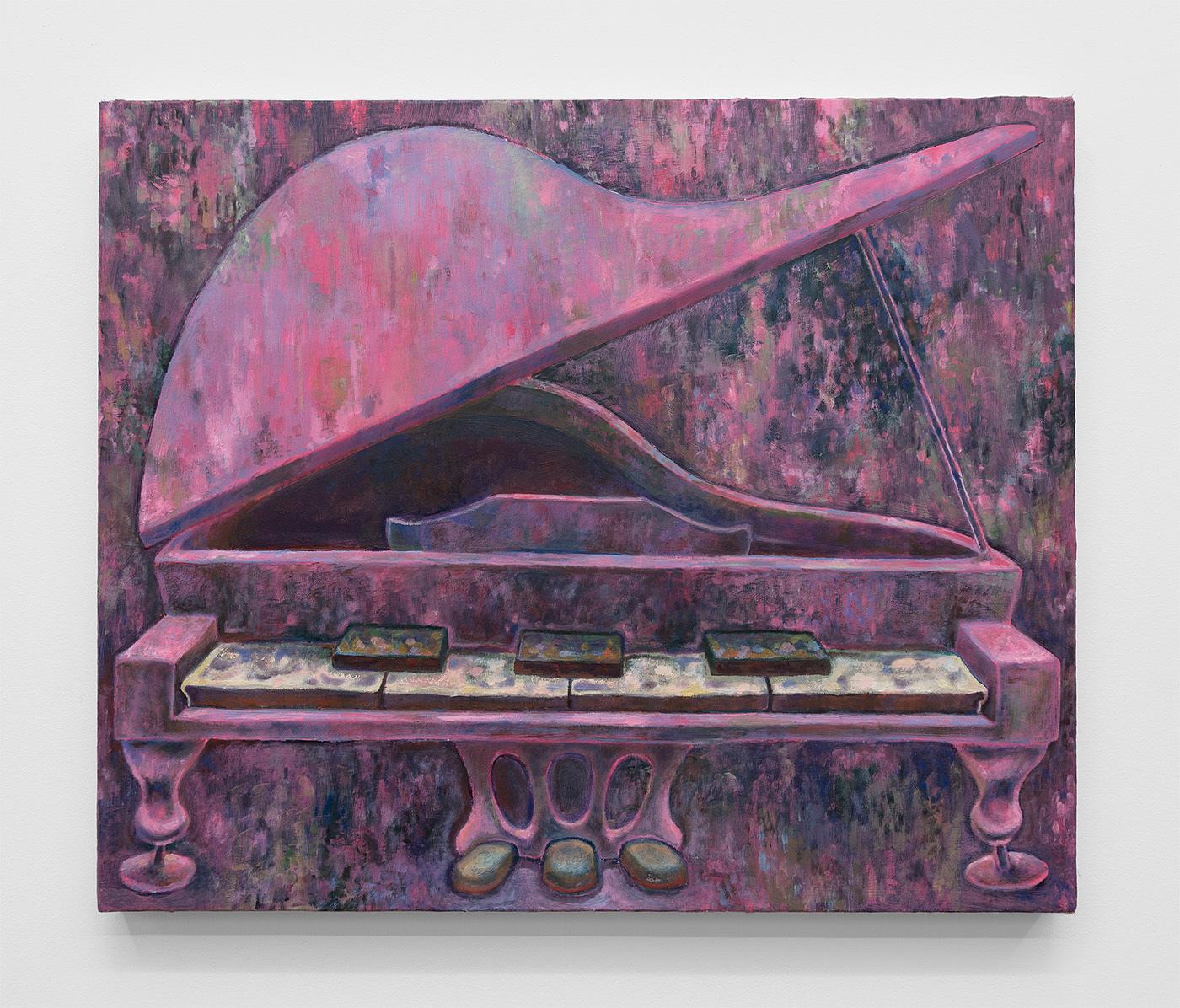

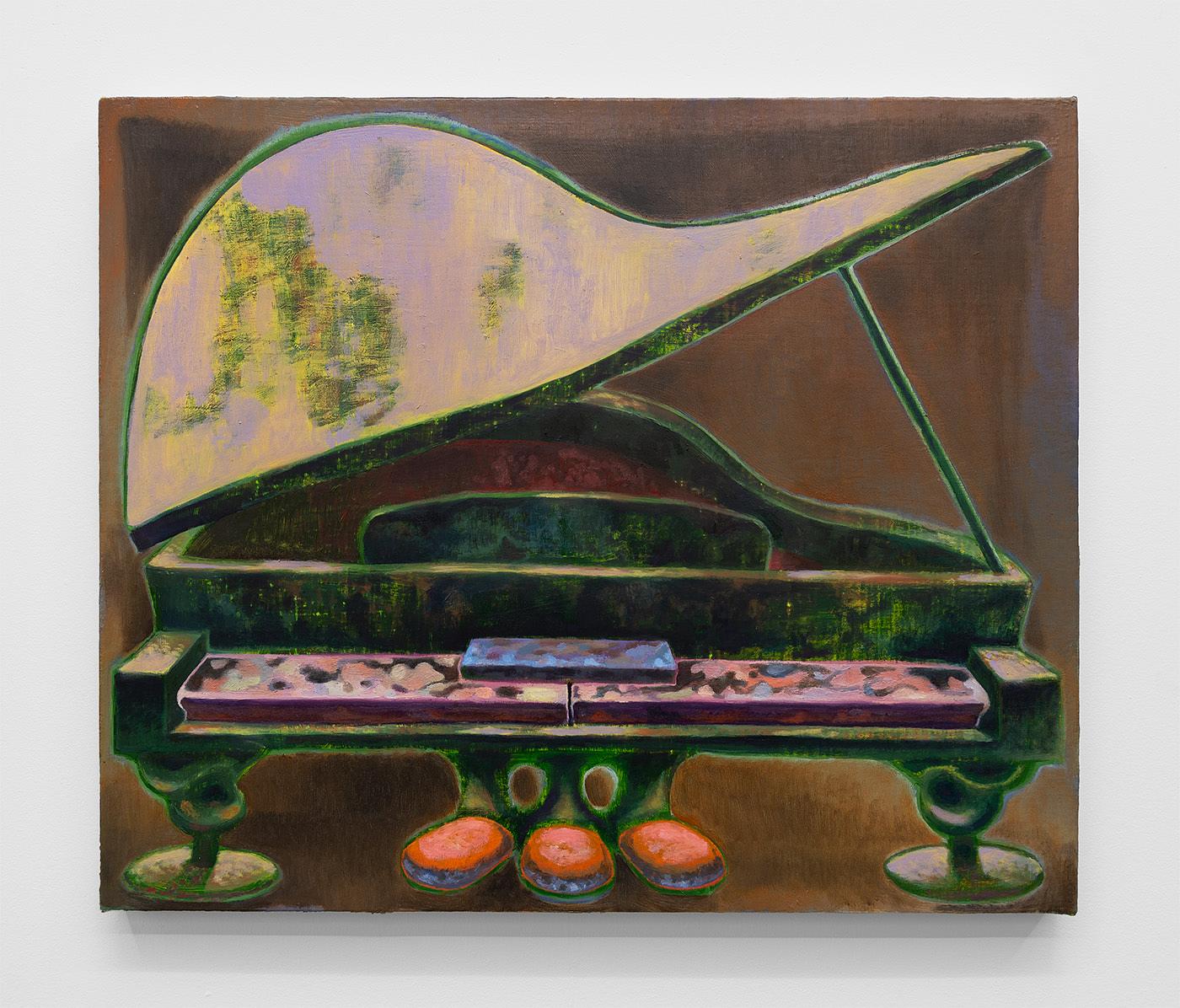



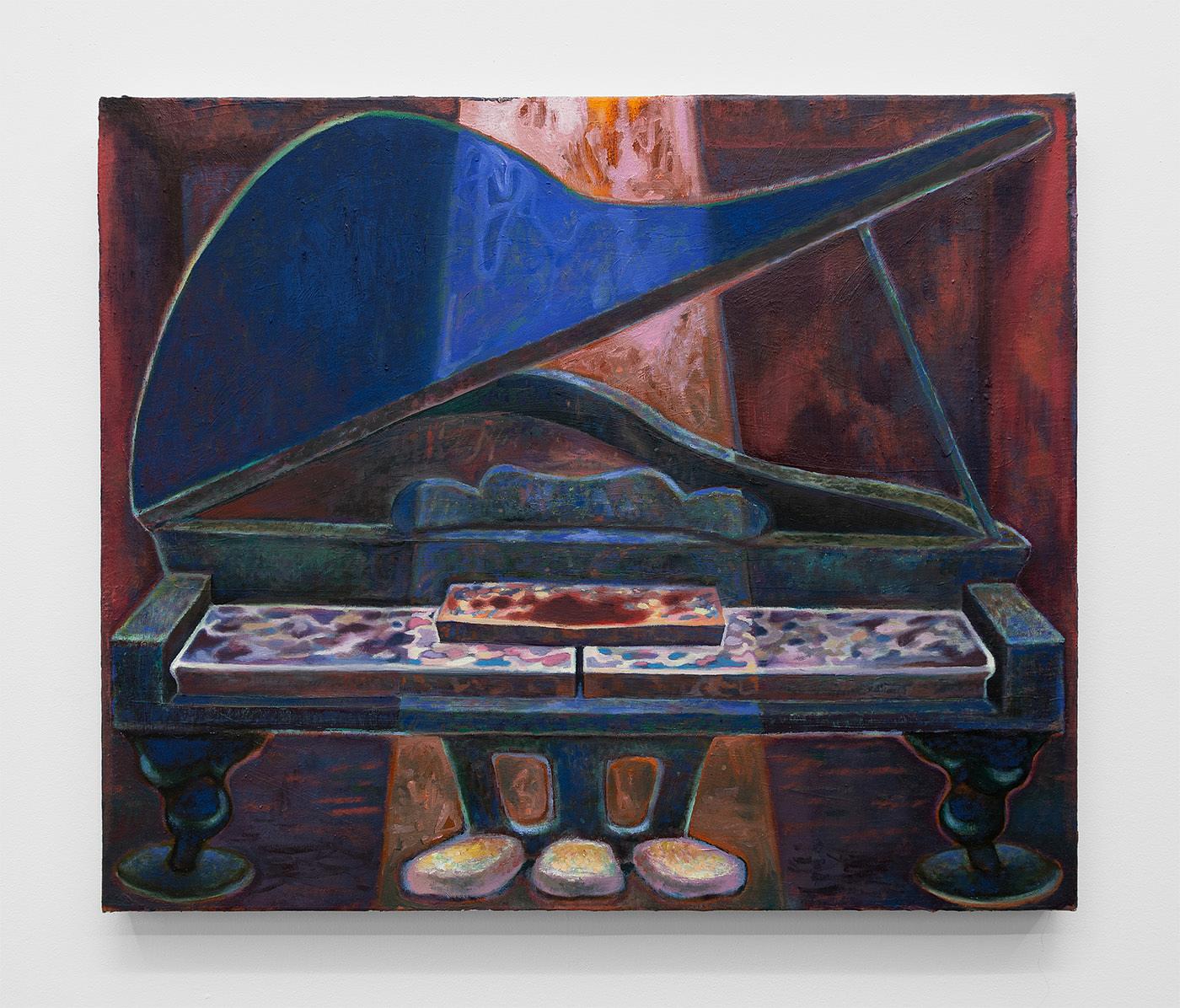
2020-2023
Three surgeons examine a body in an operating theater. Consulting their notes, they prepare to perform surgery on a patient they believe to be mostly hollowed out. The patient's remaining vital organs are just barely visible behind iron bars running the torso, loosely containing a melting abdomen. The surgeons begin to talk. Their chatter is noted by a taciturn scribe who has been tasked with creating a record of the operation.
"I was taught that every body tells a story. This idea has always informed my practice," one of the surgeons remarks, scratching his head while staring blankly at the operating table.
Another surgeon replies: "Is not every body itself a story? A story of being, with minorly varying subtexts?" This comment intrigues the others. He continues: "Is the body not a self-evident narration of animacy, perhaps of consciousness and the unconscious? A boundless entity incorporated in a discrete form, with its coexisting ethereal mystique and corporeal drudgery constantly bringing into awareness its role as a mere container for something larger than itself?" The body on the table spasms; it looks more pallid and leakier than before.
"This story- or even the very notion of it- which you're suggesting as being a unitary tale of life indexed by the body, began somewhere, don't you think?" the scribe pipes up.
The third surgeon remarks, "To my knowledge there is no story of storytelling's origins. I wonder...what would be its first lines? In the beginning, in the name of, once upon a time, He who has seen everything, or I will make known..." They were well versed in "the classics."
The first doctor speaks again: "I think of cave paintings in lieu of written or spoken stories- the ochre stencil of two Neanderthal hands in the Maltravieso cave, or the hunted bovines in Indonesia. They feel more bodily, being the first traces of you will remember; this-a life- was; here is a story. Anthropologists have also suggested that cave paintings are not recordings of a history or past, but rather represent attempts at manifesting a future: the successful hunt or continued lineage of a species." The patient groans despite being unconscious.
"If we want to think of the beginning," the second surgeon interjects, "we must consider letters, which are images themselves, among the originary qualitative informational units. The first letter of every Semitic sound alphabet is aleph, which also denotes the quantity of one and the beginning, as well as both the singularity and infinity of god. In Jewish mysticism, the aleph was inscribed on the heroic golem's forehead, giving life to a clay shell. Likewise, all storytelling is the animation of something-a moment, a fantasy, a form- that has died or never lived at all. There is a beginning of every story, instituted by a letter, brush stroke, utterance, or sex act. There is a relation between artistic, biological, theological, and psychosexual genesis narratives: the tracing of life force; wanting to know it, and for it to be known. We desire a speakable answer to the question, where did this (where did I) come from? And we want that conveyed in a legible fashion by a reliable narrator." The scribe writes at a furious pace, sweating profusely, frantically looking at the long-ignored form lying on the operating table.
"Consider iconic presentations of the letter throughout history. Take medieval manuscripts, for example. These books and their beautiful gold leaf letters are infected with unruly marginalia- a pious nun picking penises off a tree, a nude courtier farting into a trumpet, otherworldly creatures cavorting across the page. Life, its excess and incoherence, dominates and clouds even the most basic notion of beginning, origins, or generative structure. I mean, consider our patient- "
A ghastly cry of pain interrupts the third surgeon; it is the patient, whom the doctors had assumed to be all but expired, the entire story of this body's life force coming to an end. Jolted from their reverie, the surgeons and scribe redirect their attention to the operating table, where, they suddenly realize, they are witnessing a birth. A glimmering creature emerges from the now lifeless patient. The small, new being is ushered into the arms of one of the surgeons. Everyone else gets back to work.
-Gabrielle Jensen
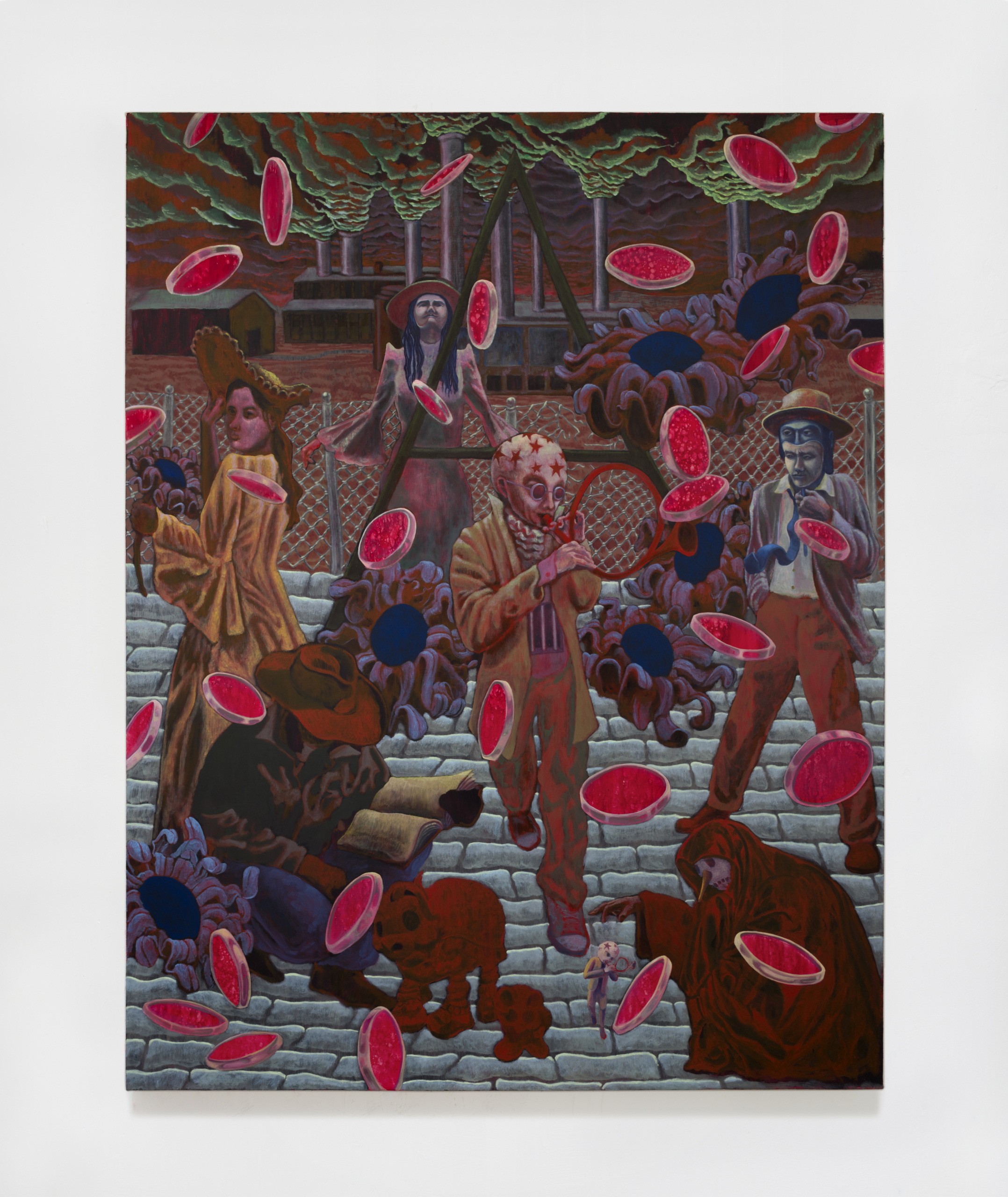
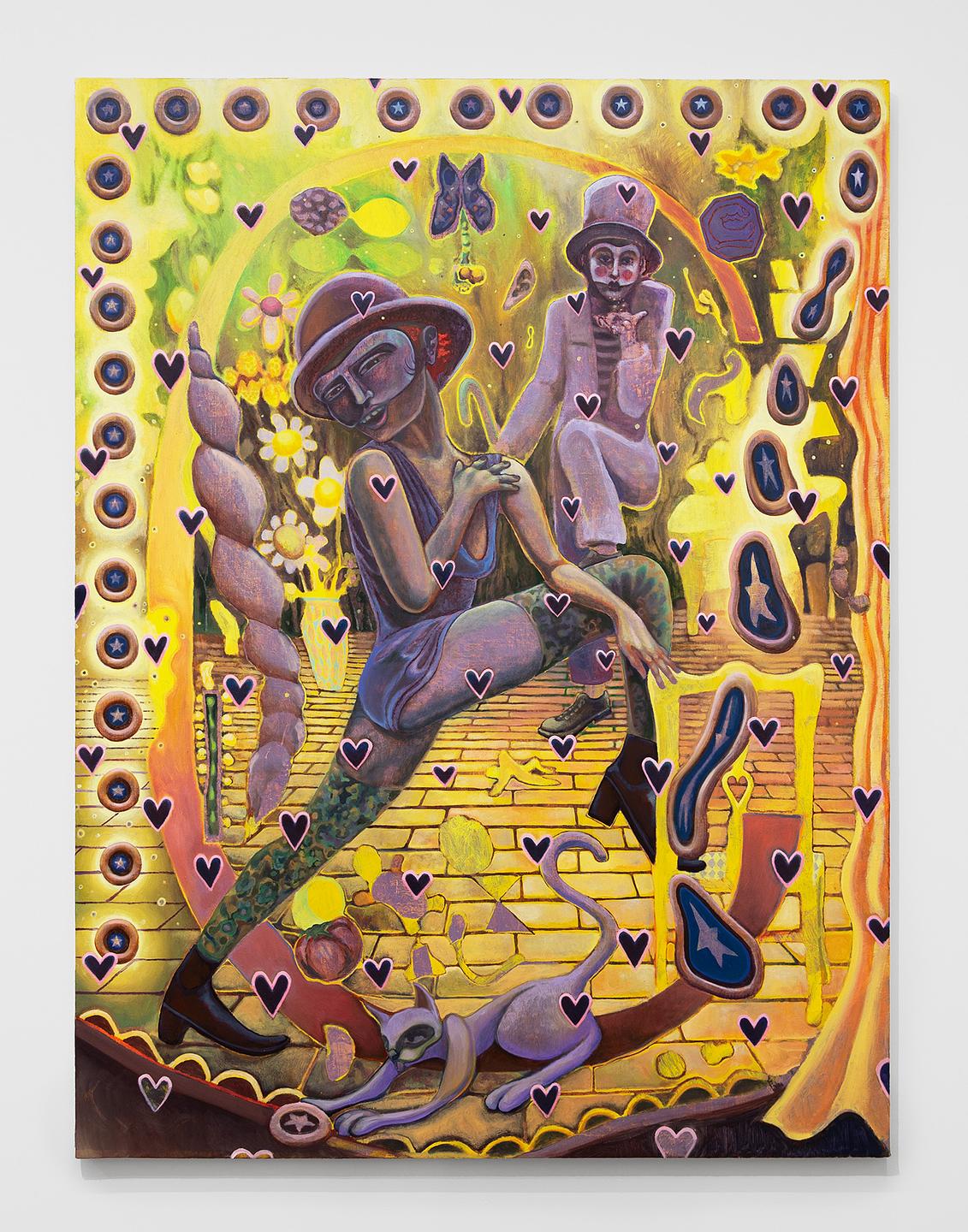
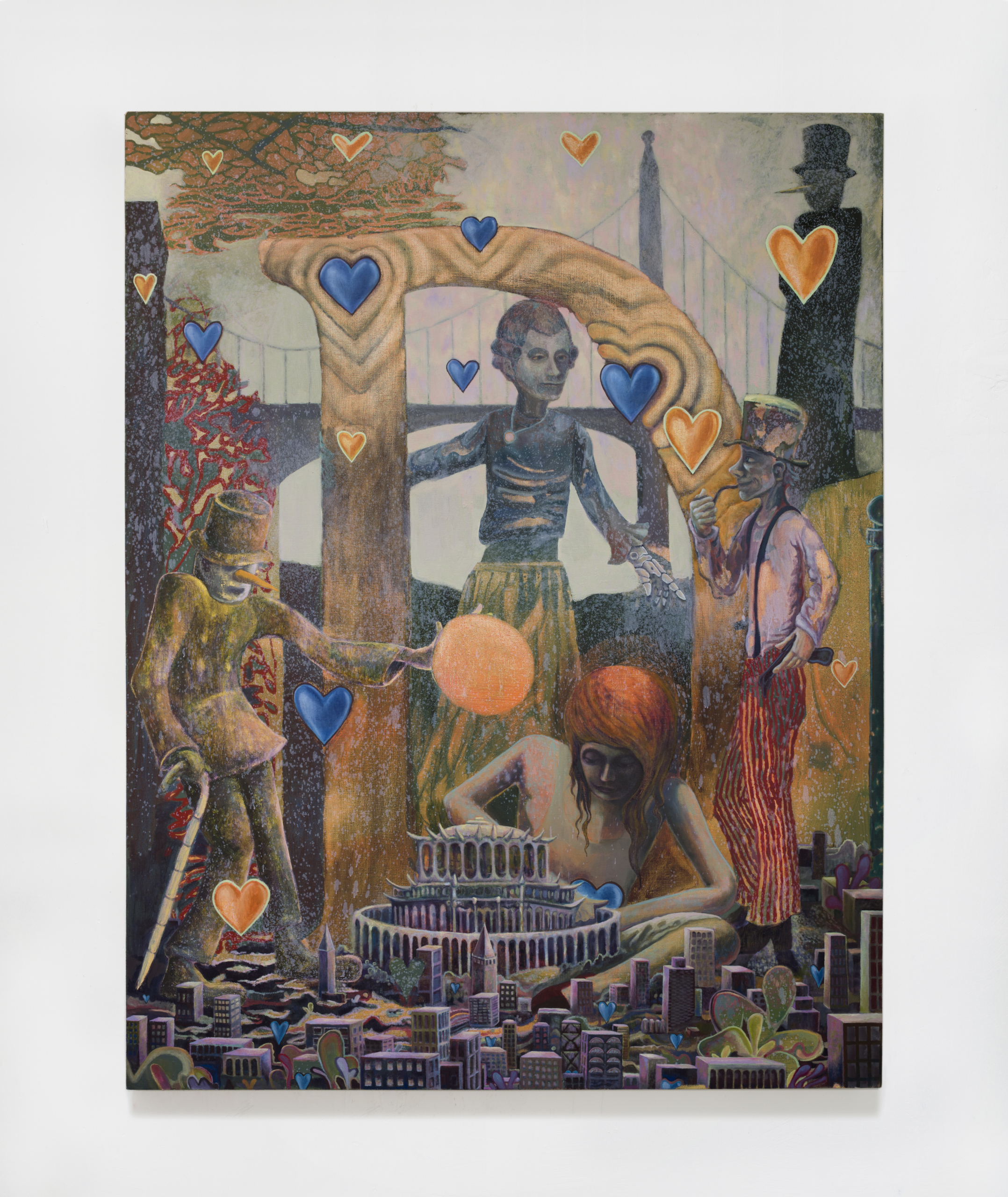
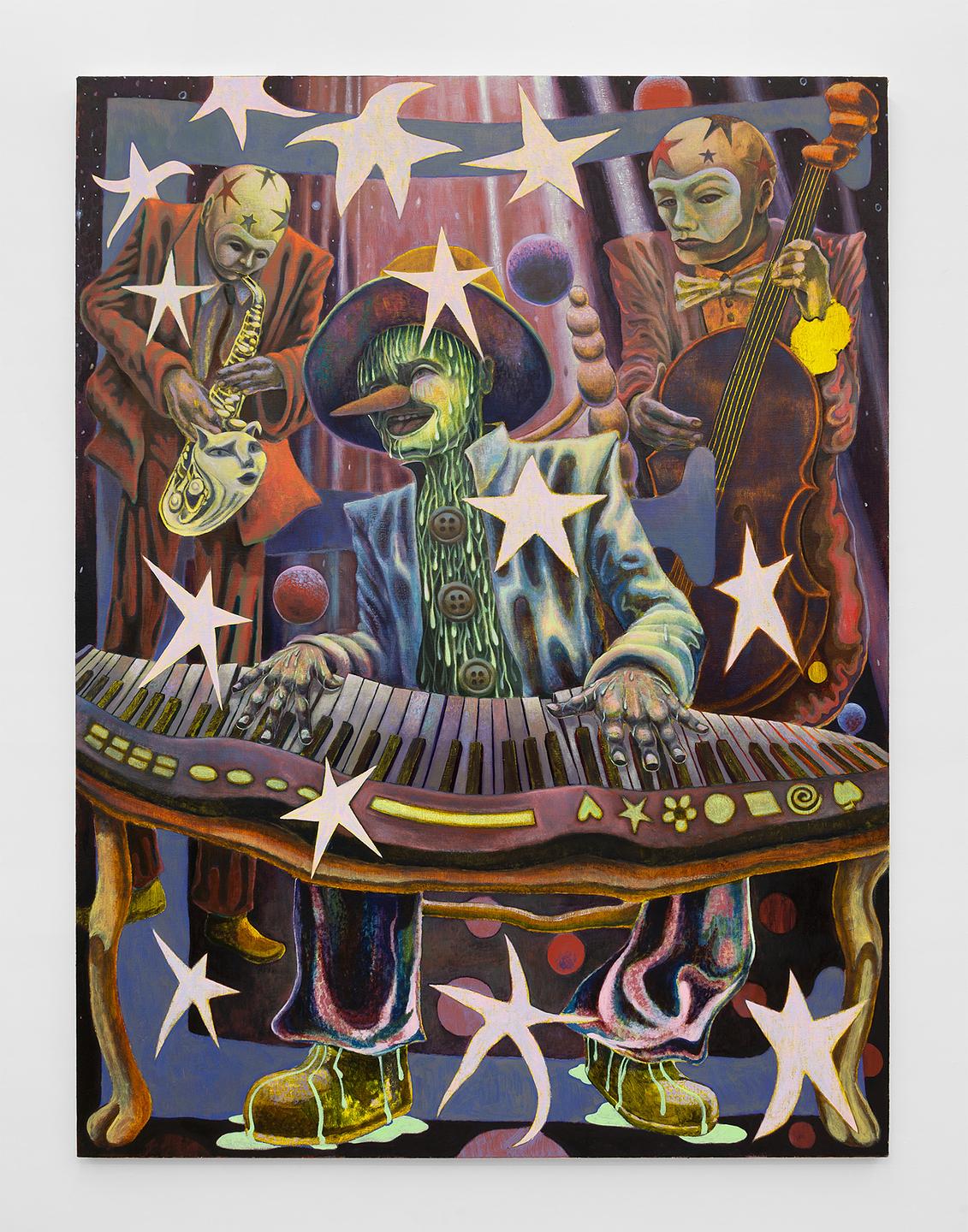
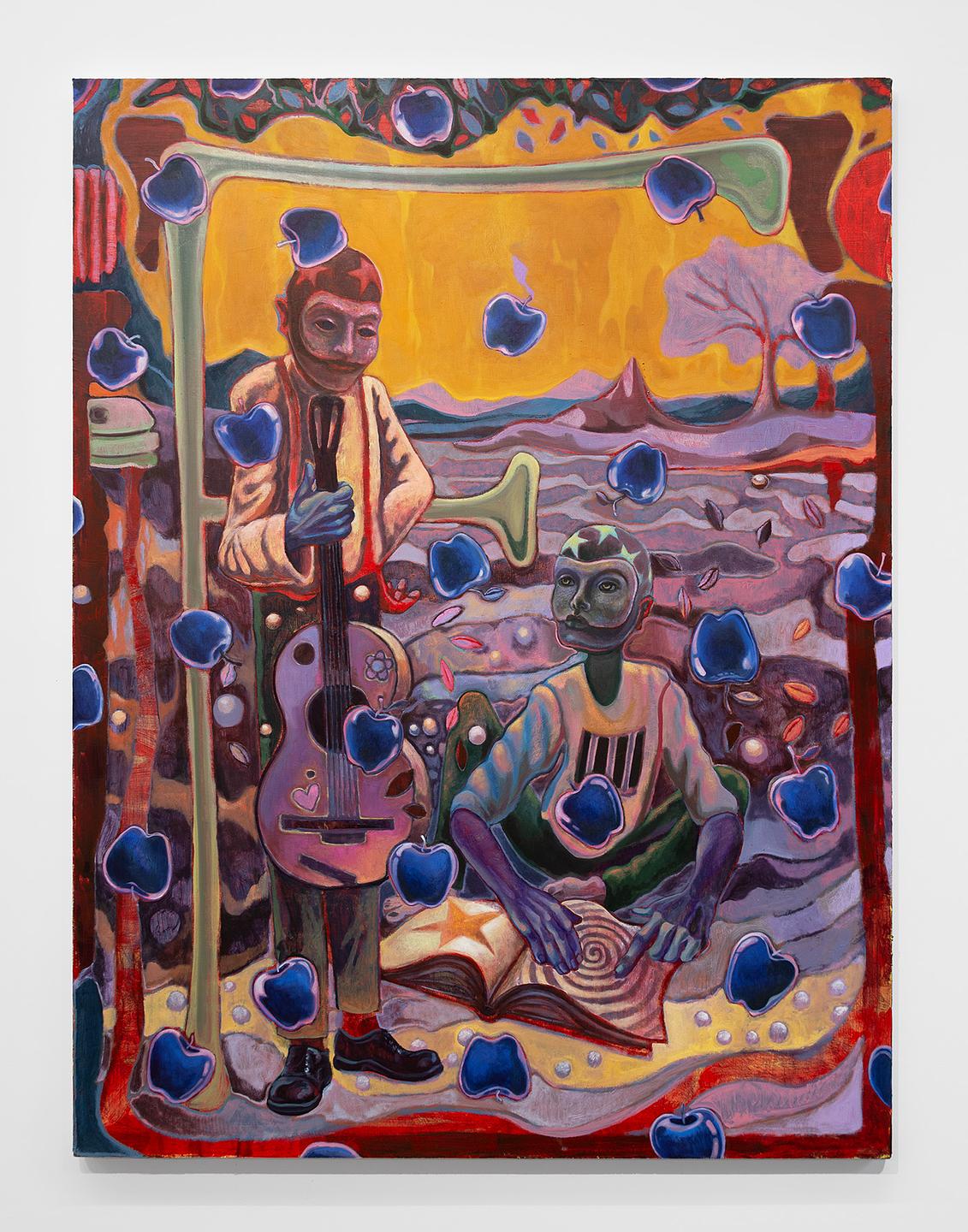
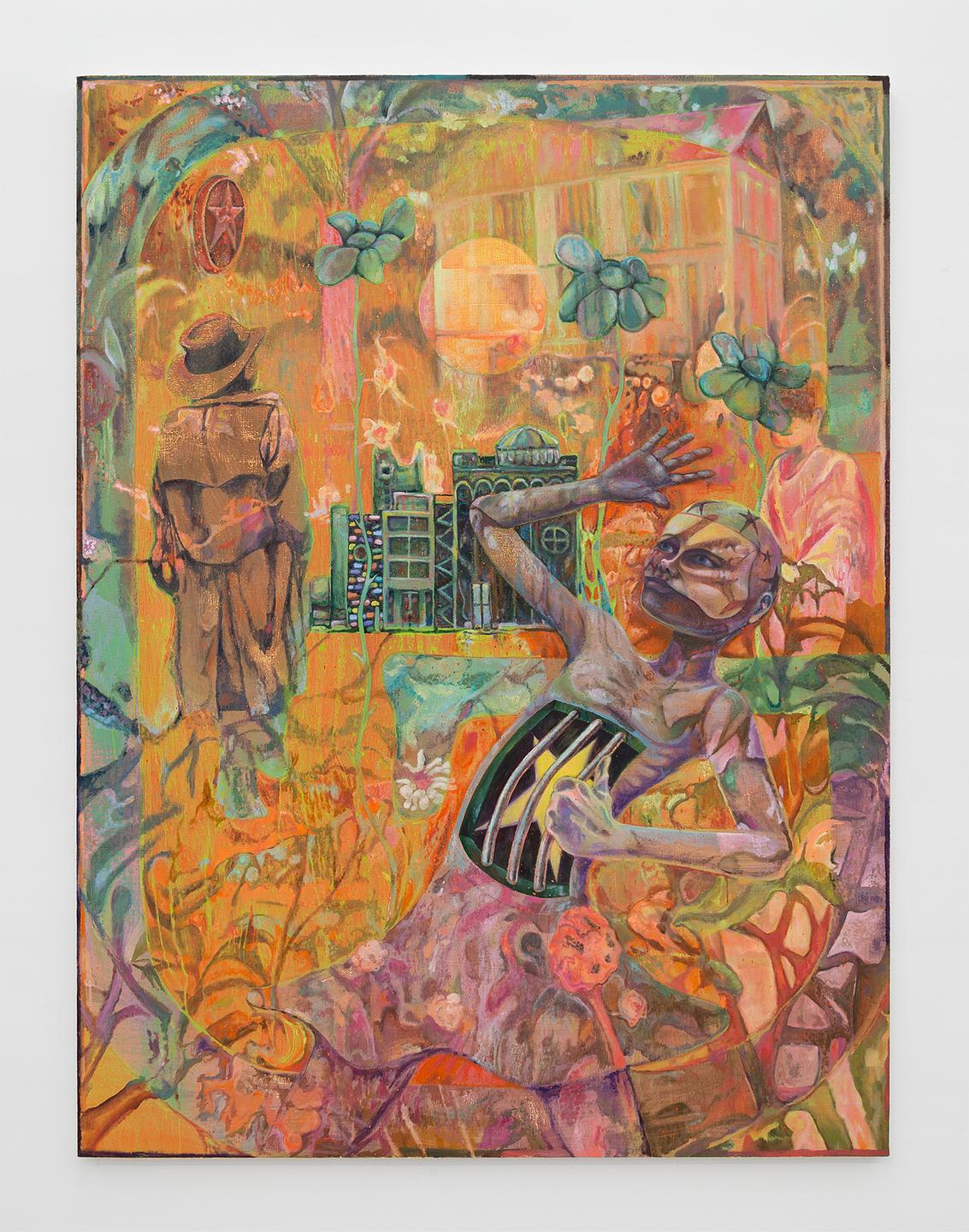
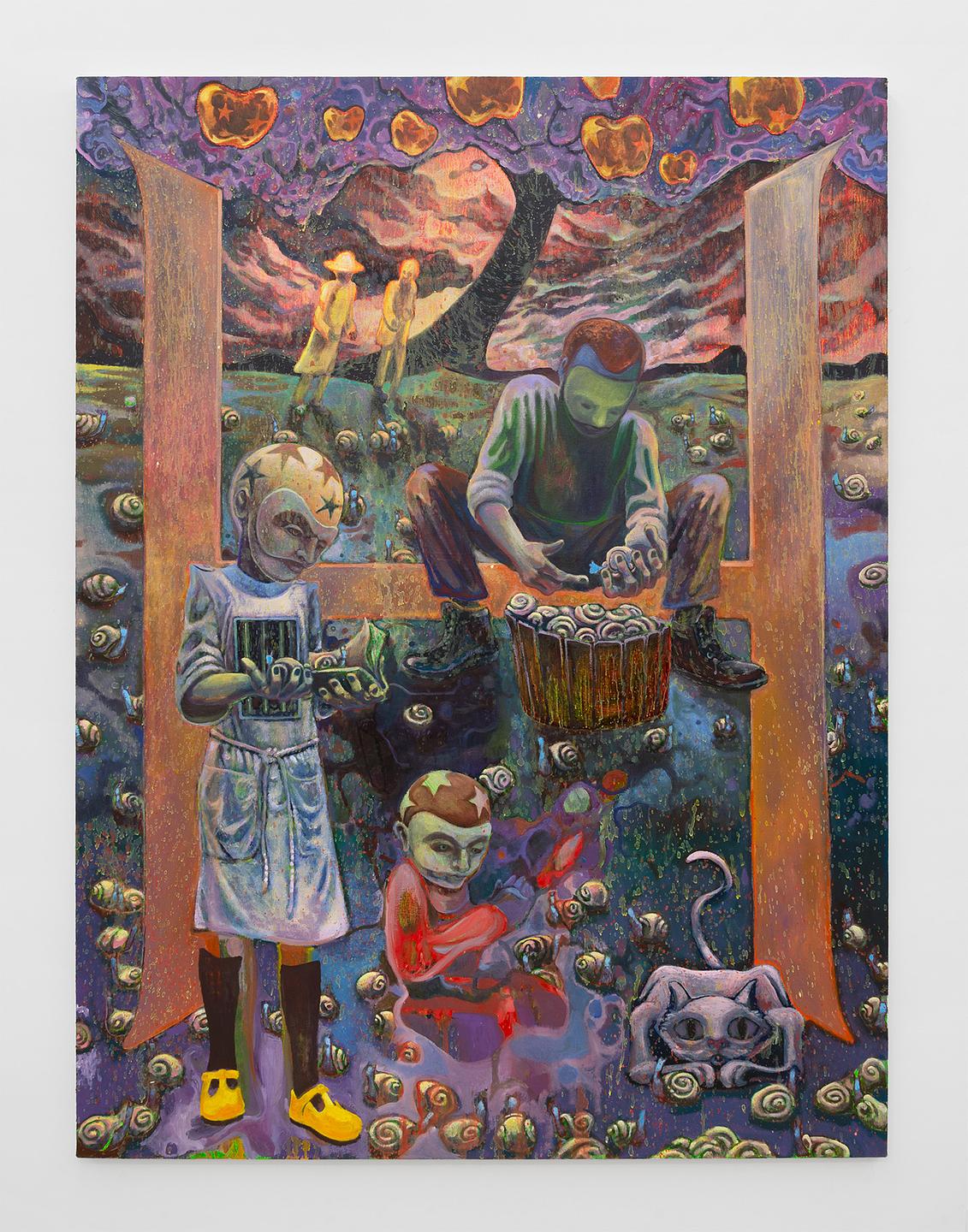
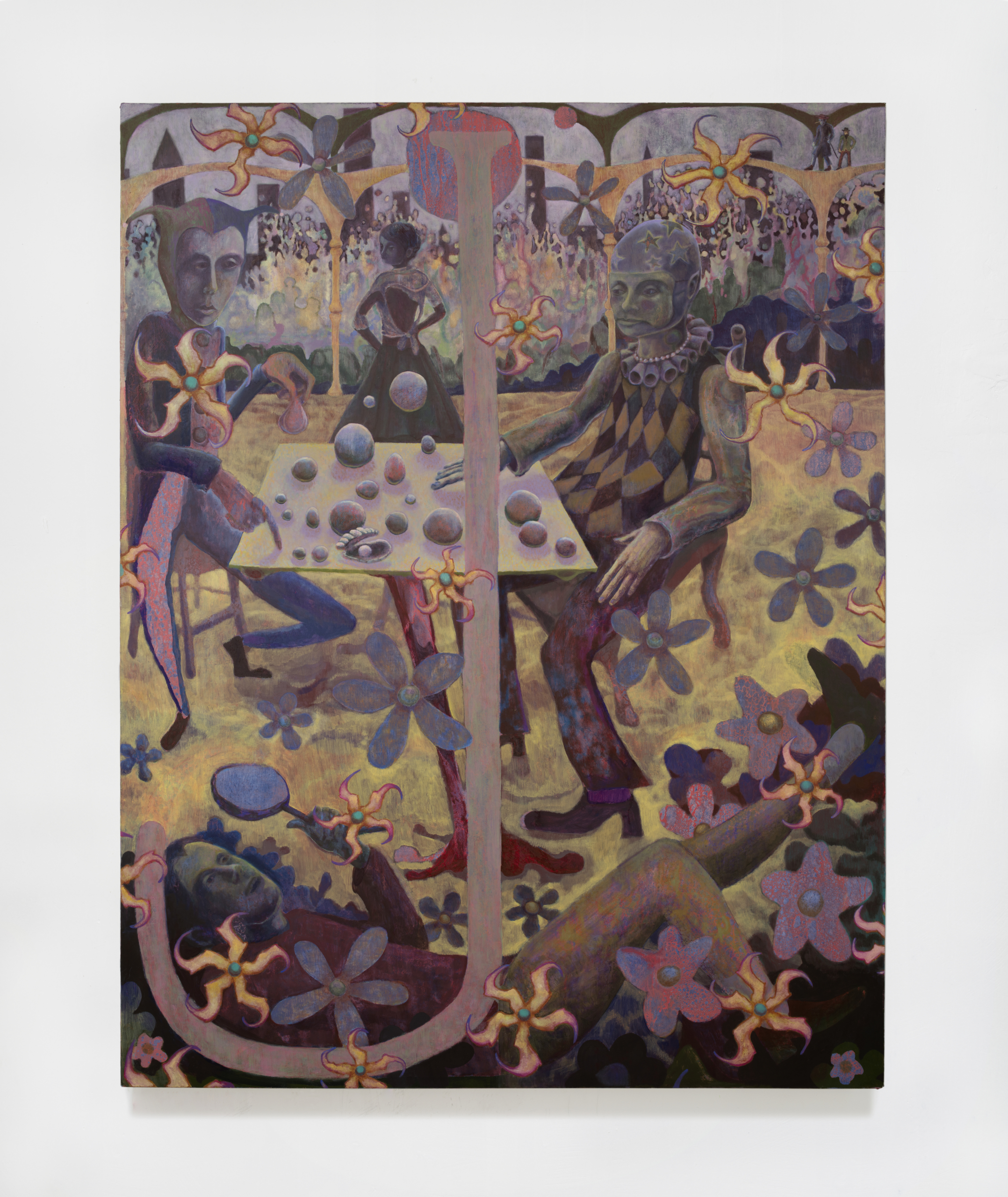
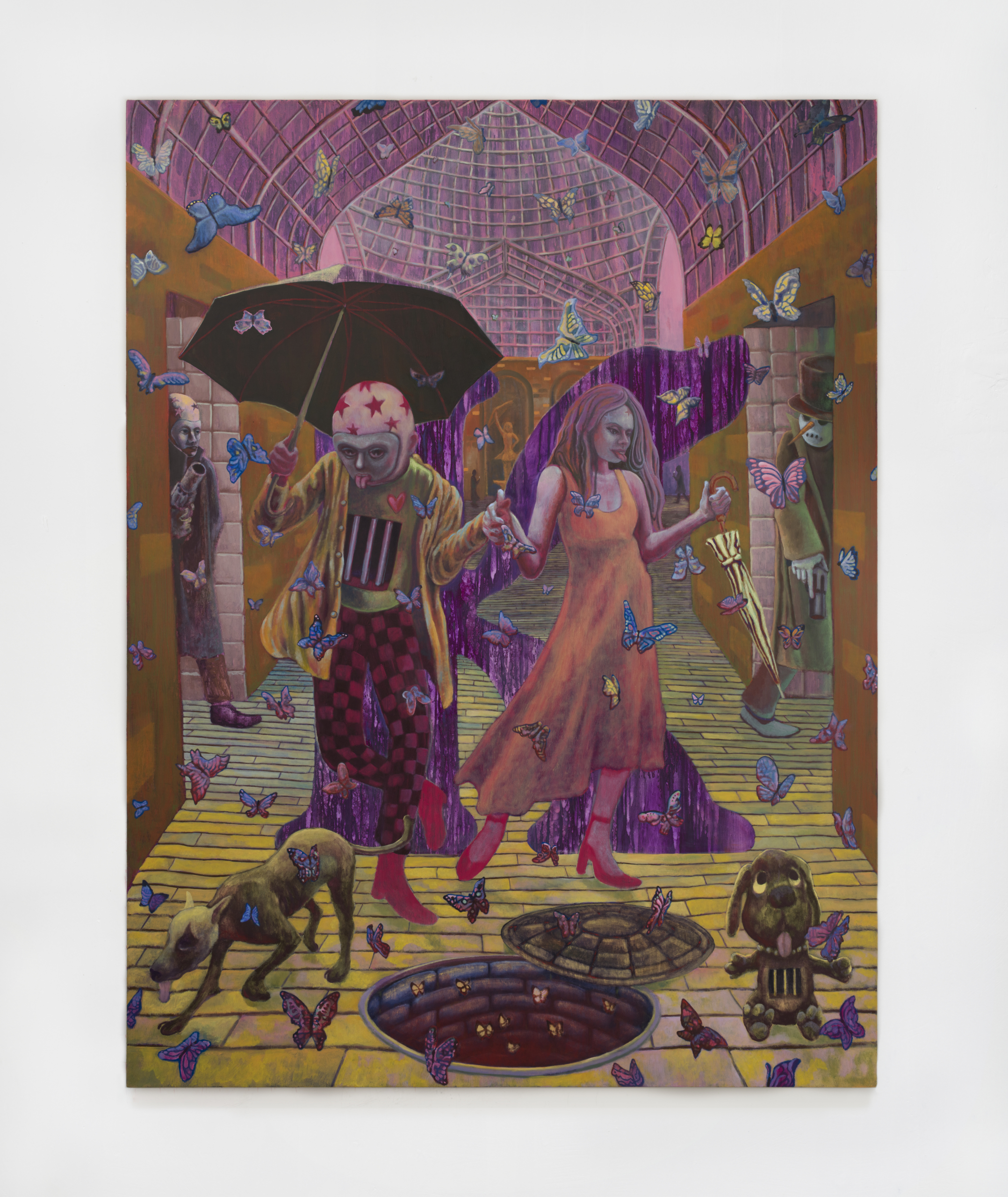


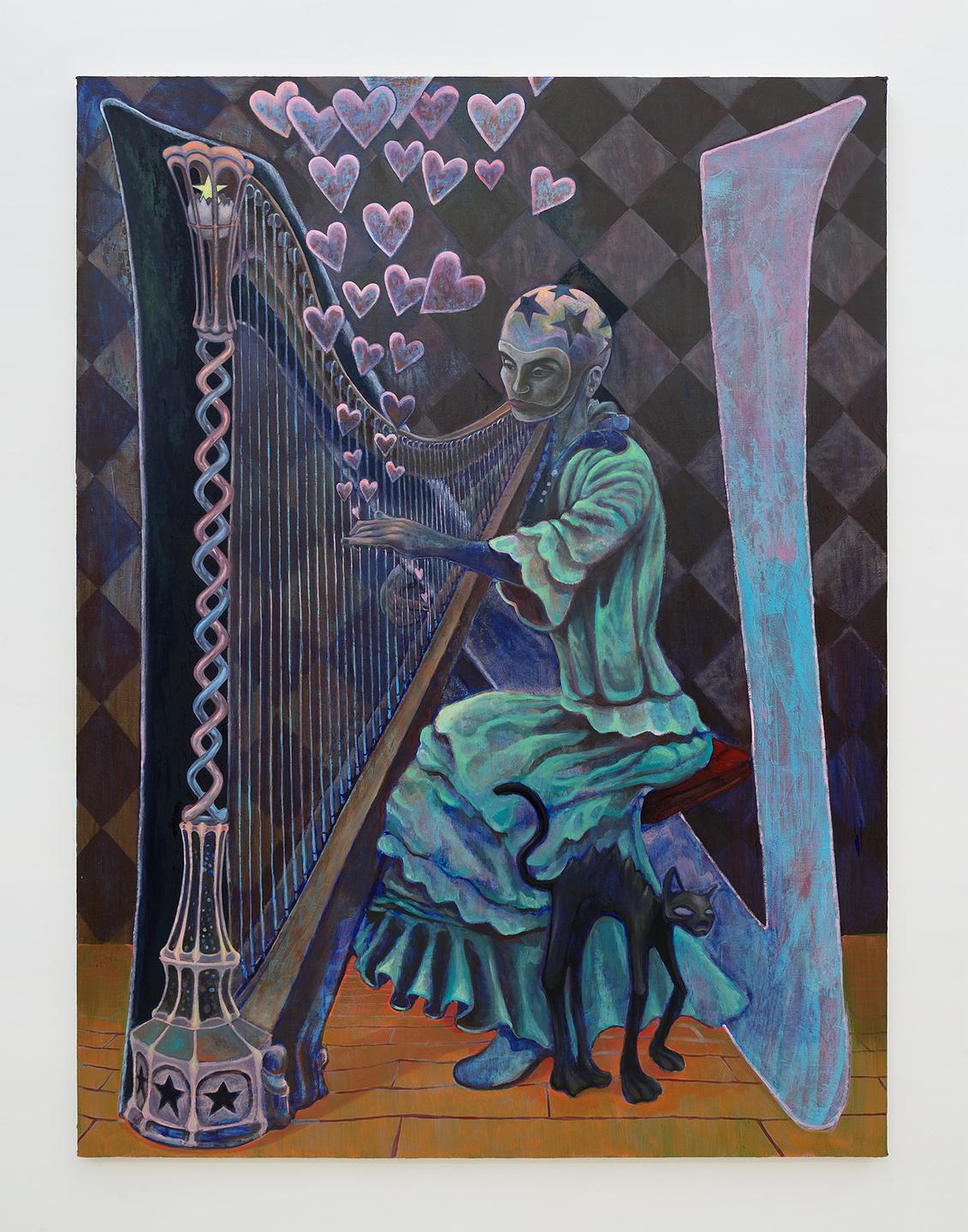
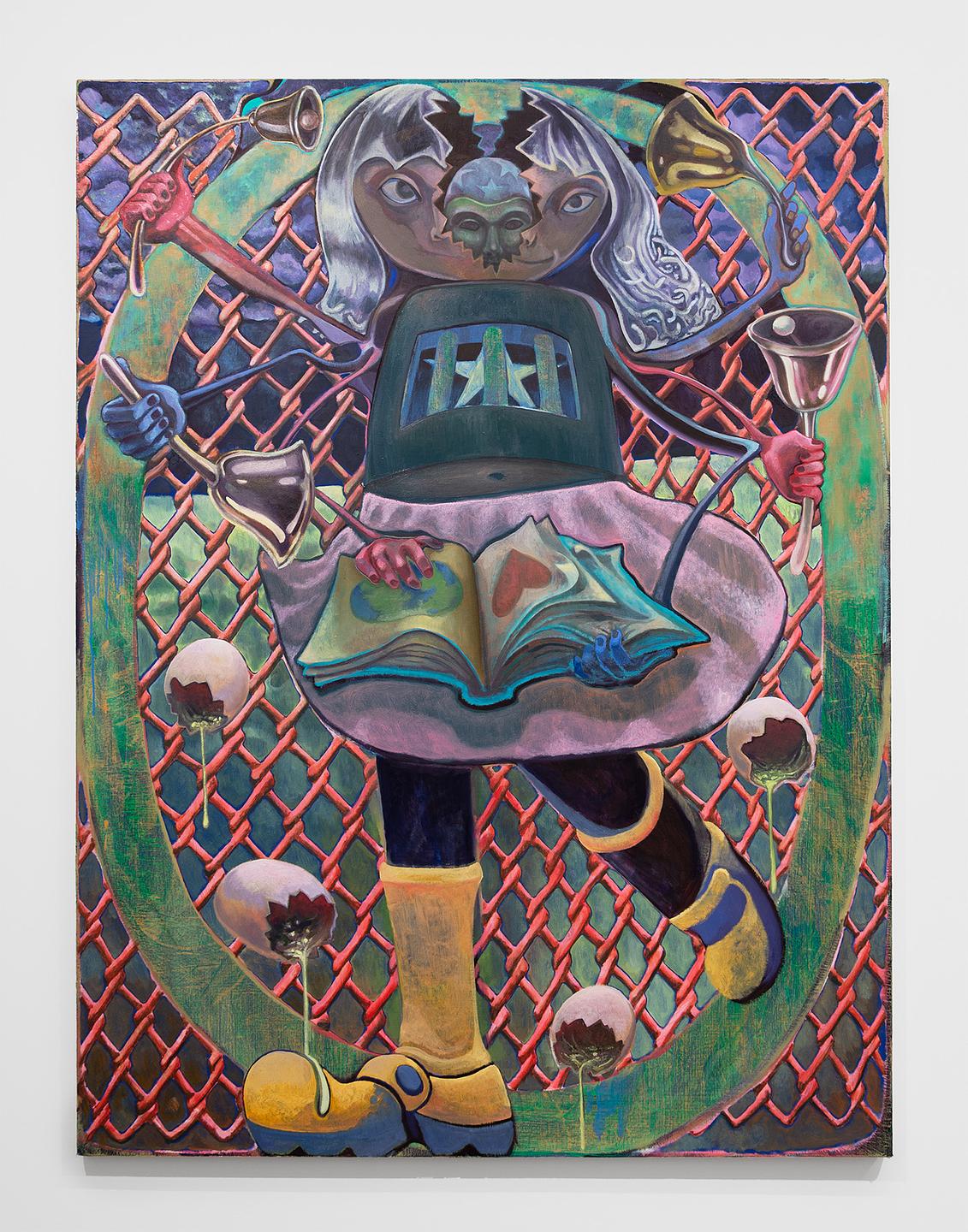
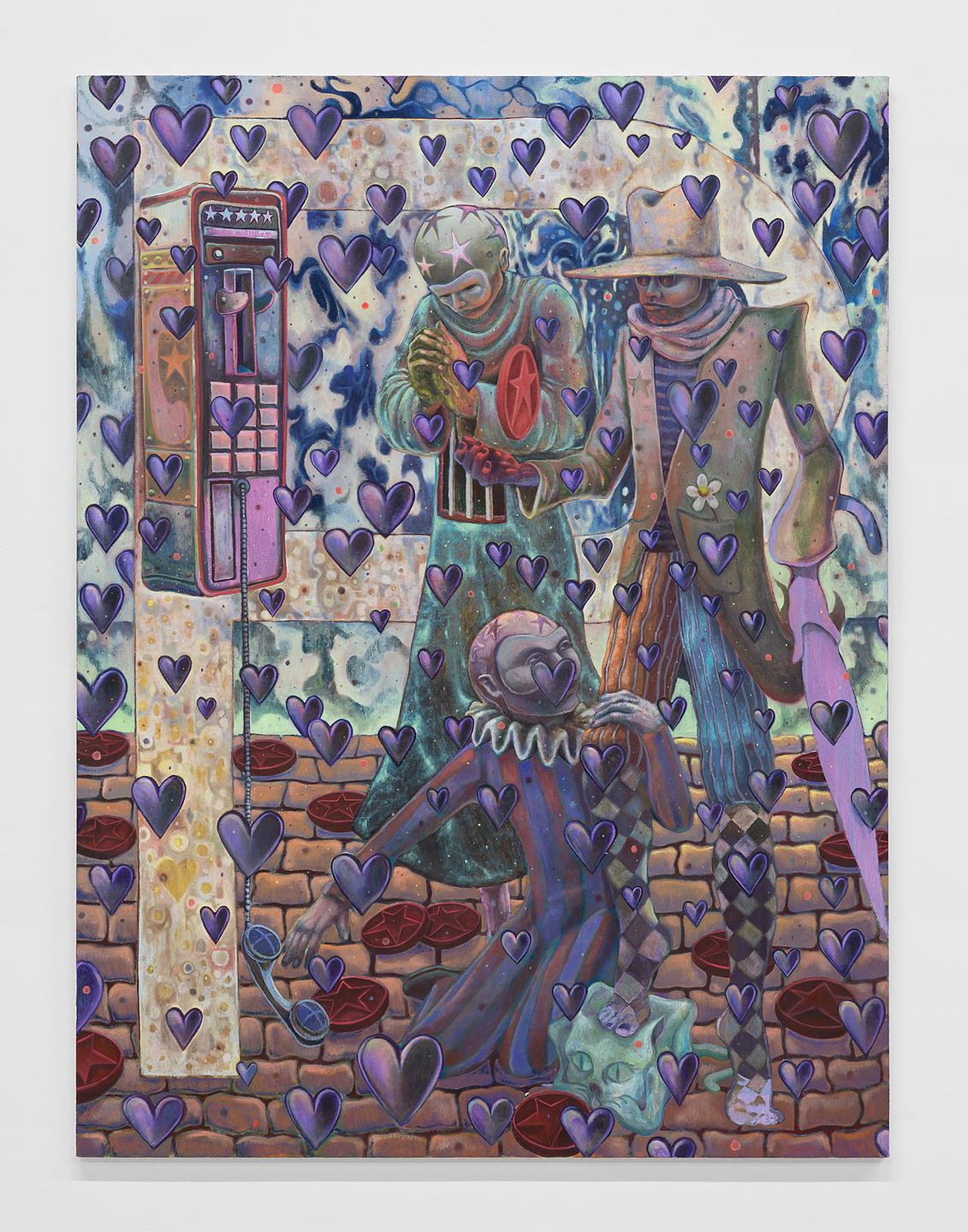
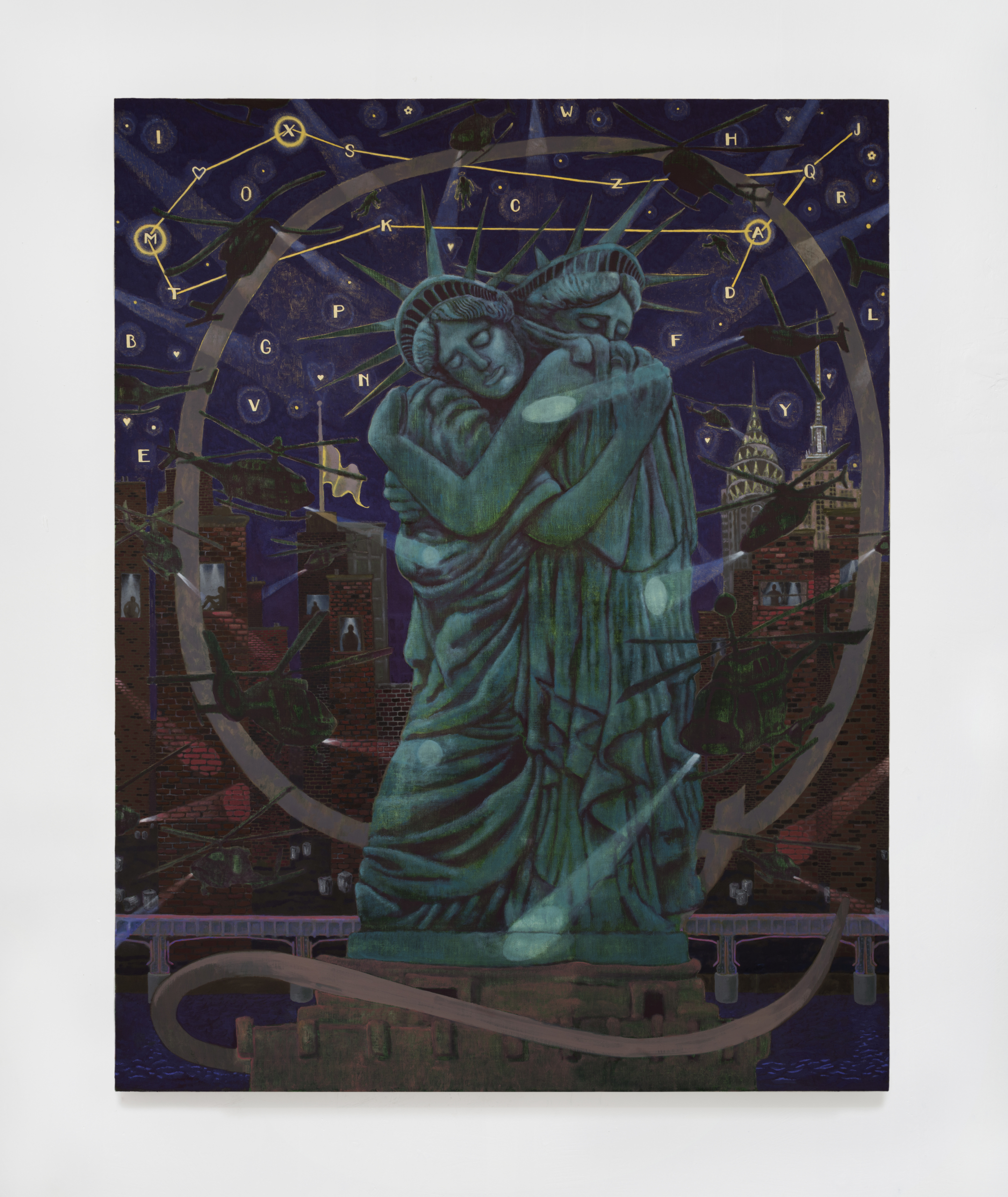
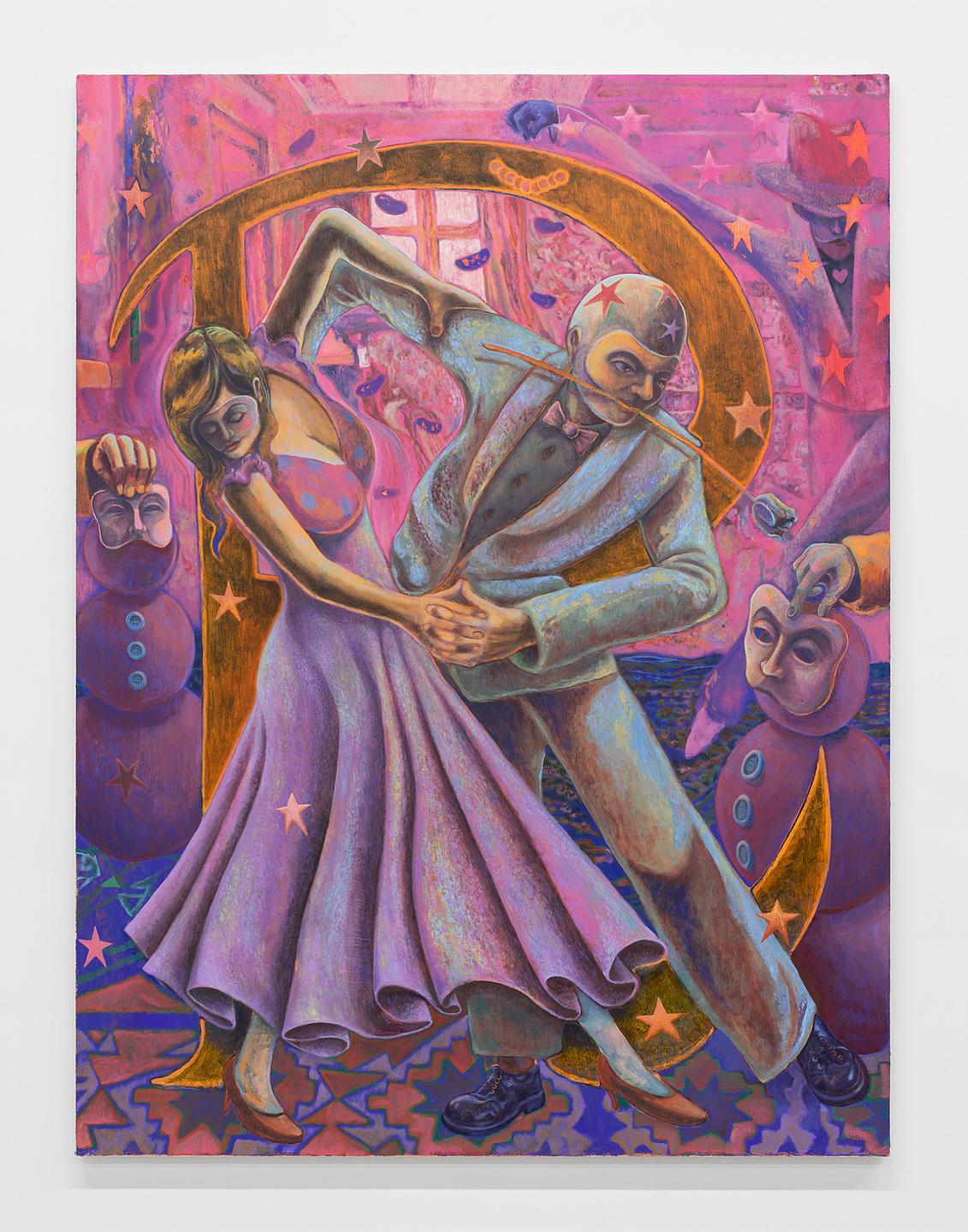
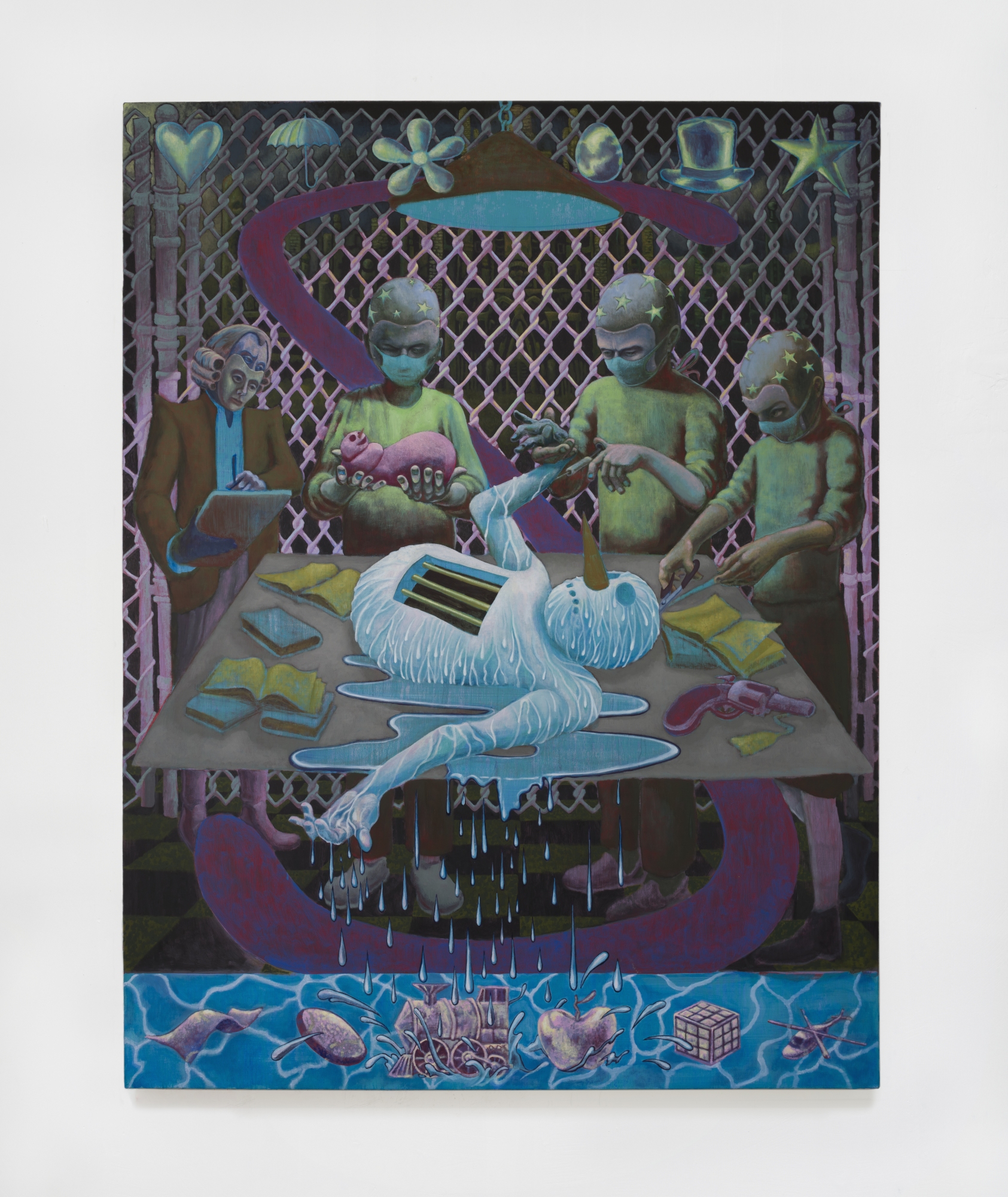

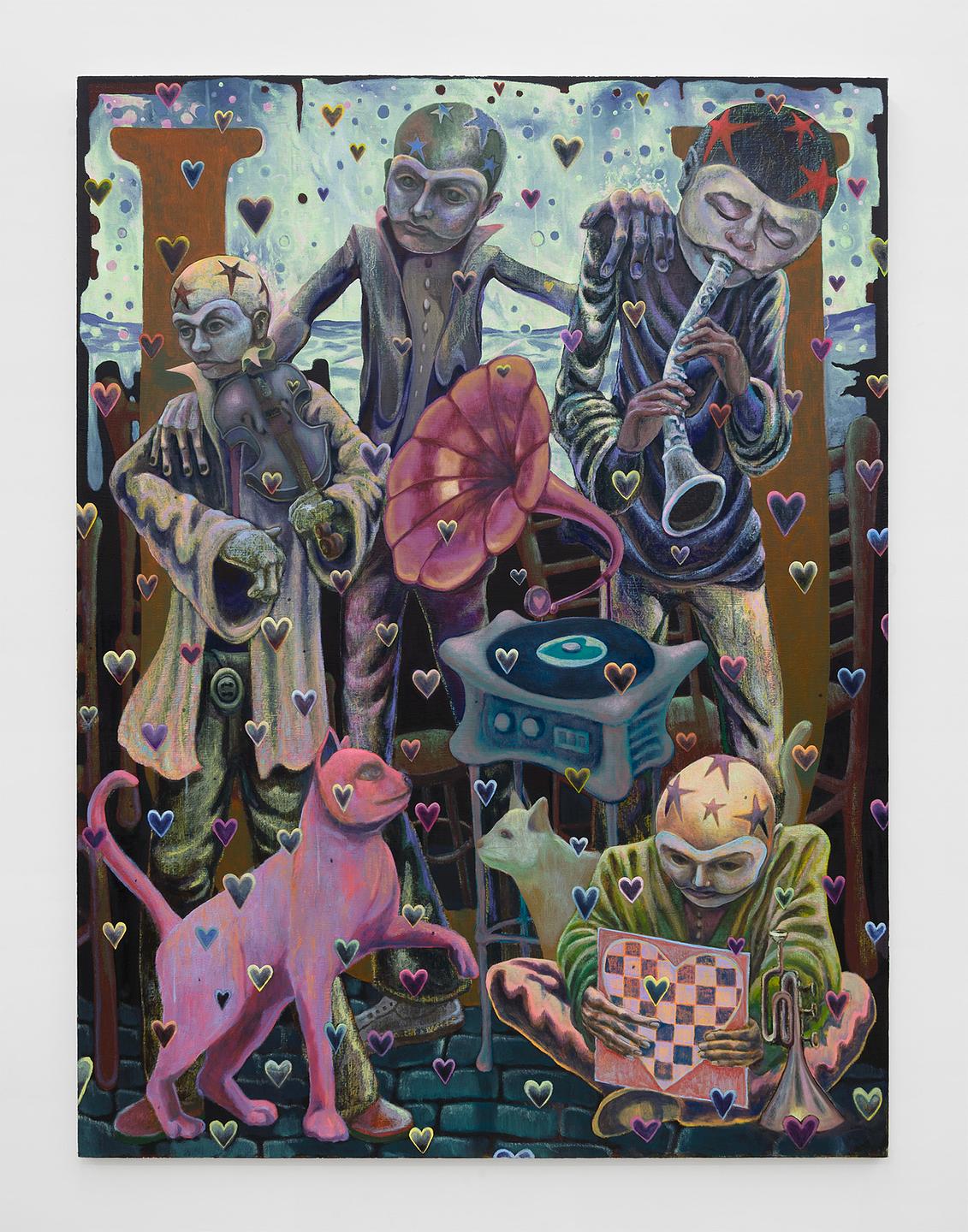
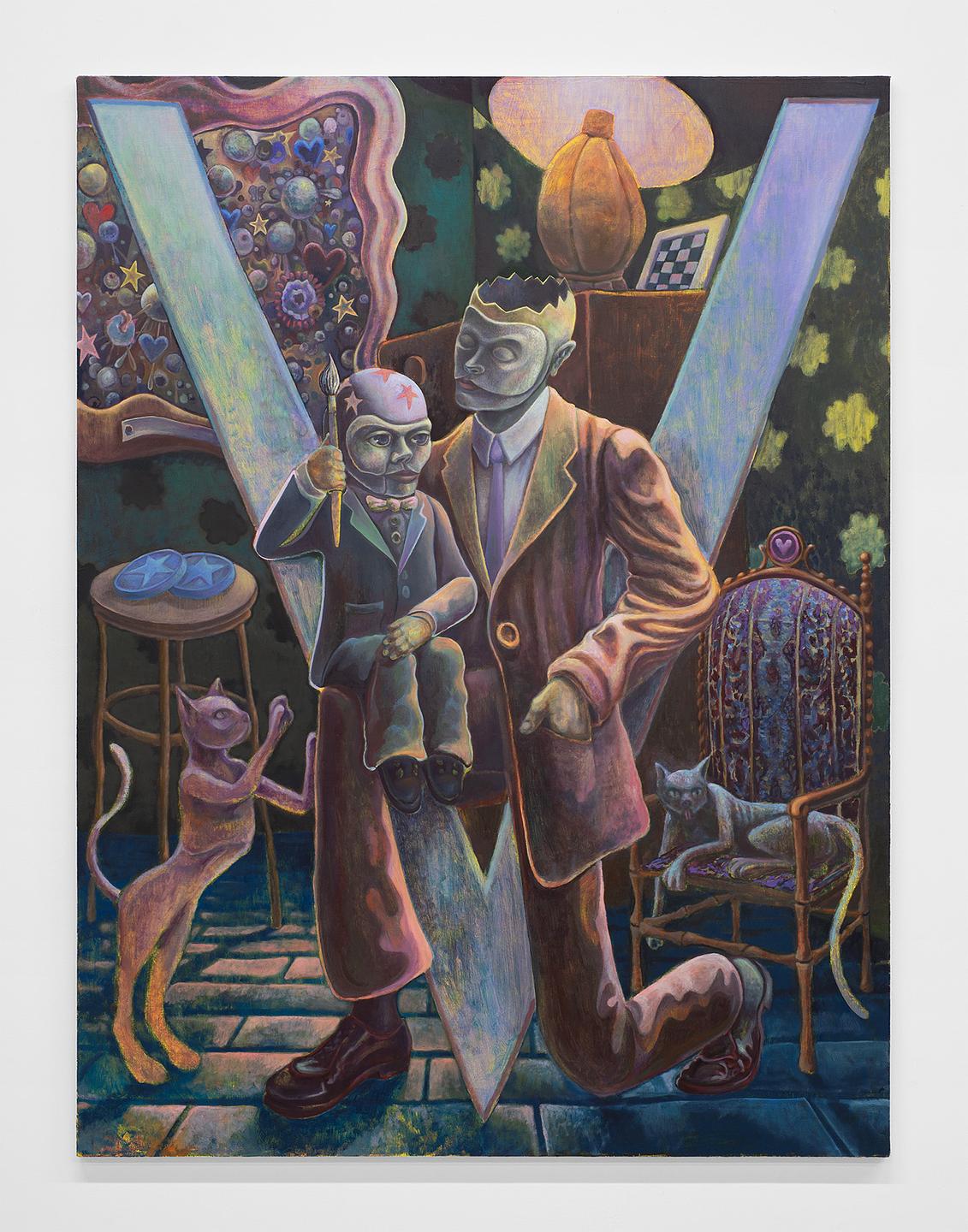
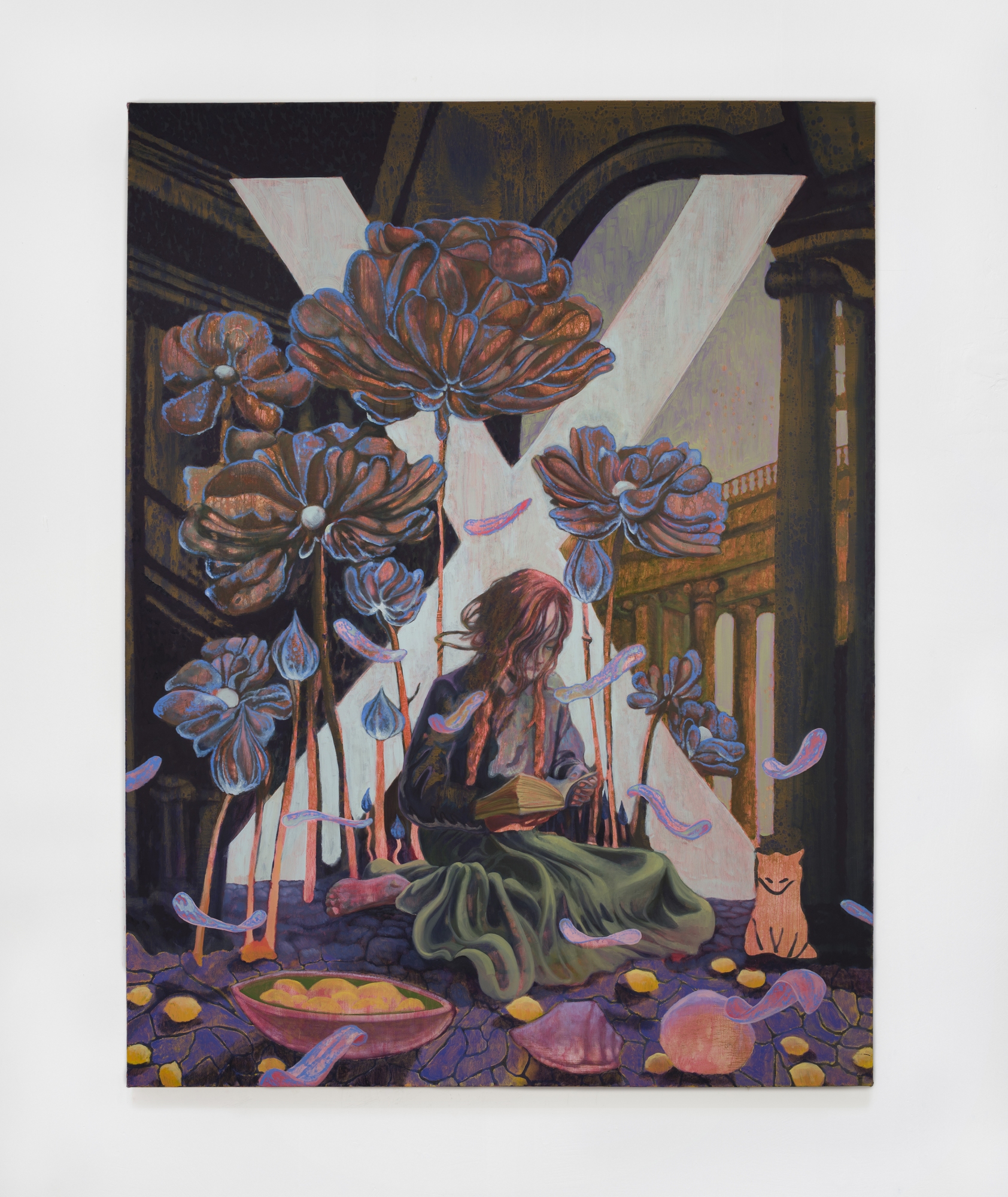
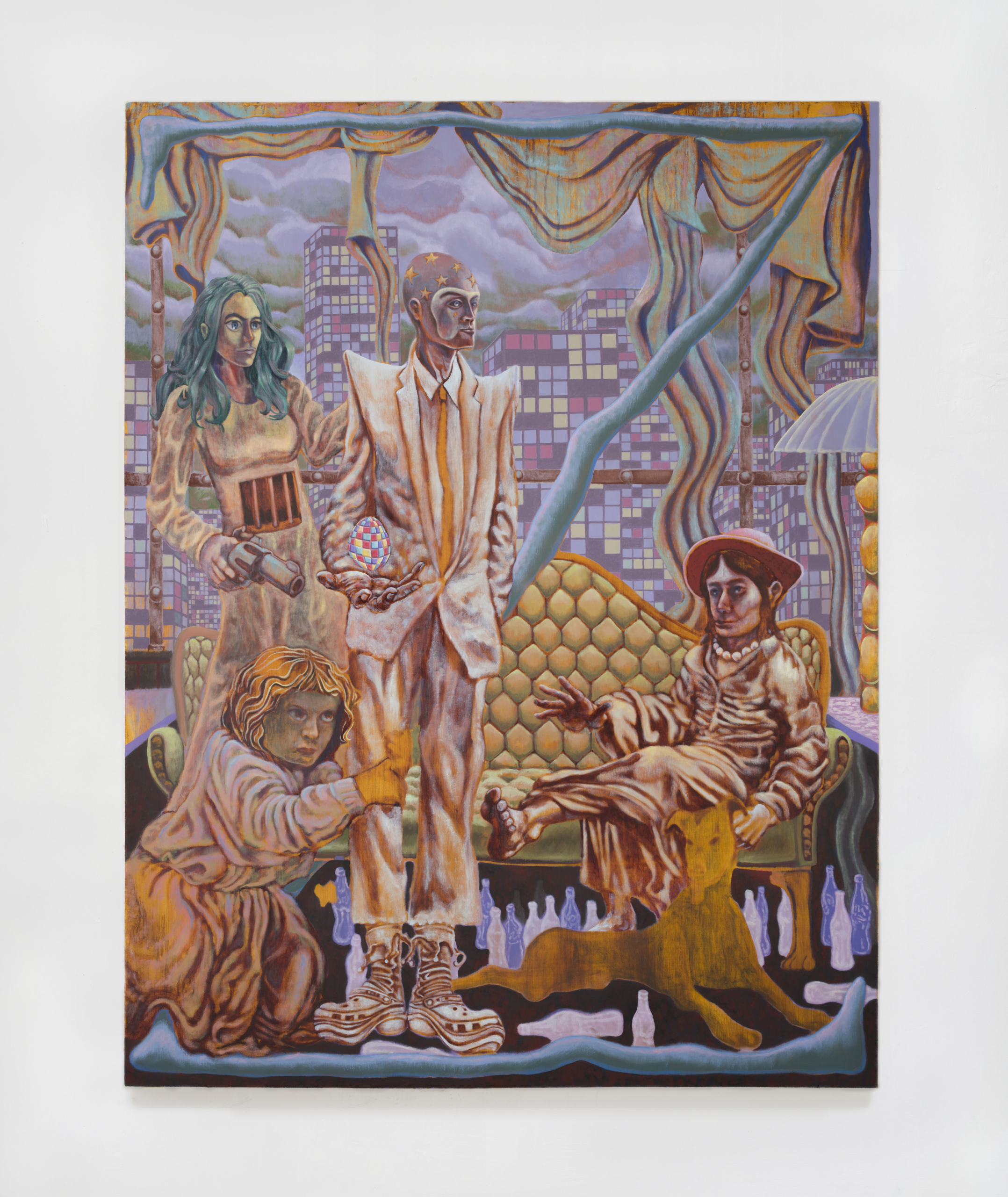
September 13 - October 27, 2019
Prairie
For those seeking a soulmate: Loveliness is loneliness. The collaged objects of the-end-of-days conjunct the plutonic week.
For those seeking a sustained tone: Fukushima daisies, petals warped back. “Everyone has a black hole inside them, even the universe.”
For those seeking palm trees planted outside a corporate medical building: Hearts, juicy warm, ripe to the touch, sterile.
For the sleeping loaves of terraced corn: A gauzy afterlife.
For those who ask themselves: “If I am not myself, then who am I?”: Remember stars and mosquitos intertwined.
For the Divinely fragrant: a song to heal the healer.
For those searching through their pockets: find veins within serpentine rocks. A chalcedony with rich moss-like inclusions. If you are guided by inner sincerity; intuition updates in hard times.
For those seeking an end: Everything is in flux. Meaning anything could happen or not happen.
Let go!
Creation takes place in the void!
Facilitate angelic contact.
Dissolve self-sabotaging behavior.
Go down the mountain into the valley of the dolls.
Evolve right now.
– Zoe Brezsny & Joel Dean
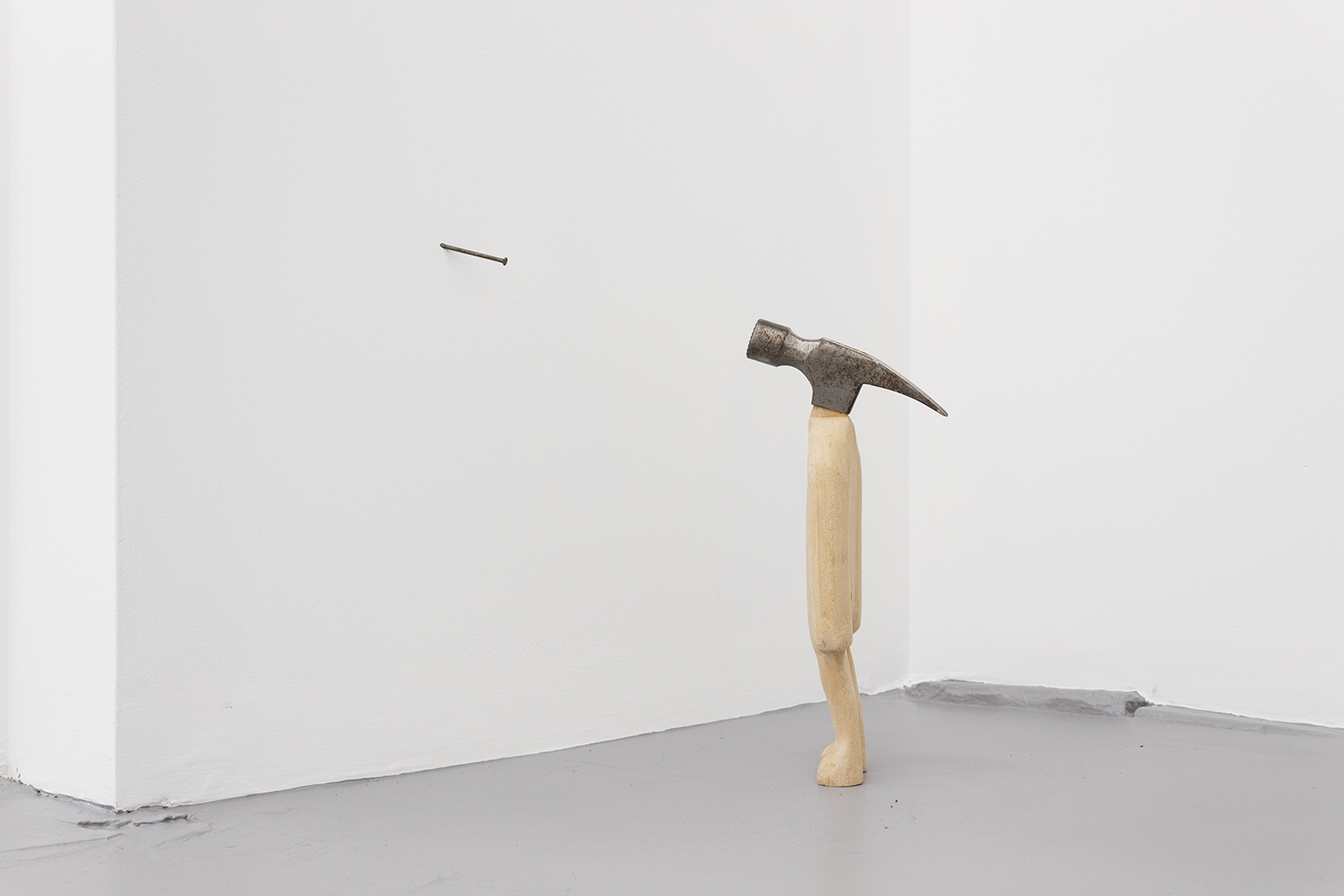
January 18 - March 2, 2019
Cordova
“Will it cost the world's savings to transform humans and will we be left with one creature at the end?” *1
On May 27, 1995, during a dressage competition, the actor Christopher Reeve was thrown from his horse, Eastern Express, nicknamed “Buck”. Witnesses said that the horse made a refusal while beginning the third fence jump and suddenly stopped. Reeve fell forward off the horse. He landed head first on the far side of the fence, shattering his first and second vertebrae. This cervical spinal injury paralyzed him from the neck down and halted his ability to breathe without the assistance of a respirator.
At the time of the accident, Reeve was best known for his role as Superman in the original Superman film series, which began in 1978. While preparing for the role he’d rejected the idea of wearing fake muscles under the Superman suit and instead opted to go through an intense two-month training regimen that former British weightlifting champion David Prowse supervised. Prowse, also an actor, performed the physical component of the role of Darth Vader in the original Star Wars films, the first of which premiered a year prior to Superman in 1977.
The vocal component of Darth Vader was performed by James Earl Jones, a 47 year old actor from Arkabutla, Mississippi. Jones suffered a stutter for most of his childhood, and accounts that the affliction was so bad that he was effectively a mute from his first day of school through the year he entered high school, when Jones’s teacher, Donald Crouch, took an interest in his poetry and encouraged him to end his silence.
“The ultimate source of light no longer shines itself, but rather lets another shine.” *2
*1 Sol Yurick, Metatron
*2 Peter Sloterdijk, Bubbles: Spheres I
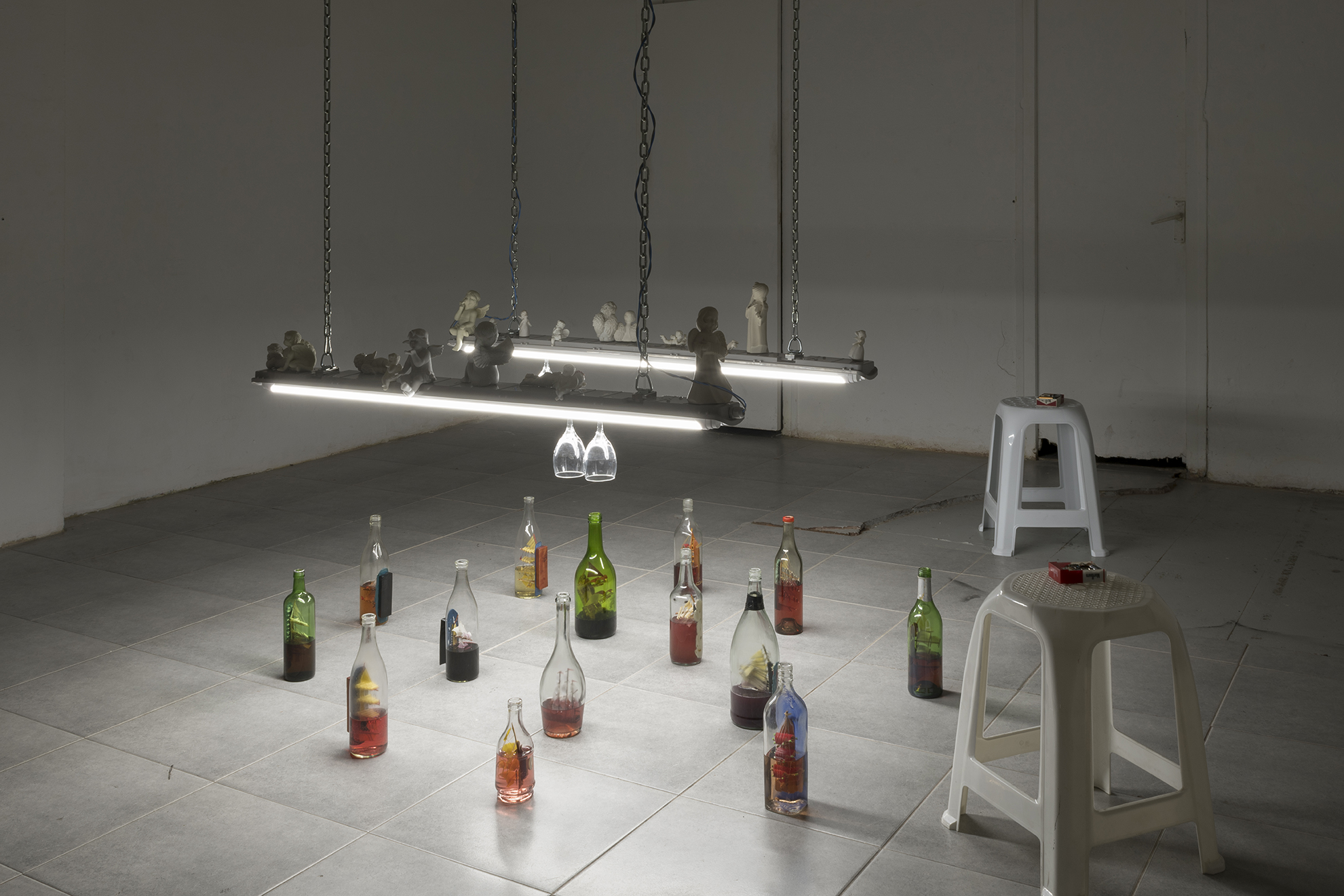
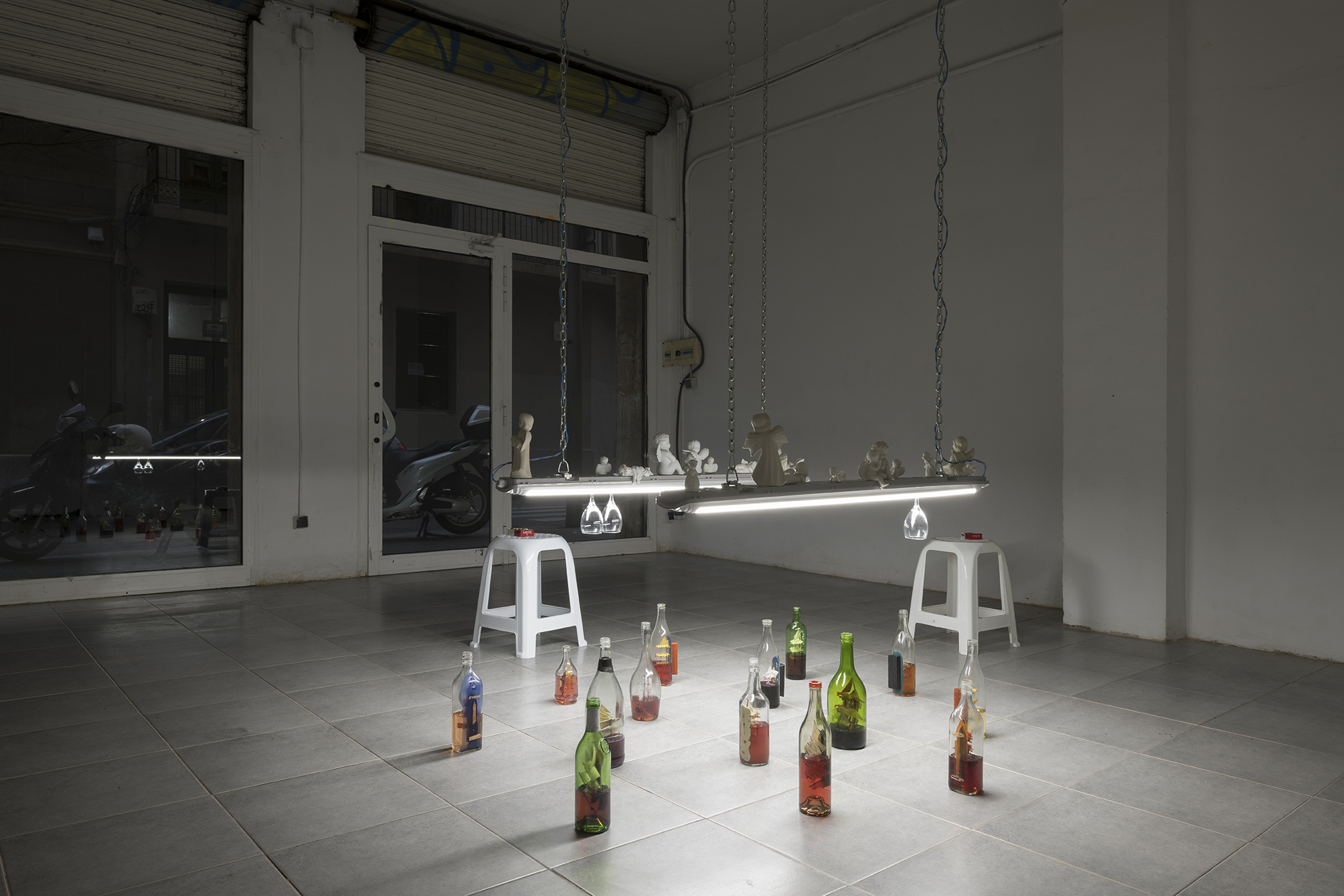
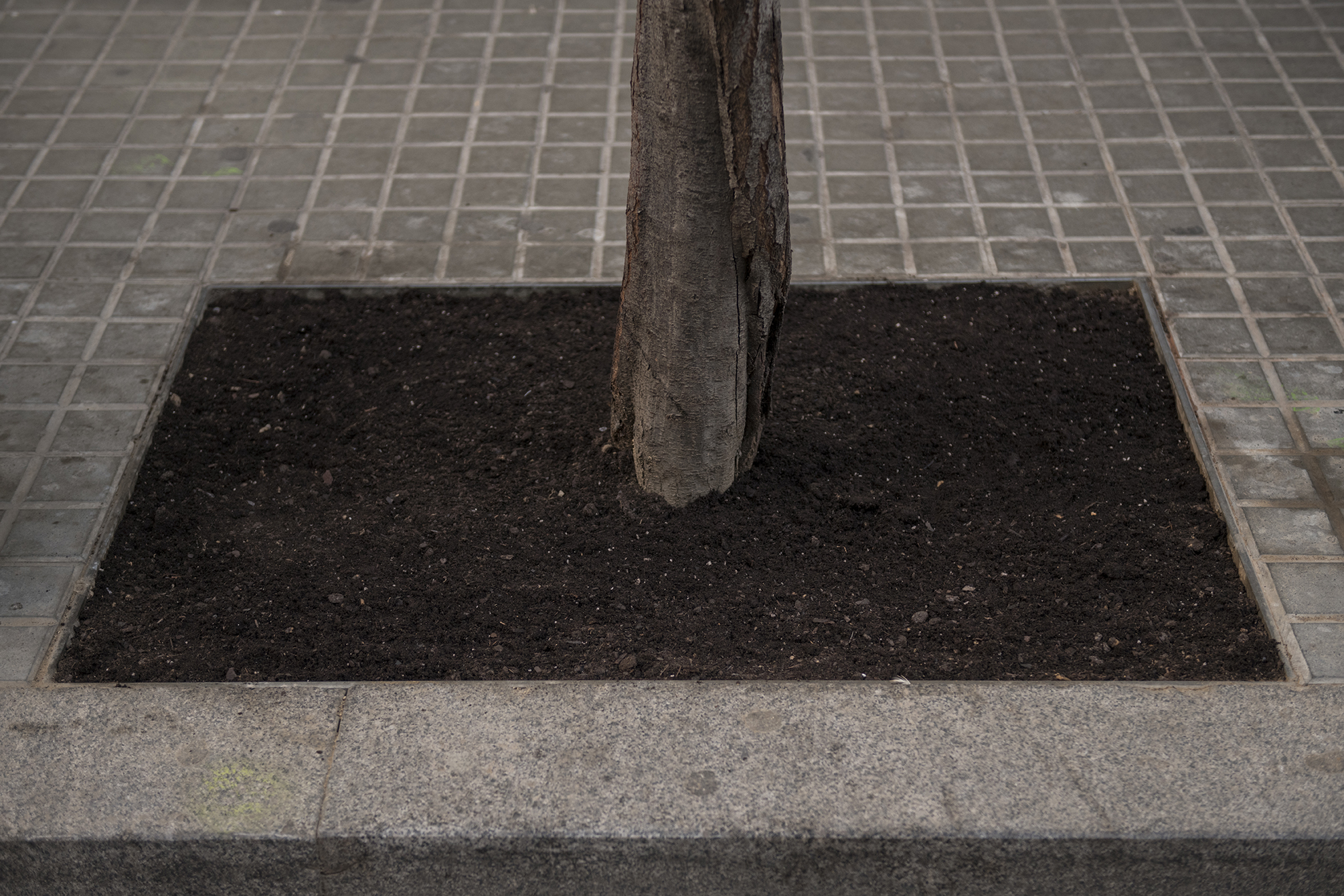
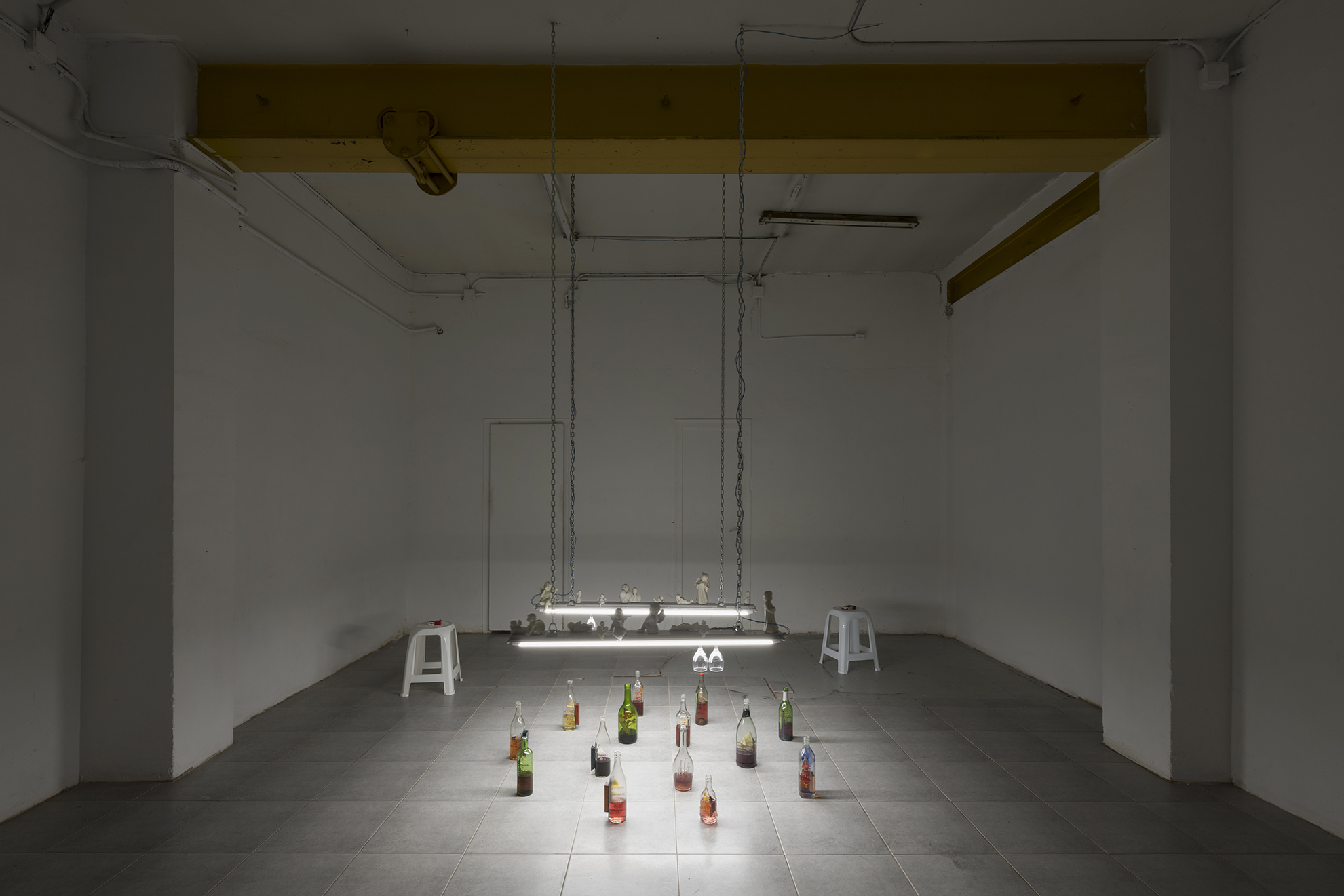





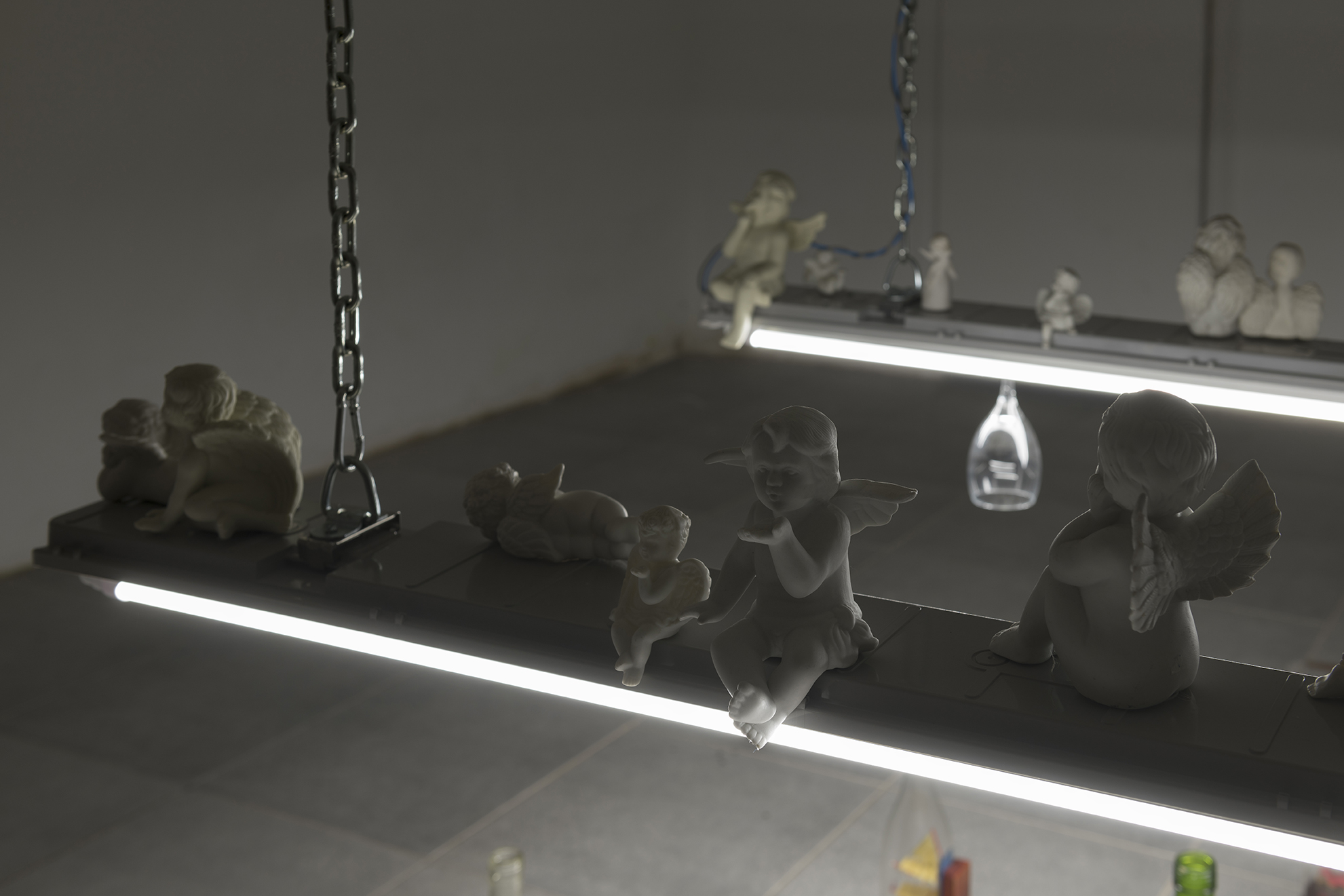


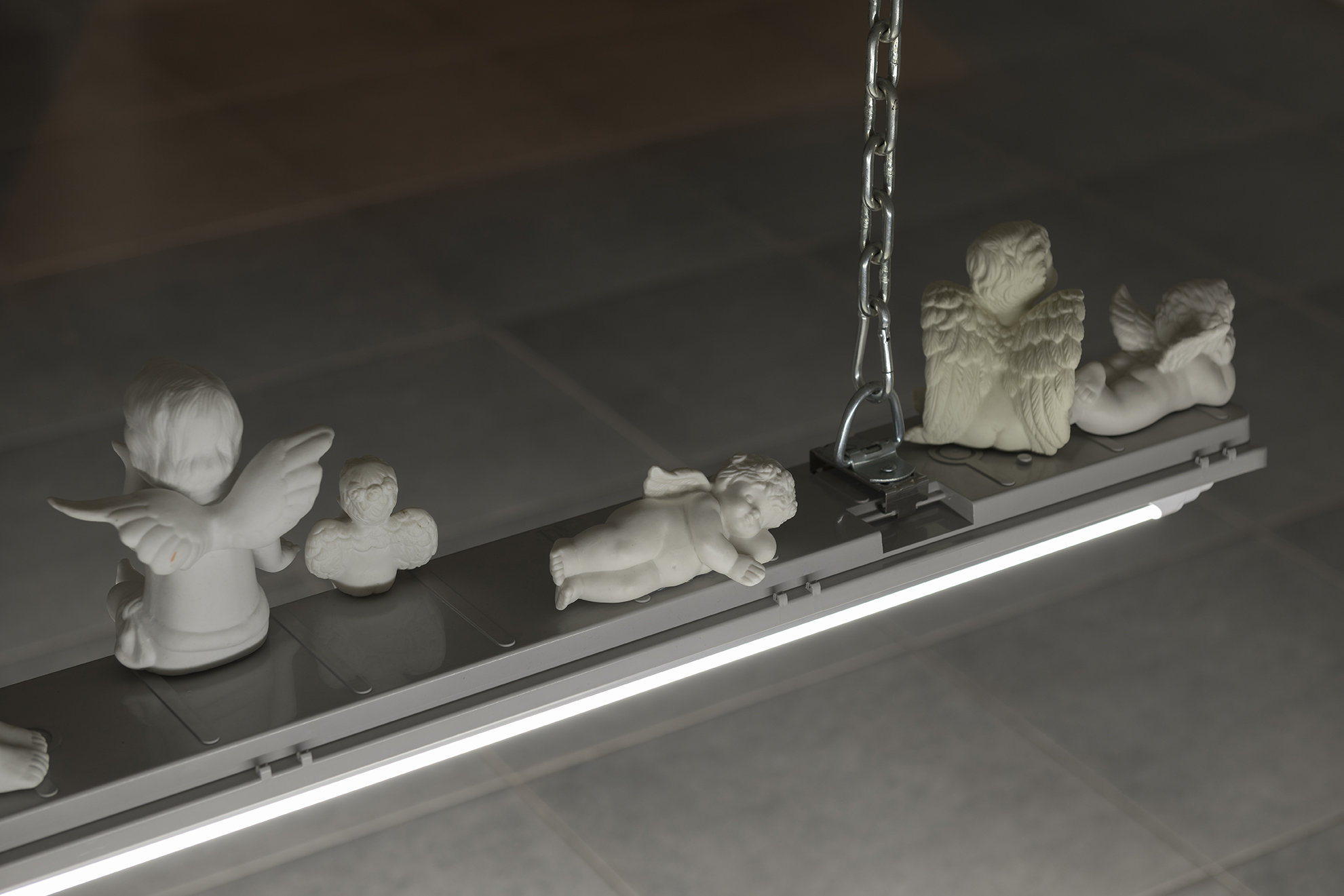

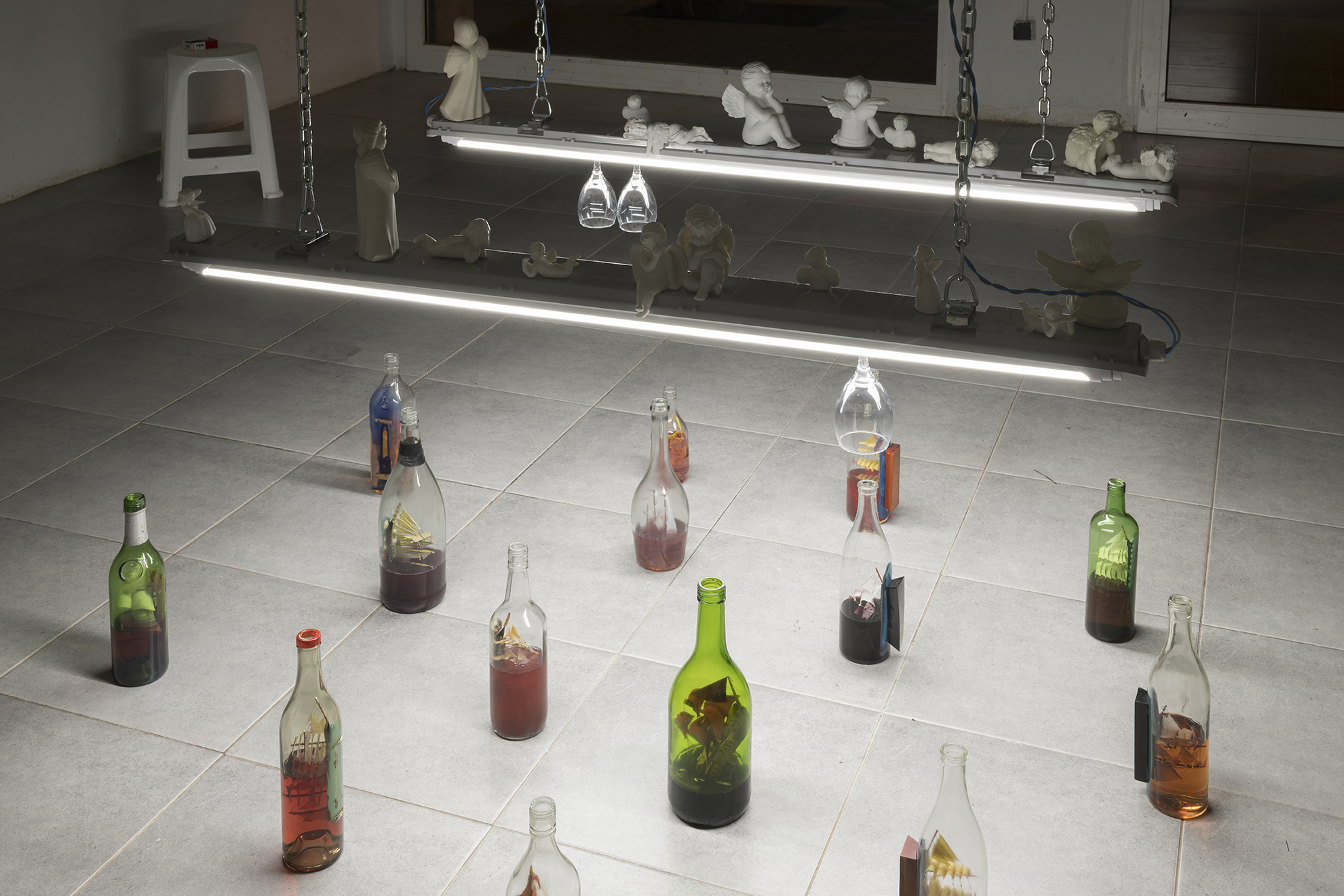
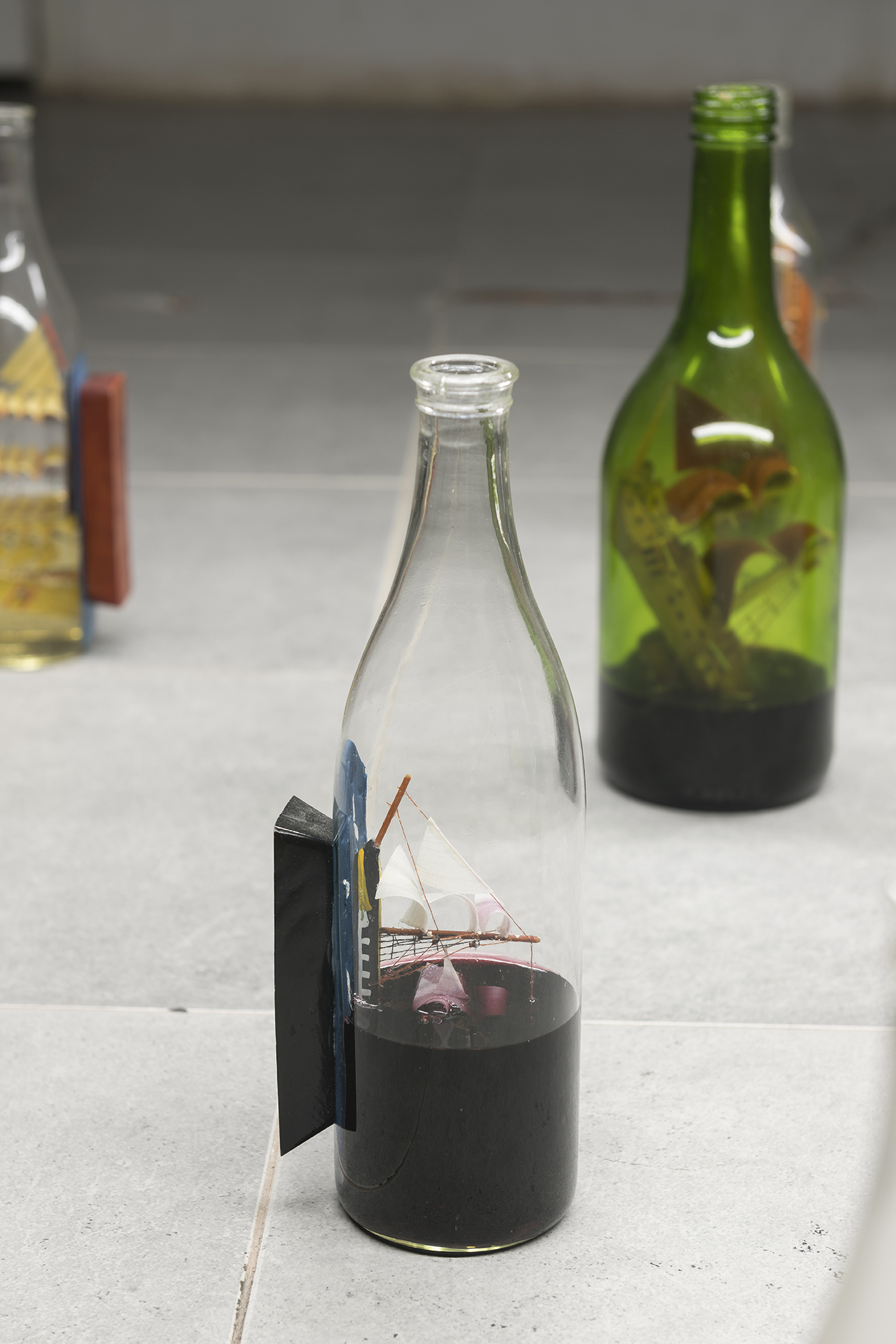


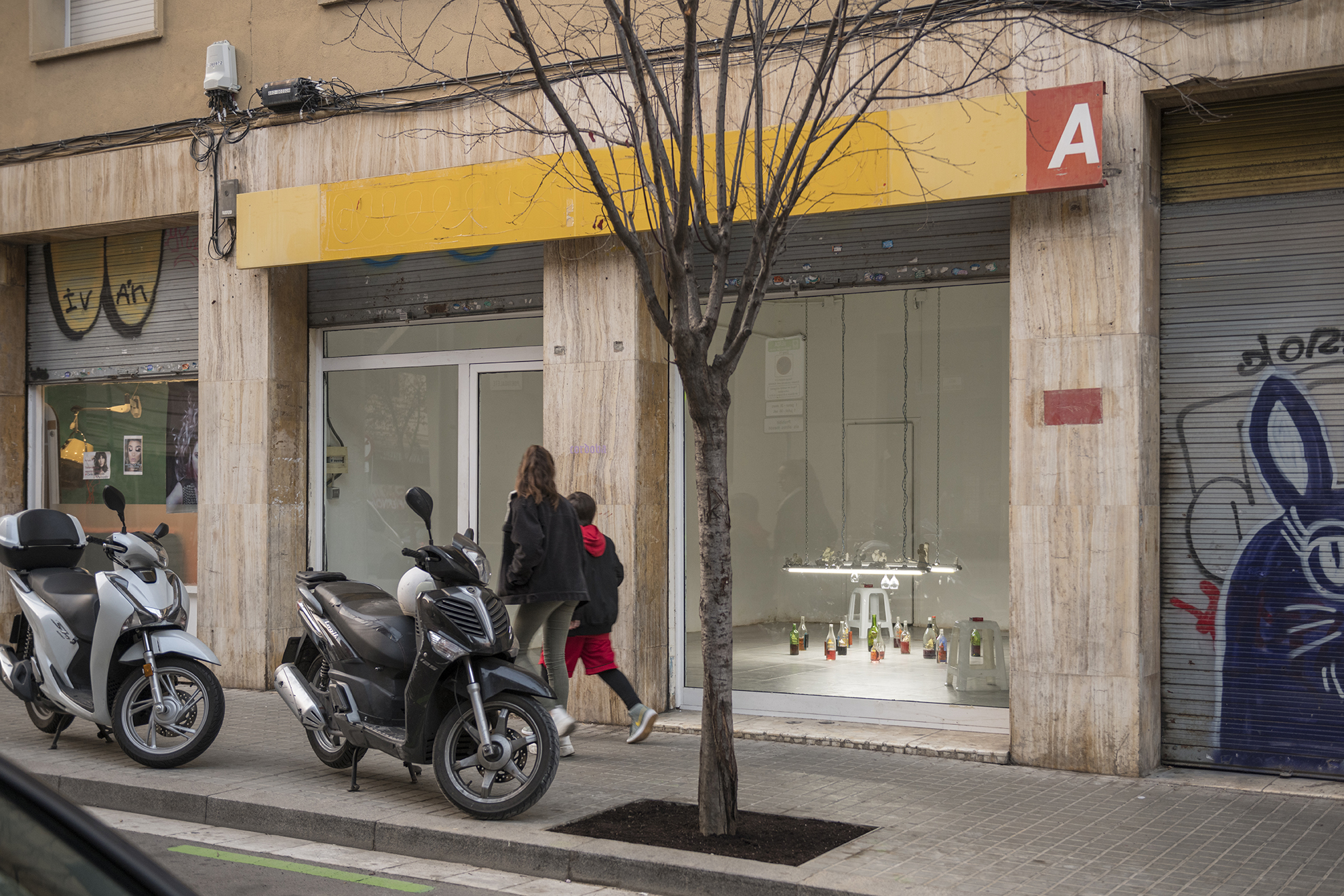
2018
On July 23 of this year, the media conglomerate Tronc slashed the reporting staff of the nearly century old tabloid The New York Daily News by over half, prompting Mayor Bill de Blasio to tweet that the news was "a disaster for NYC." While somewhat remarkable for a politician with a notoriously combative relationship towards the media, and especially to the kind of investigative muckraking for which the Daily News was and is still known, de Blasio's lamentation of the effective dismantling of a New York institution shouldn't be entirely surprising. Perhaps no other city in the world has a public culture so synonymous with the rituals and mythologies of the daily newspaper. The gutting of the Daily News isn't so much a story of the demise of print media in an era of digital journalism, as much as it represents one of the final death throes of what remains of civic life in New York City.
The history of this city is one defined by violent rupture and a seemingly endless capacity for renewal. Perhaps the most significant factor underlying this dynamic from the recent past and into the present is the suburbanization of the surrounding area following the Second World War, and the resulting loss of people and tax revenue that hollowed out vast swathes of the city. This massive movement of people and capital out of the urban core was made possible by public works on a scale without precedent in other any American city, most notably the construction of a snake-like network of highways and parkways that encircle and radiate outwards from the city, cutting through, choking and rendering obsolete the cohesive grid of modernity. Along with the creation of dozens of public housing projects, these urban renewal policies directly displaced at least half a million people over the course of some fifty years, while the resulting destabilization of countless neighborhoods lead many more to decamp for the suburbs, or remain trapped in poverty.
The term "the Big Apple" likely originated in showbiz in the 1920s, a reflection of the cultural supremacy and market dominance of New York City. It gained further popularity in the '70s as part of a promotional campaign to attract tourists back to the ailing, crime-ridden city. New York's eventual economic renewal leveraged the decay of the preceding decades into opportunity: in a striking revival of the frontier mentality, blighted neighborhoods and vacant buildings were reimagined as a clean slate from which to remake the city for urban professionals, while the working class are pushed deeper into the outer boroughs, or leave the city altogether. Around the same time that New York’s precipitous population decline began to reverse, a company was founded in California that would play a crucial role in the rise of an information economy that would transform our understanding of how a city should function, and who it should function for.
Apple Computer, Inc.'s first logo depicted Isaac Newton sitting under an apple tree, a huge, plump apple about to fall on his head. In The Fugitive, the Repeat Offender, and the Running Joke, Joel Dean presents five hand-carved apples – dioramas of hypothetical metropolises – along with a selection of smaller sculptures.
-Tim Gentles
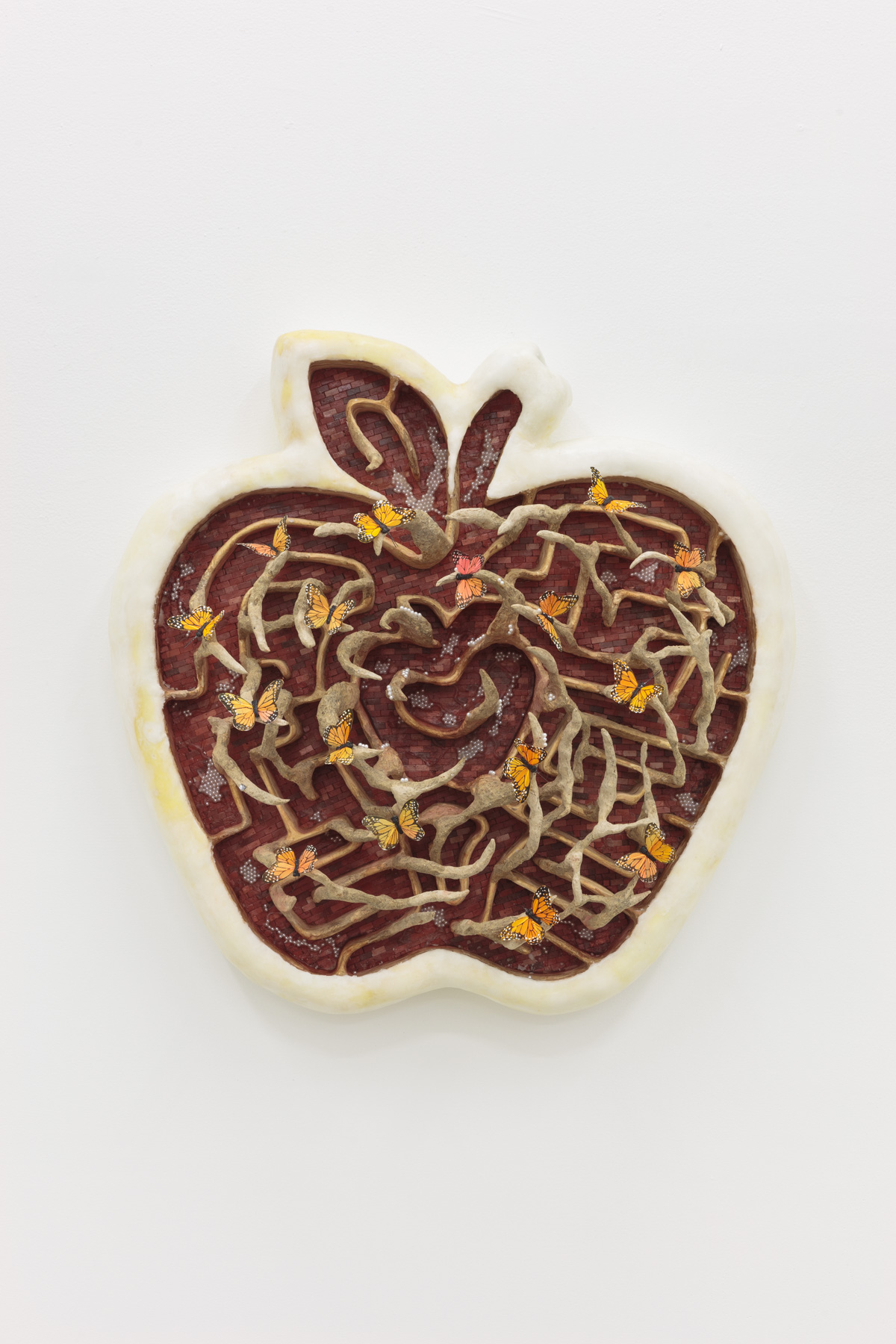

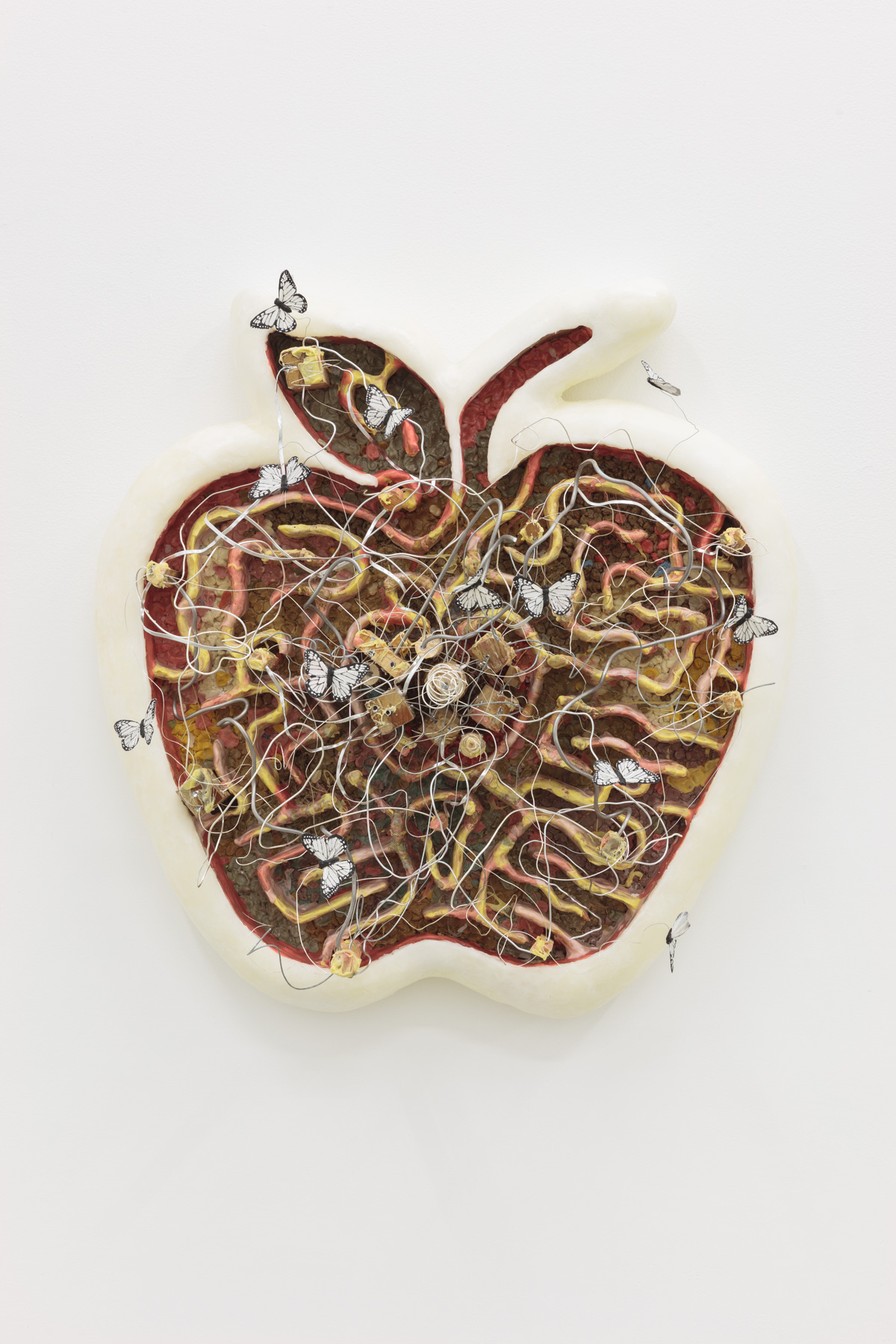
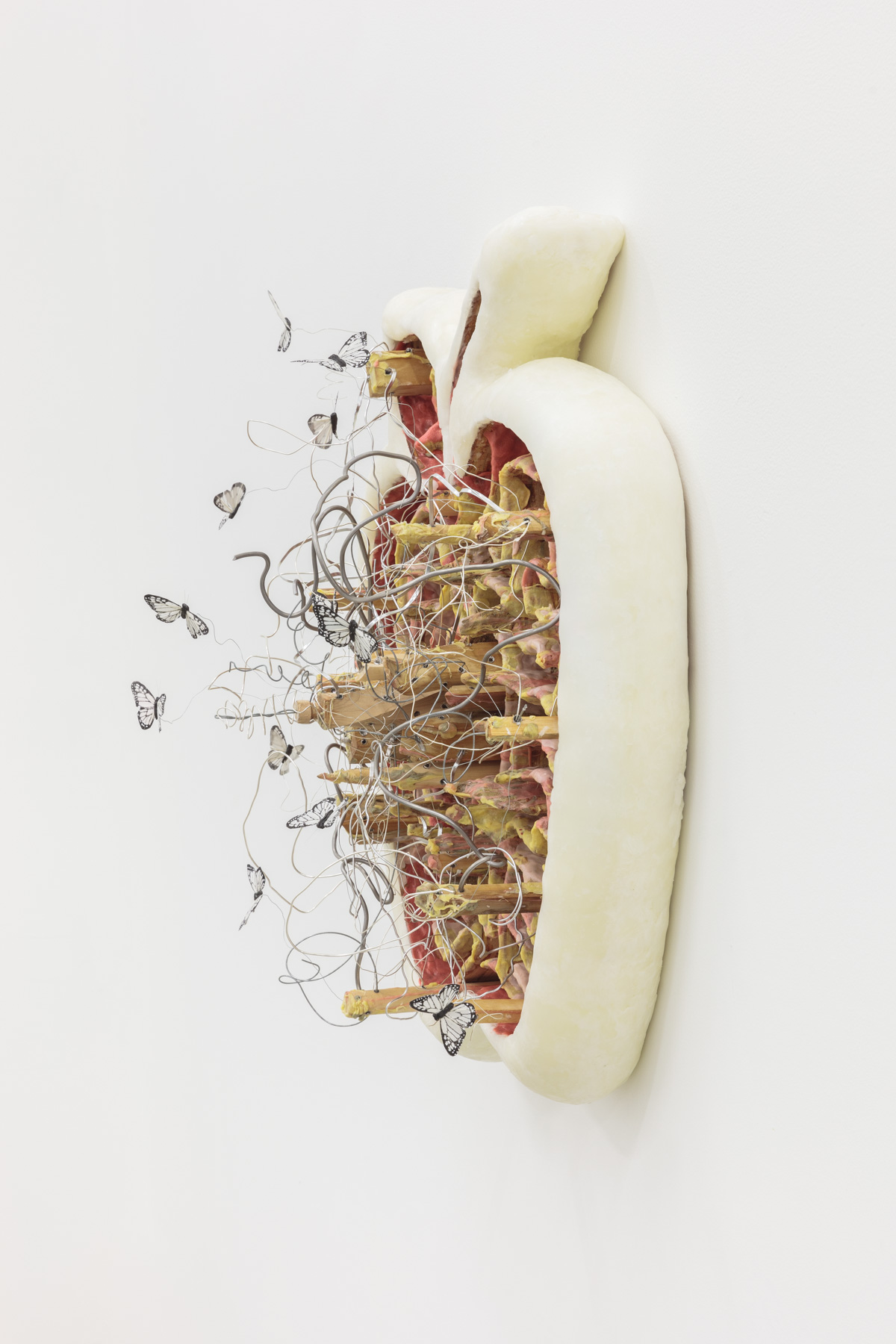
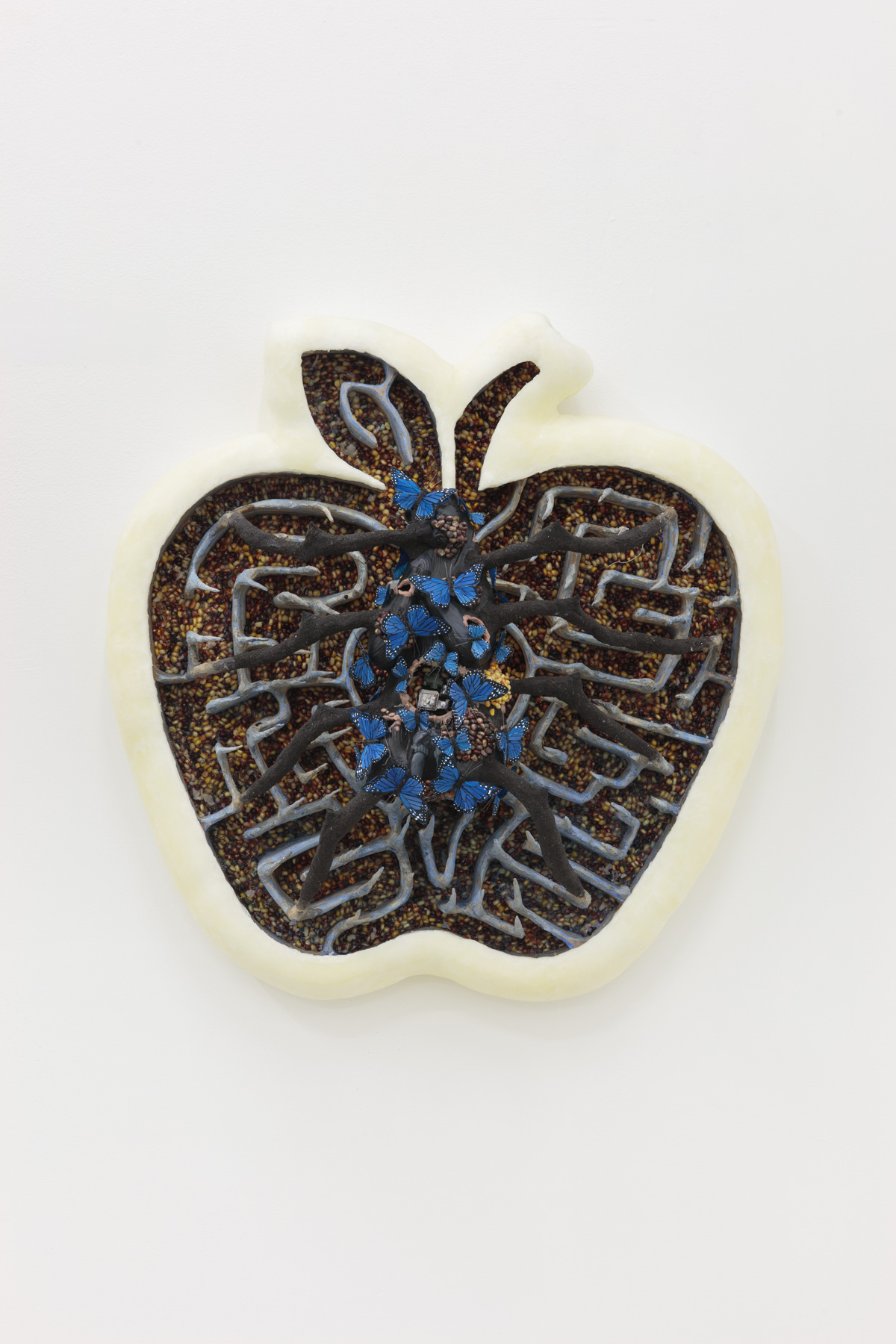
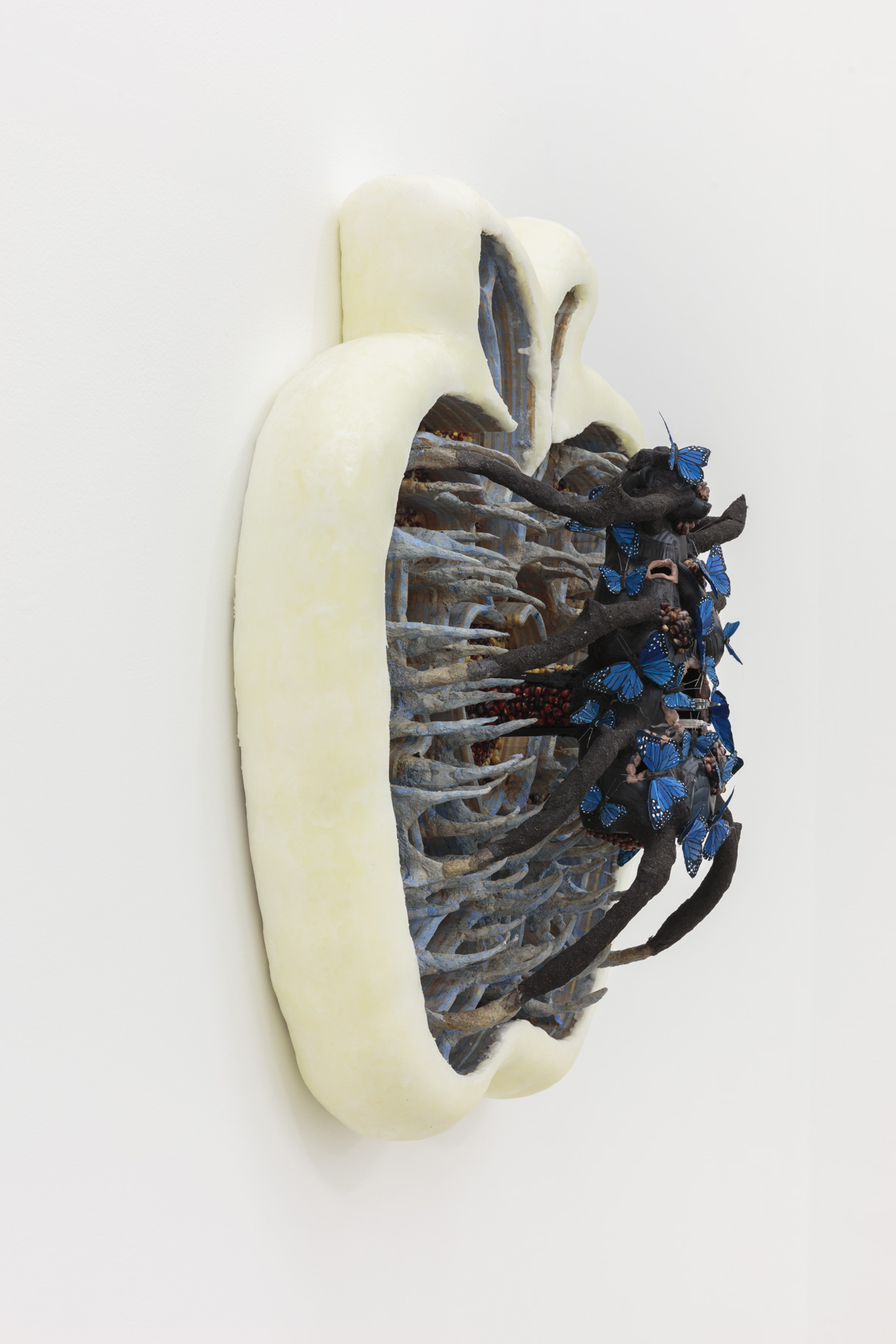
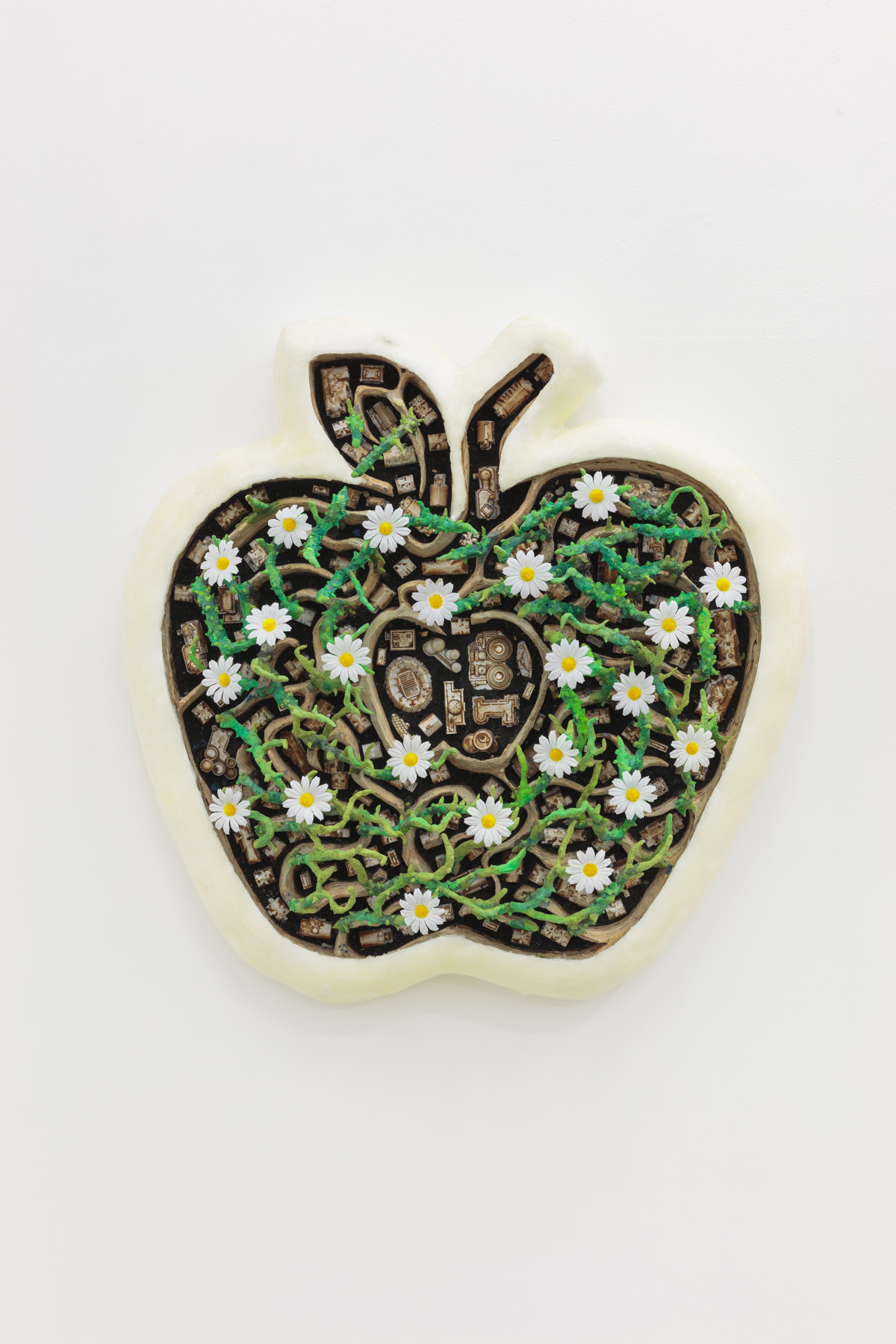
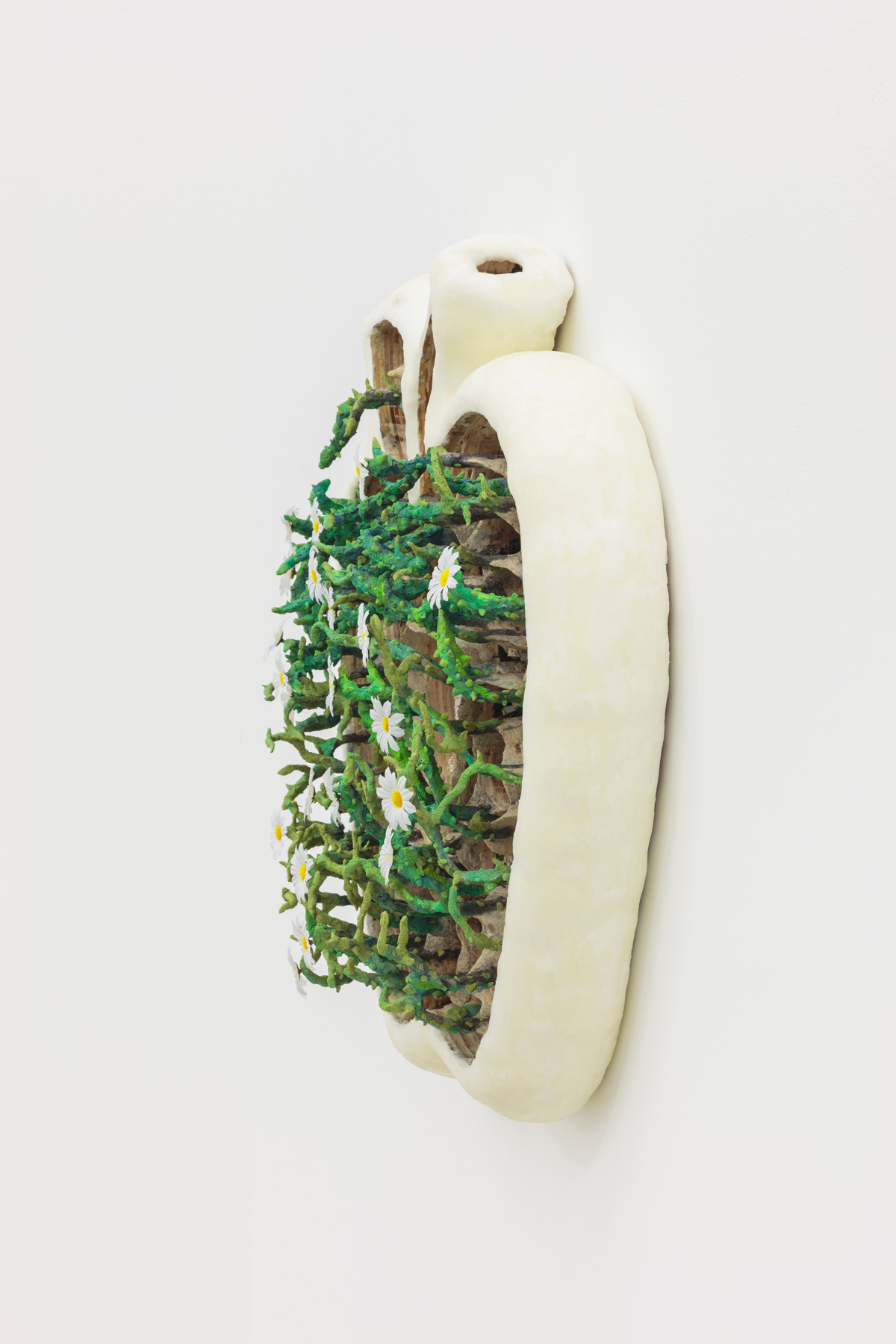
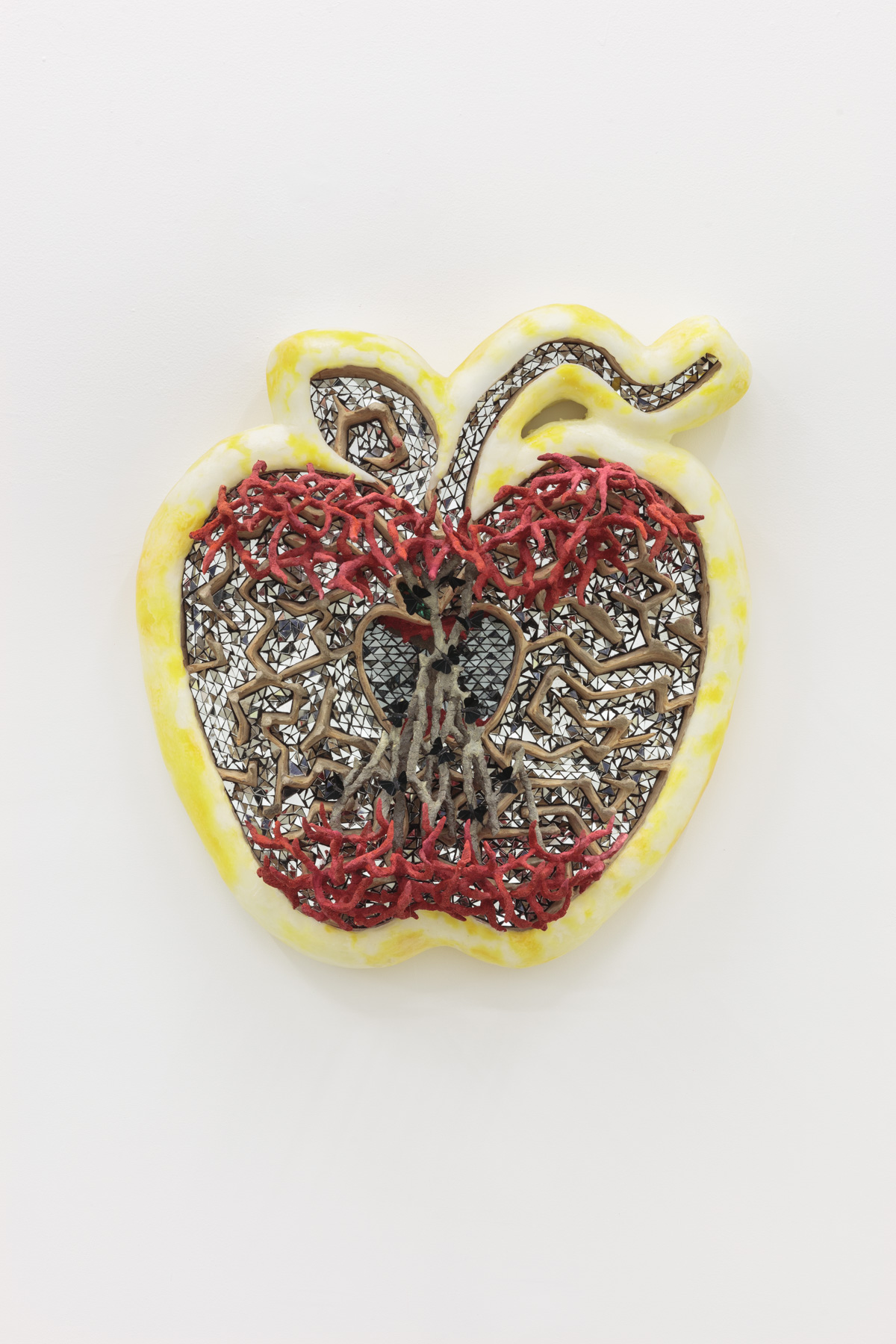

October 22, 2017
The New York Headache Society
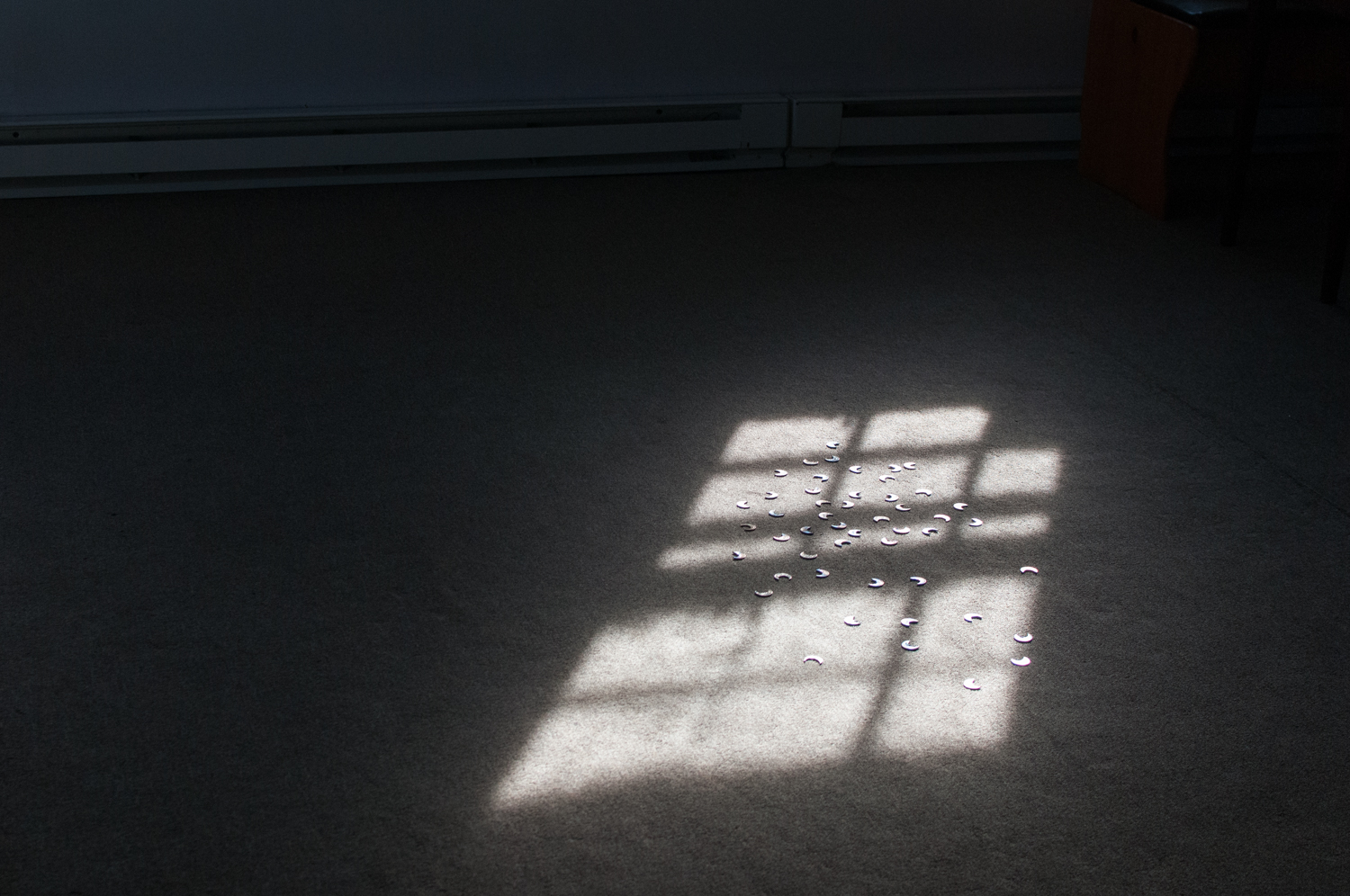


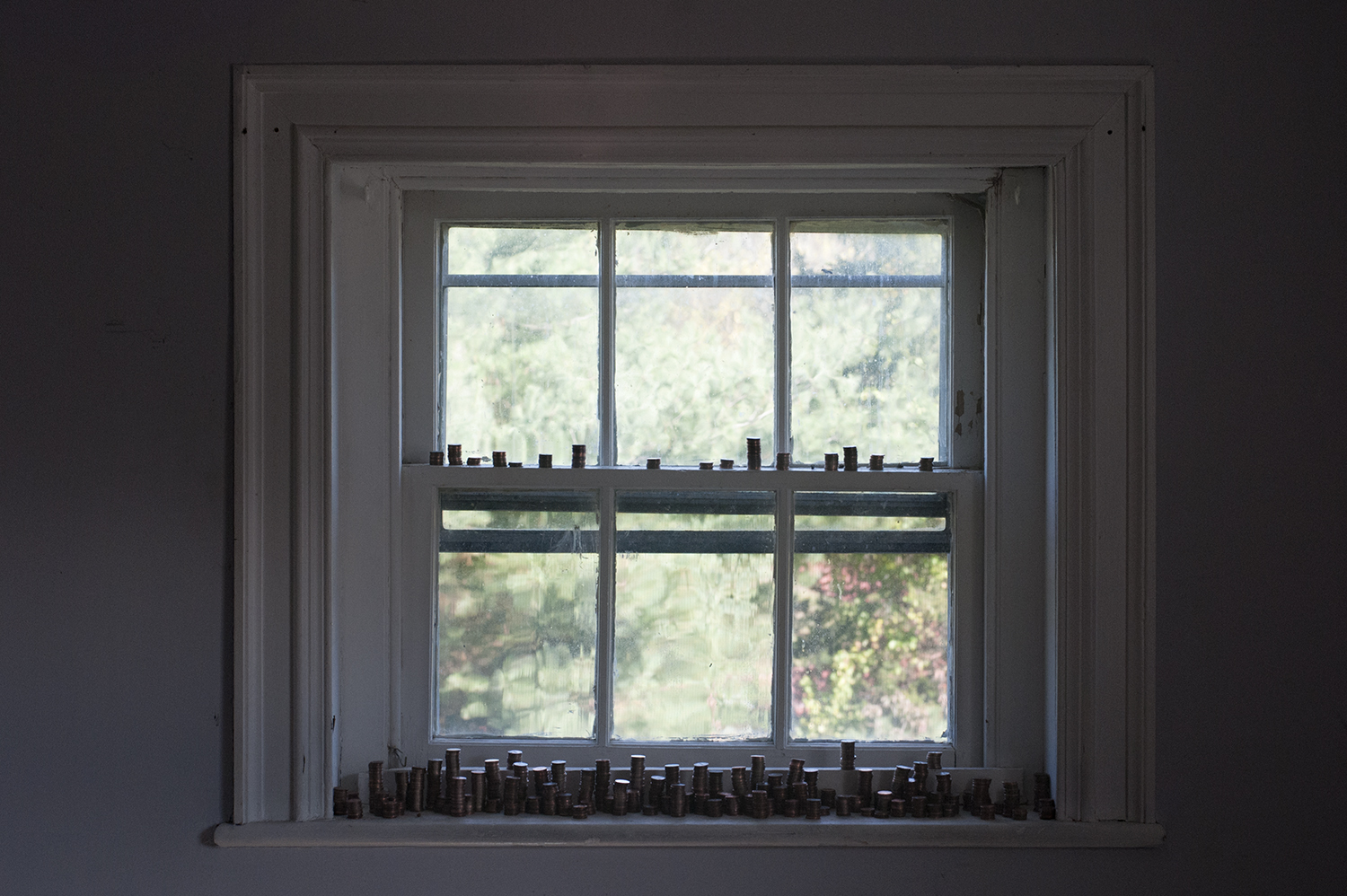

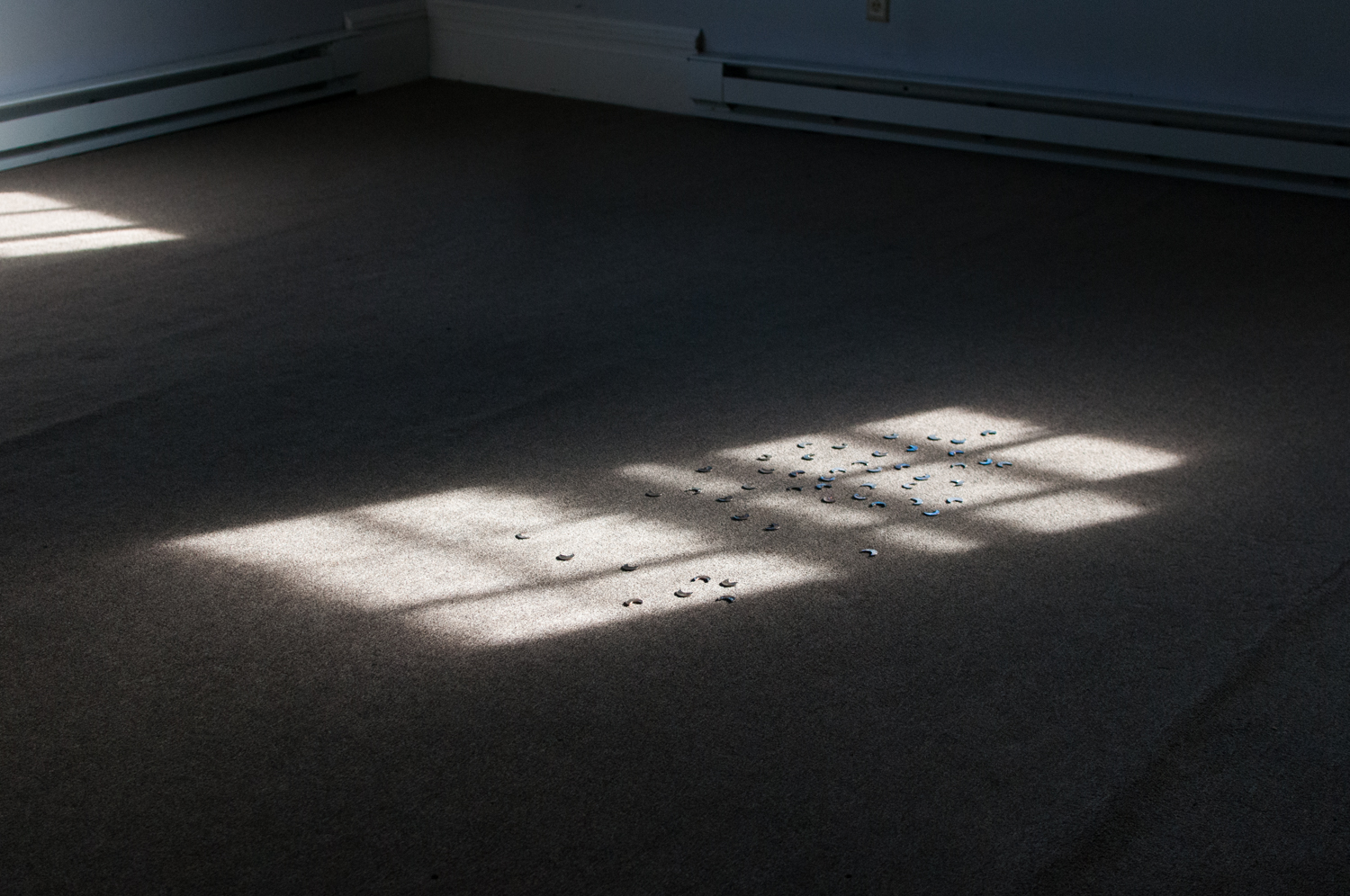
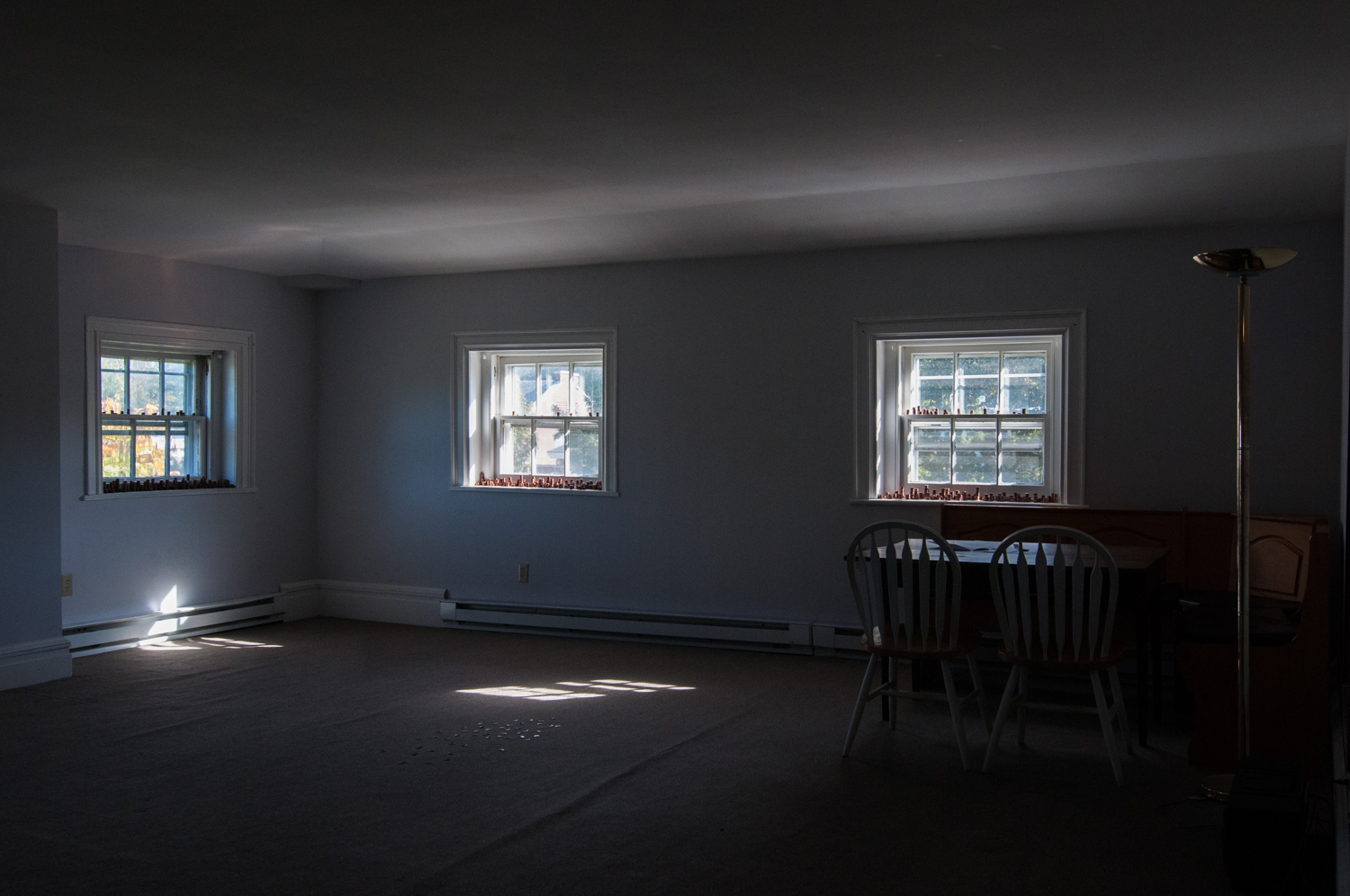

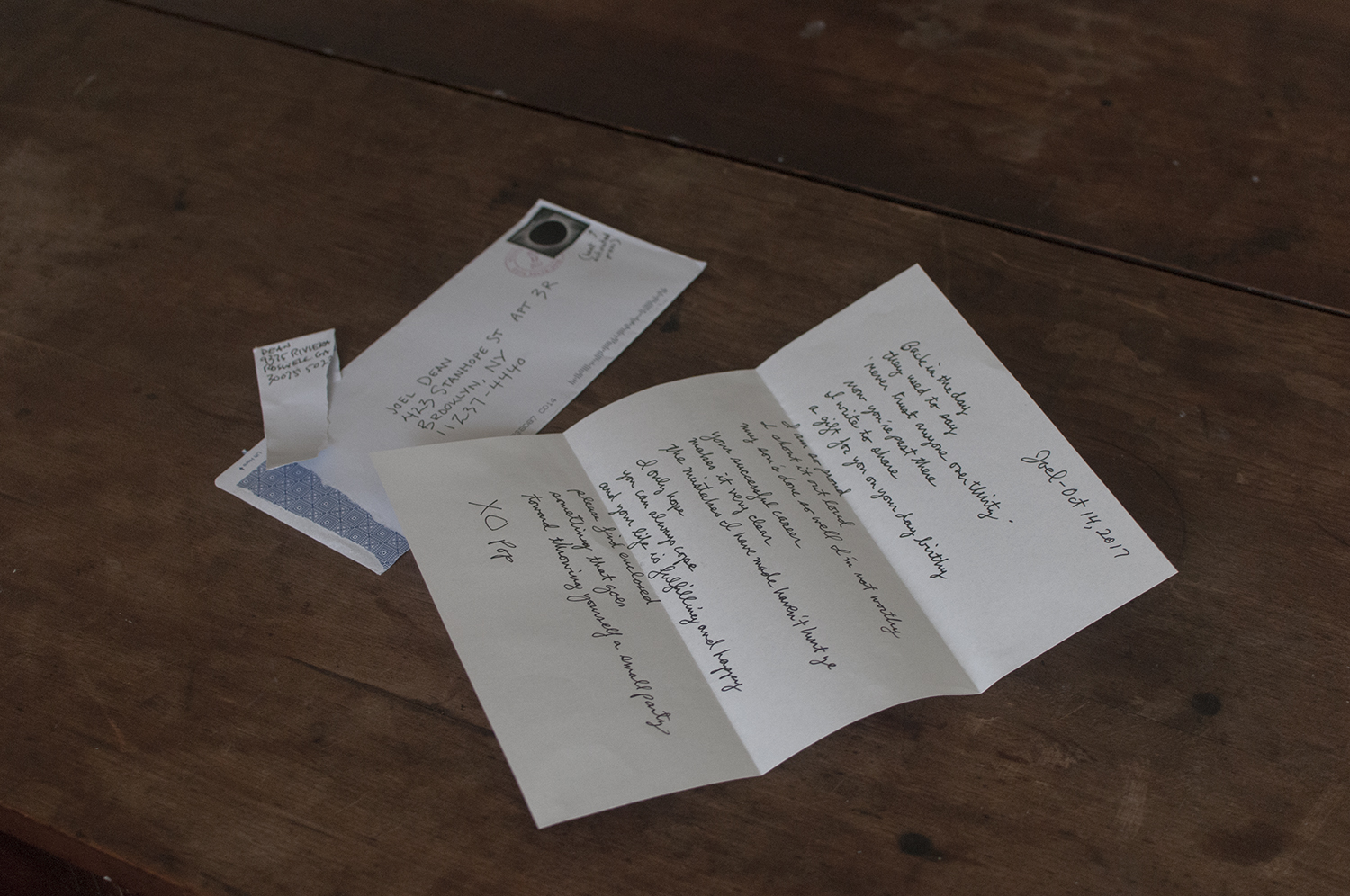




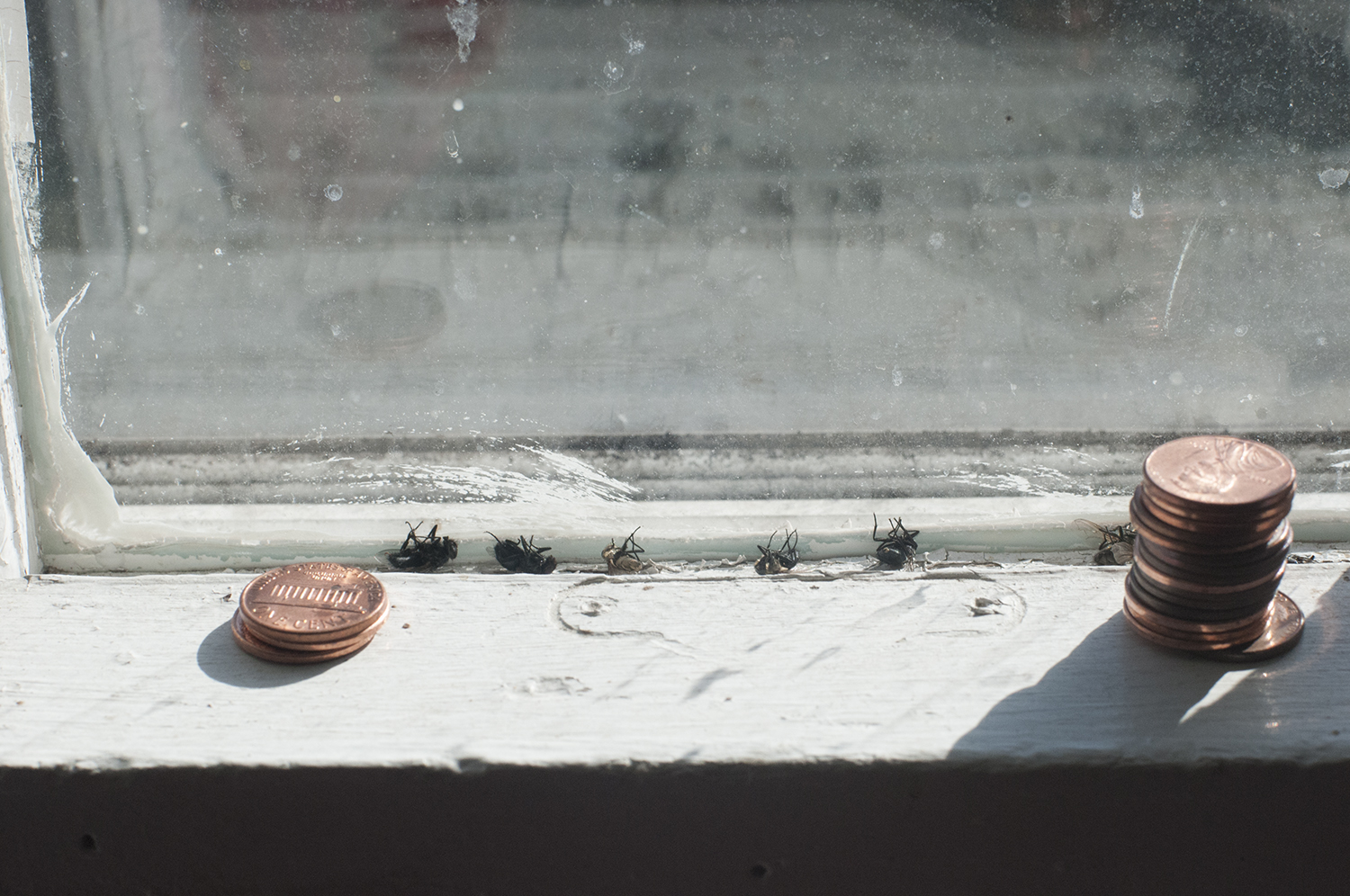

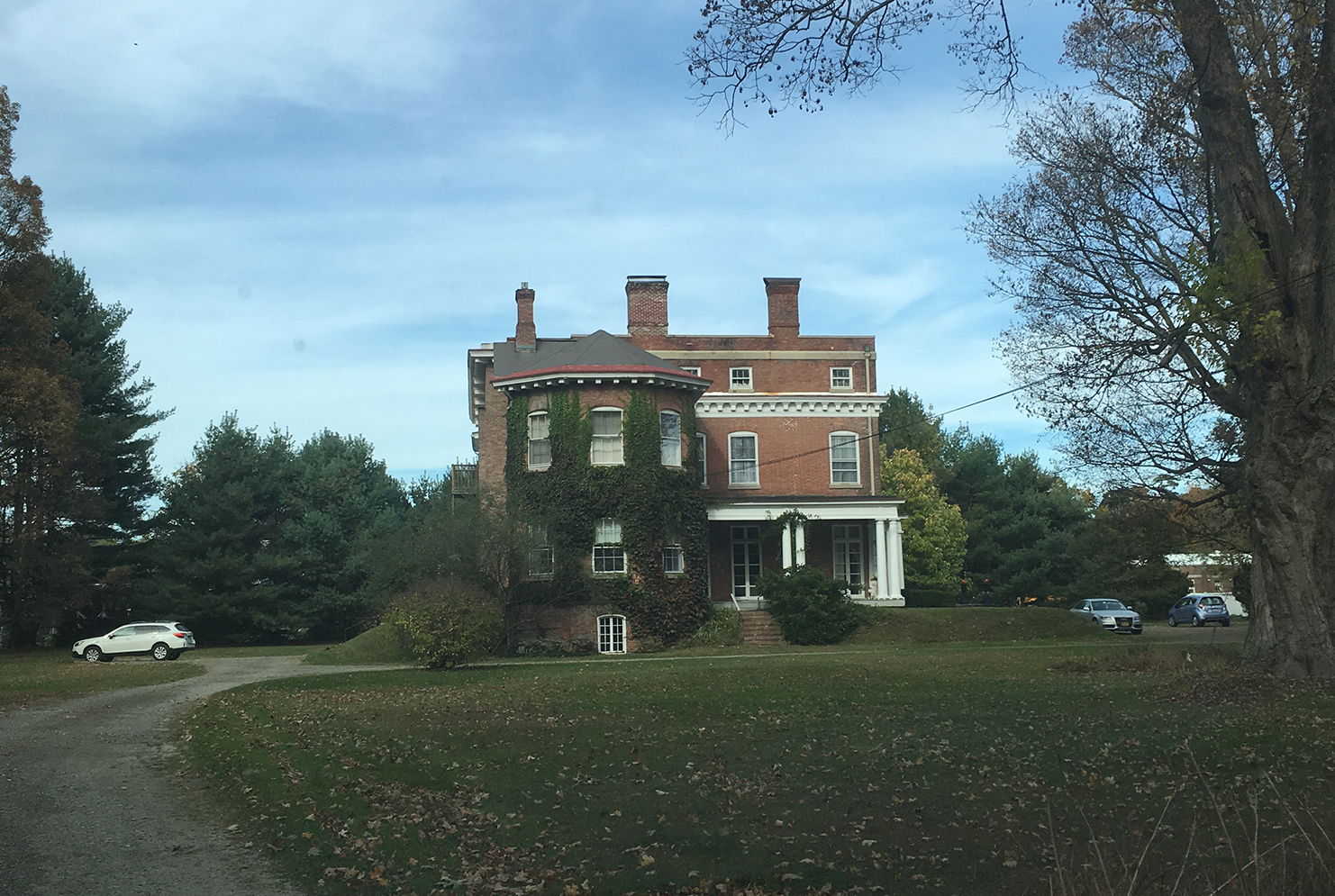
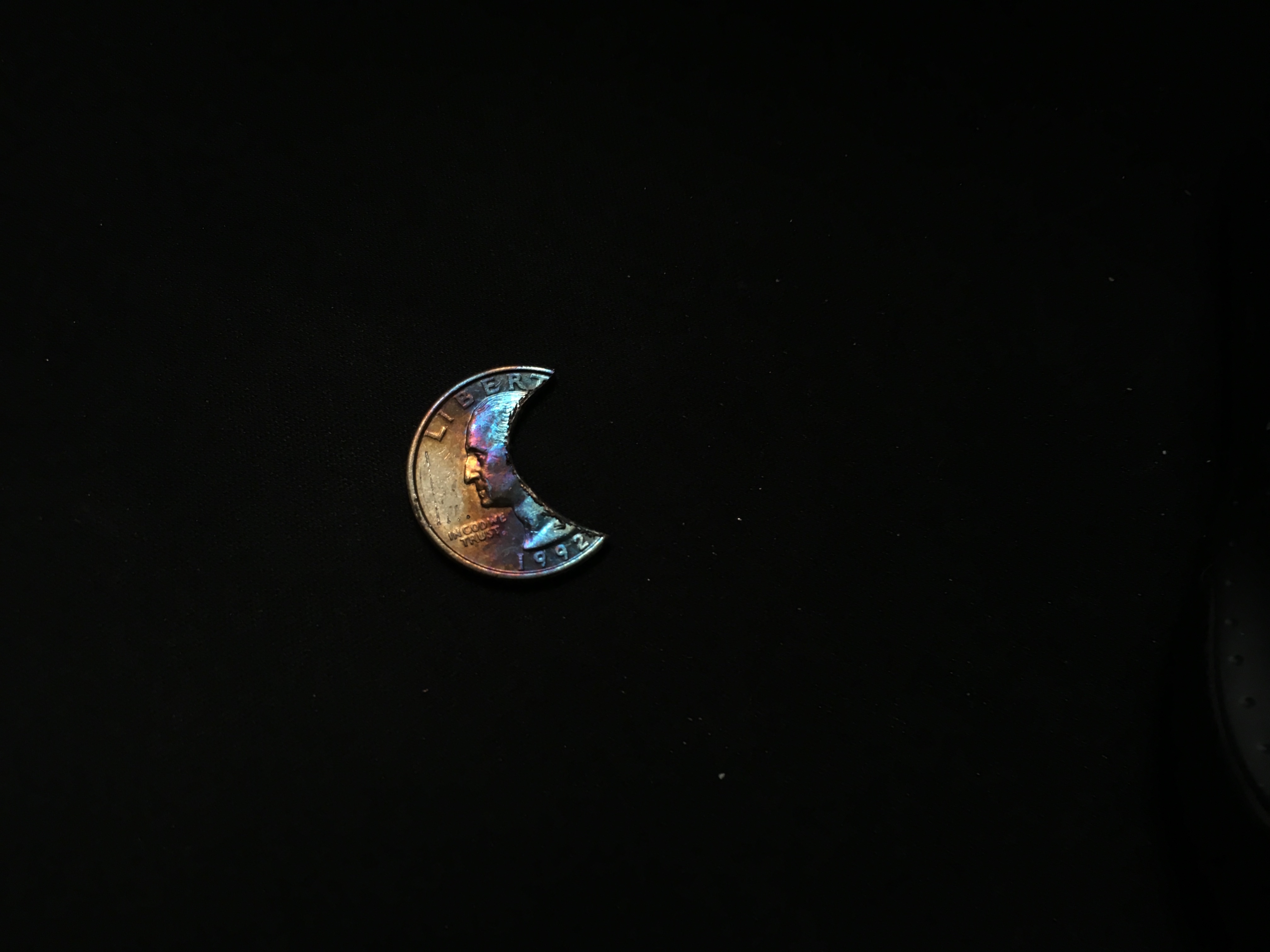




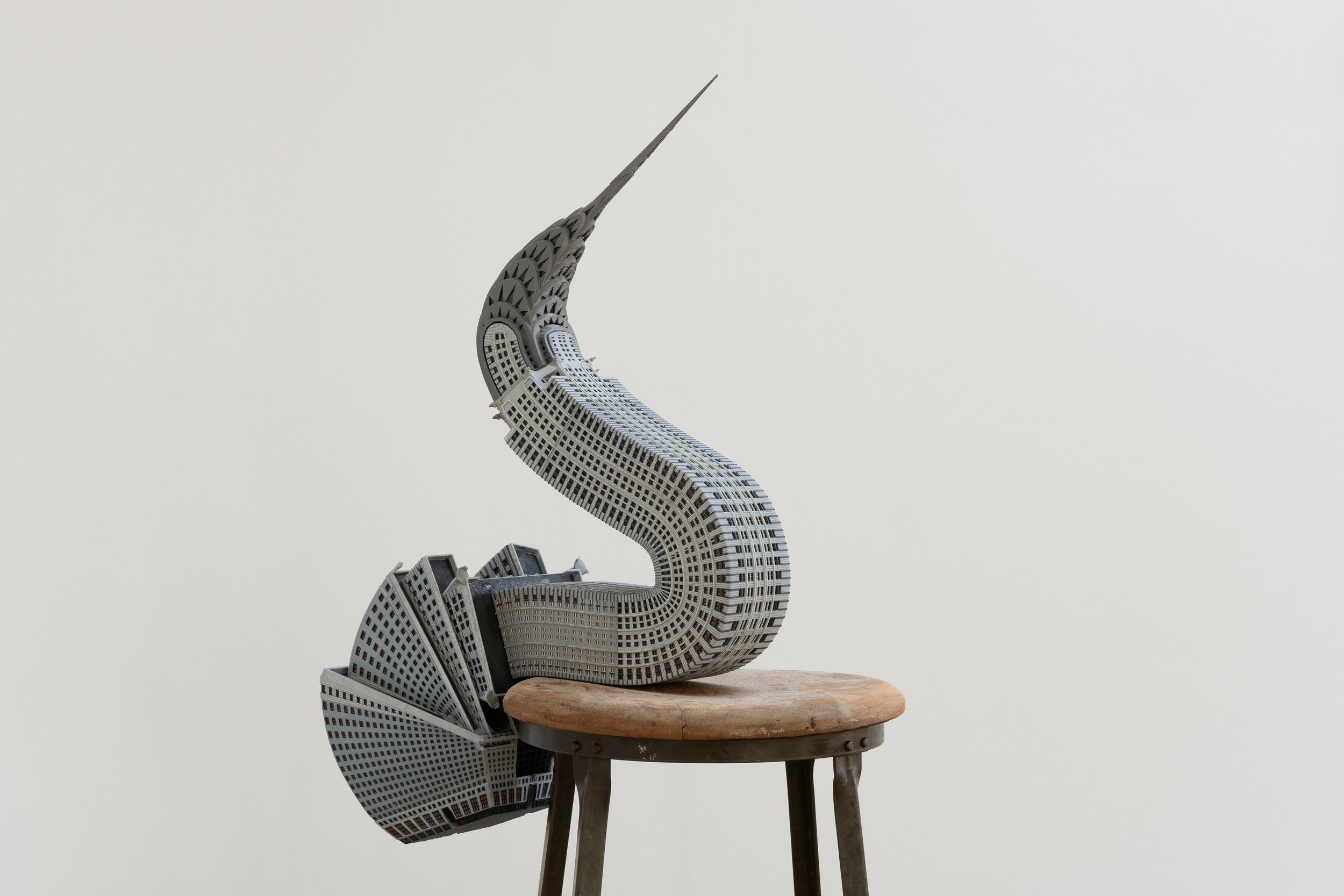
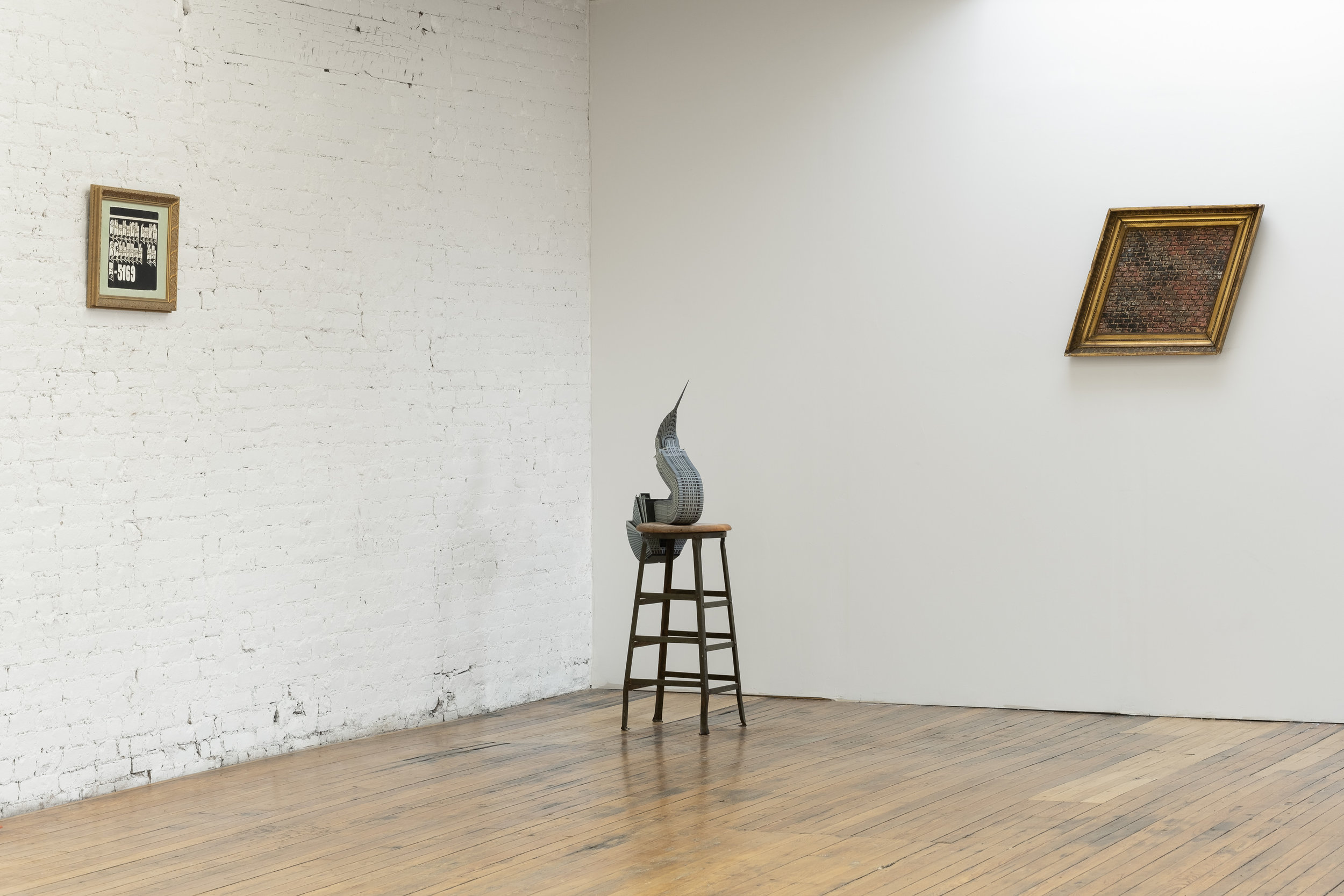
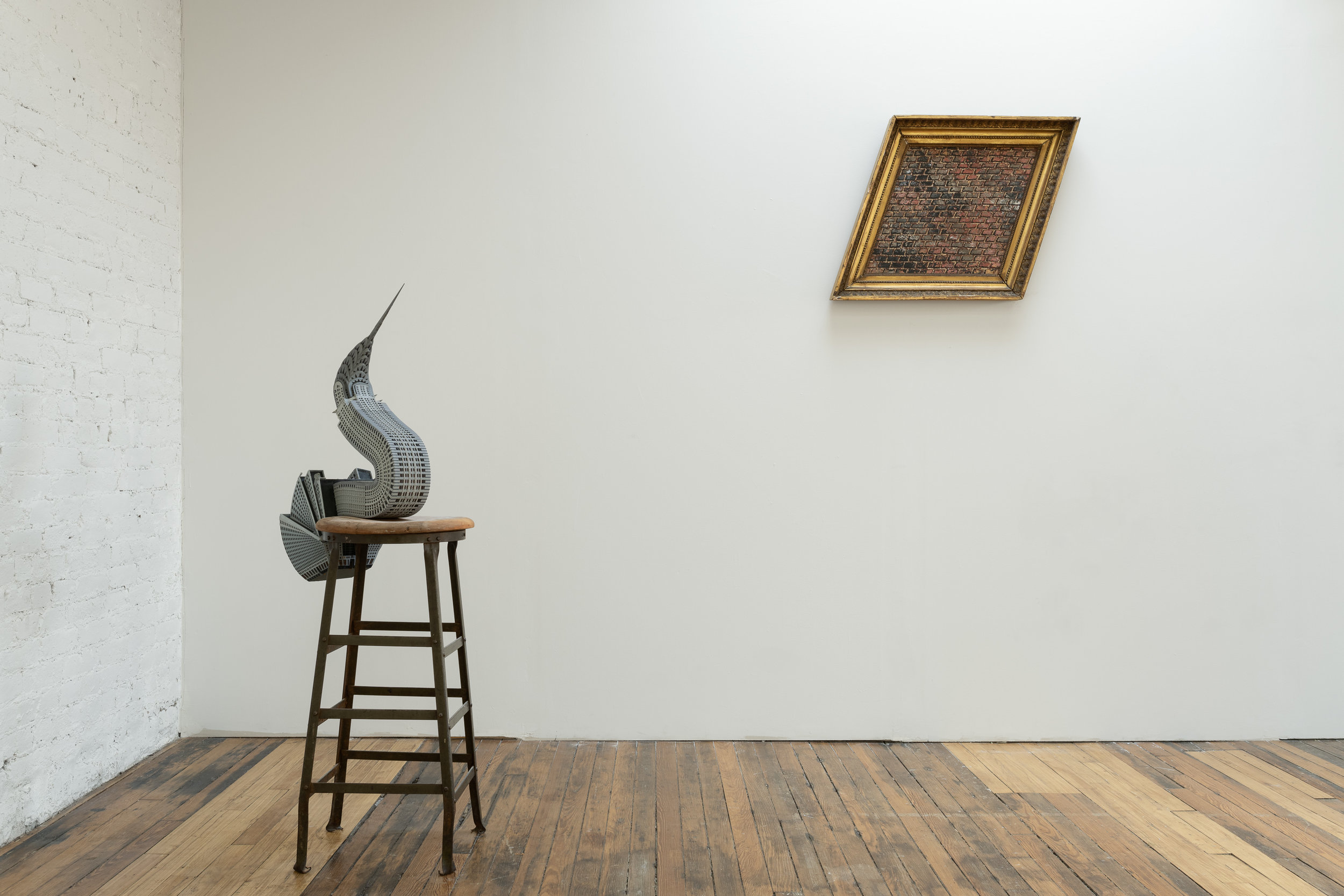
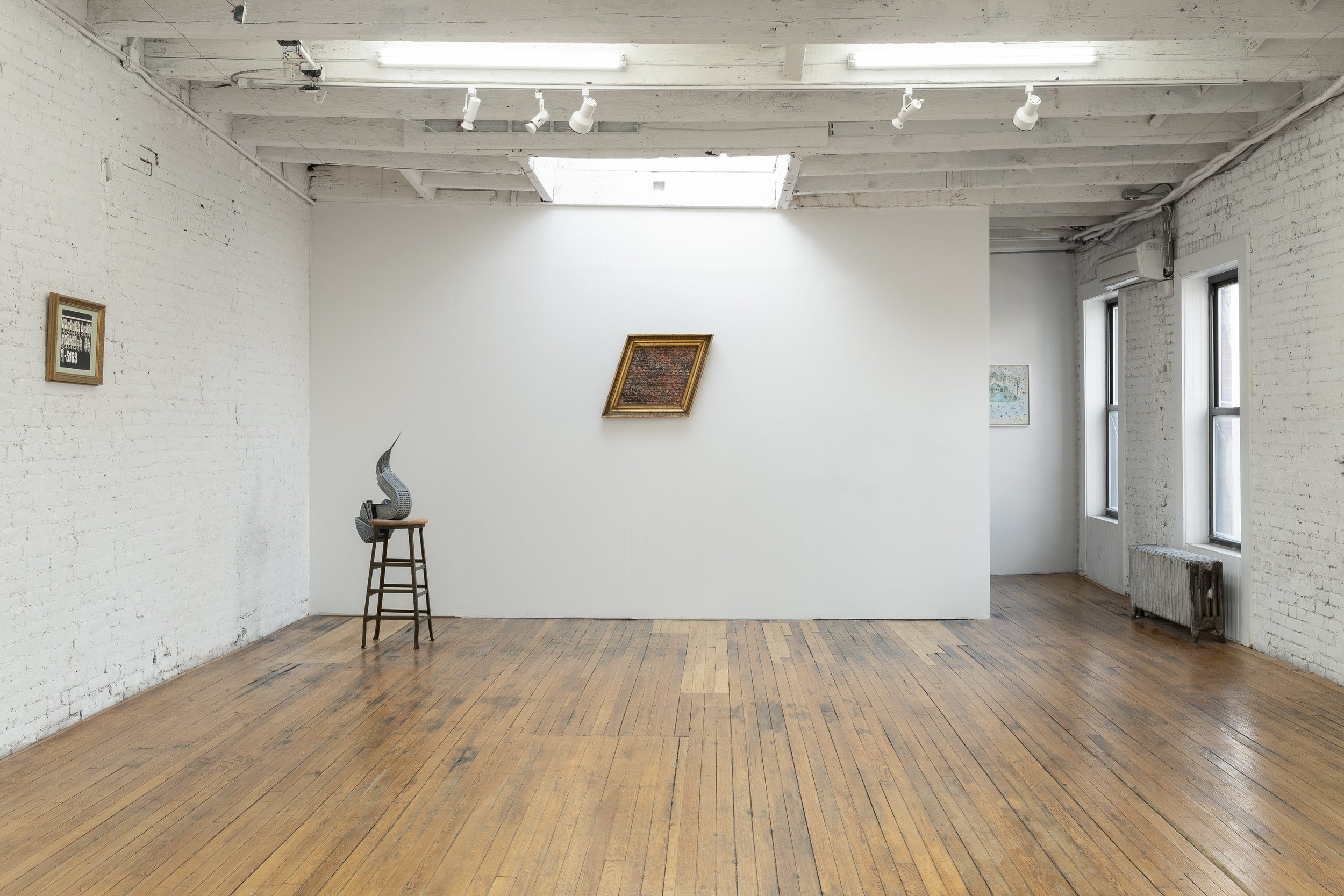

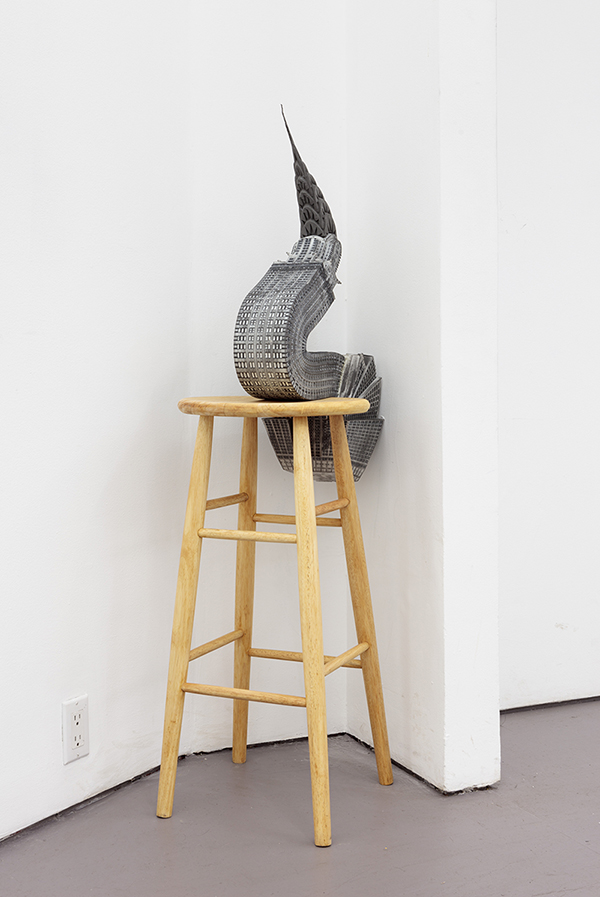
December 17 - December 31, 2016
Species
Dear Joel,
Jason and I are trudging through your press release text--it's heavy. All the historical descriptions of the twin towers feels particularly intense given the political climate right now. So much of your text talks about the "balance" between two harmonious architectural entities crumbling to the ground and being replaced by a hegemonic monolith. I can't help but think about the two-party political system, and this toxic dichotomy that has made such a mess of this country in an acute way since 9/11--or how binaries always seem to fail. It's almost like we're living in those suspenseful asymmetrical 29 minutes (between the falling of tower 1 and tower 2) before the whole thing crumbles. I love your reflections on the countdown (count up?) to the end of the twentieth century and framing it through this preoccupation with scale and idealism and architecture in reference to the Eames' "Powers of 10".
I'm not sure how to transform the text you sent into clear and cogent language that helps make your research and references neatly explain the objects you are working on for the show. I think part of why you're struggling with the text (and why Jason and I are too) is that there feels like a renewed urgency for art to help us locate our humanity and our confusion and our anxiety in a moment when no tweet or talking head or think piece can. Art speak and cleverness and sharp research doesn't feel right anymore. I want a grunting, stupid, but honest language--a language that tears off our mask of entitlement and separation. So here's my shot at explaining your show:
Joel is a twin, he grew up in Atlanta during the economic abundance of the 90's and his childhood was characterized by "you-can-do-anything" directives from the baby boomers that brought our generation into the world; parents who grew up with their own promise of a new liberal social order following the protests and upset of the late 1960's. Joel was just exiting childhood and entering the abyss of teenage gloom when the twin towers came down. The external event provided a clear break from the innocence of childhood, and set in motion a violent global reorganization more in tune with the chaos of a changing teenage body.
Now Joel is an adult living in New York City, wondering how to ascribe any kind of order to a zoomed out version of his context as the planet buckles under the gigantic ego of productivity and human exceptionalism. A table set to serve its own severed leg, two cities fit into one, a child with an imagination made of wood, two abici, and a split line of communication… “Powers of 7-8-9” is a historical mashup cum art exhibition that playfully turns a value system against itself. Here, a cultural reference, turned riddle, turned allegory replaces Eames’ Powers of 10’s promise of exponential growth towards infinity with, instead, a building set of single digits that might propose a new cadence for indivisibility.
How's that?
Love,
Erin and Jason
Jerry Cullum for Arts Atl
Victoria Camblin for Art in America
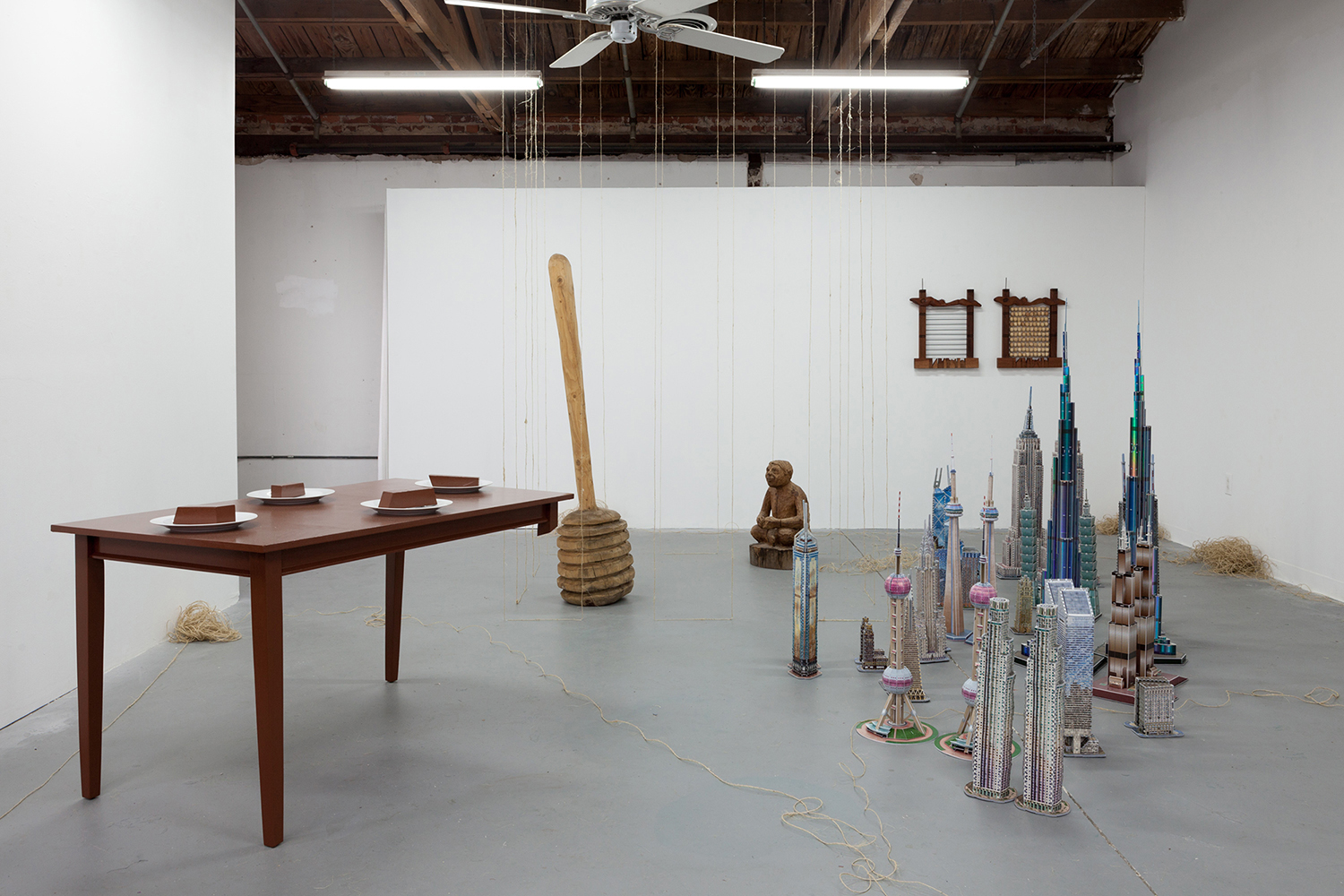
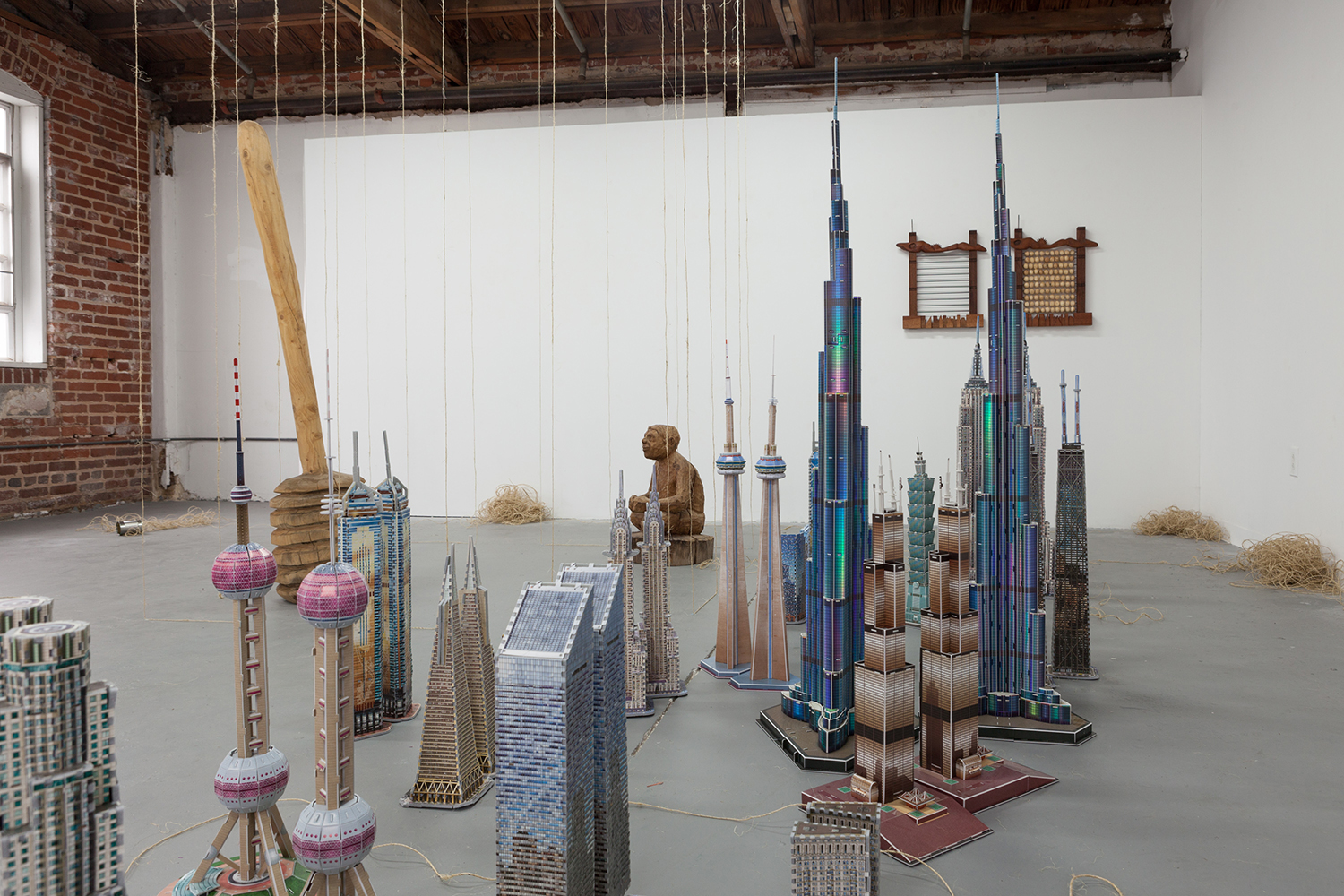
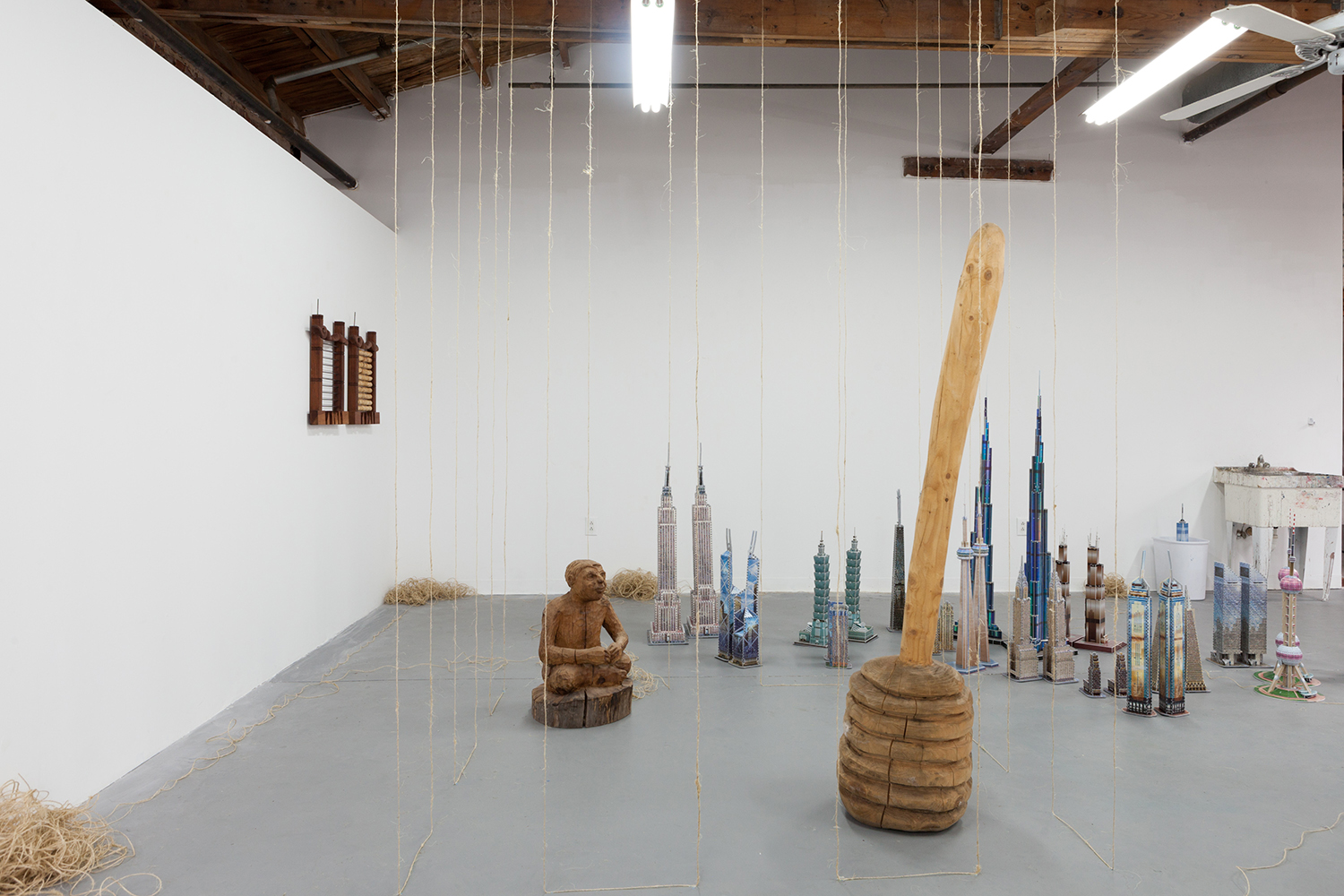
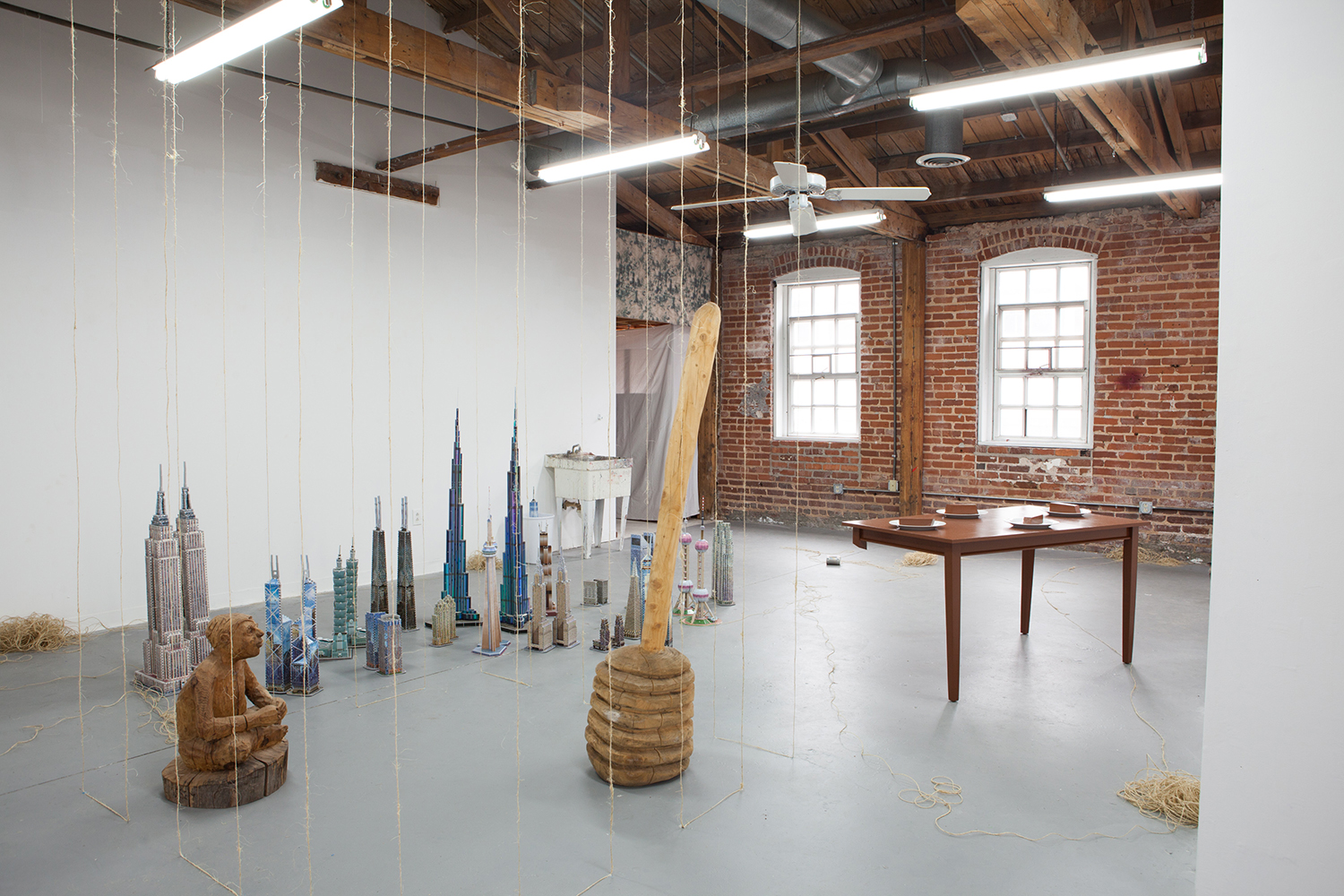
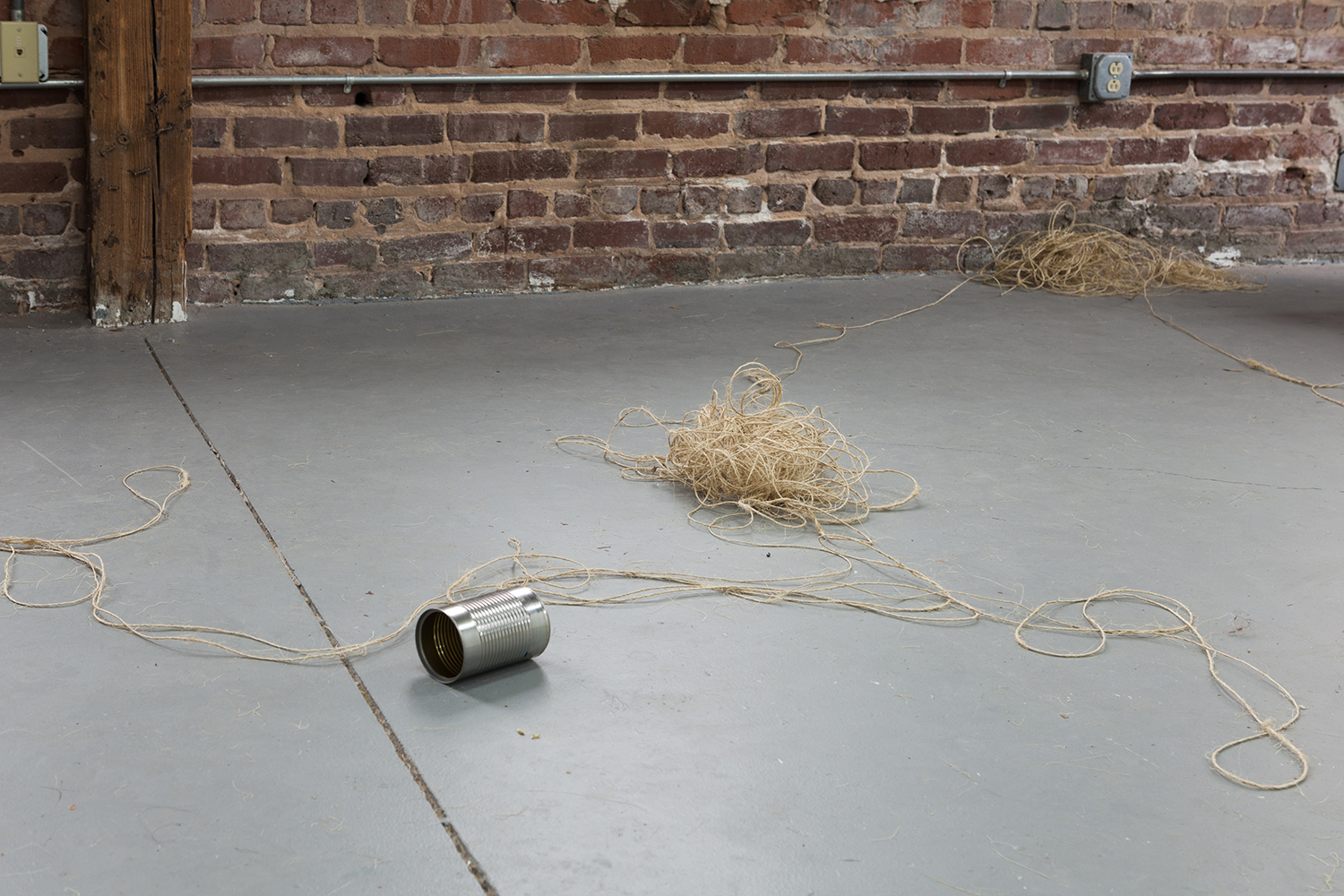


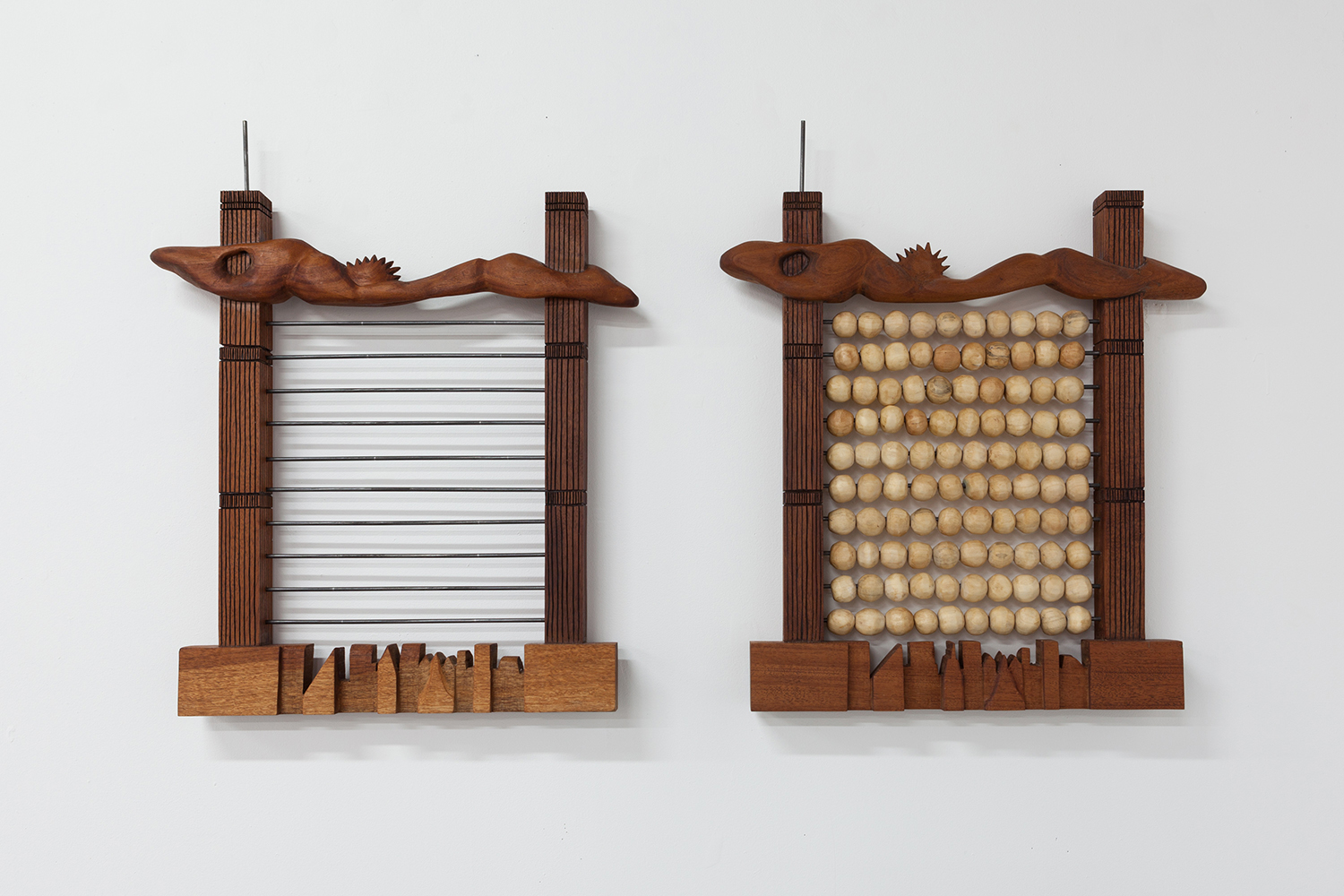

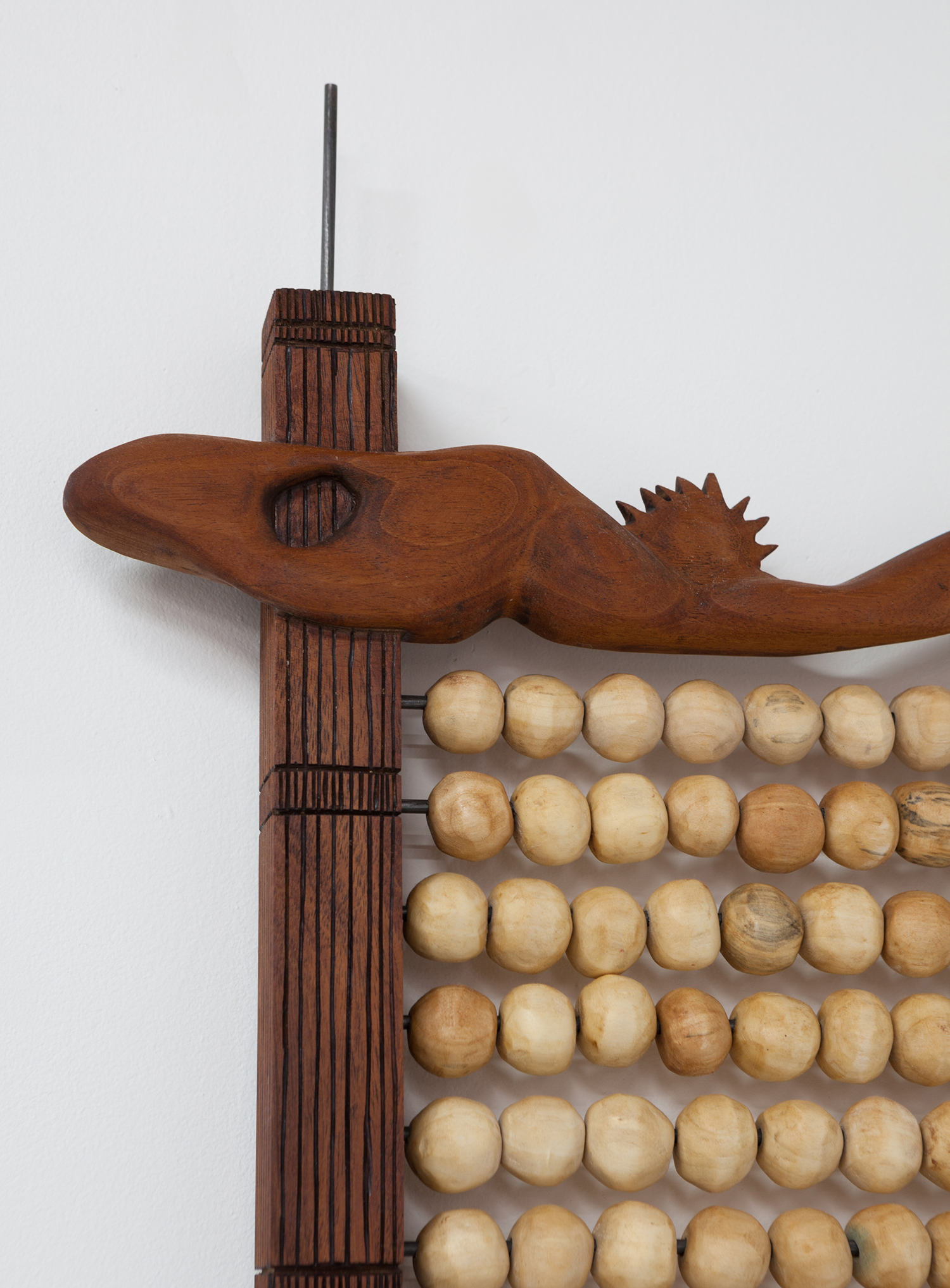

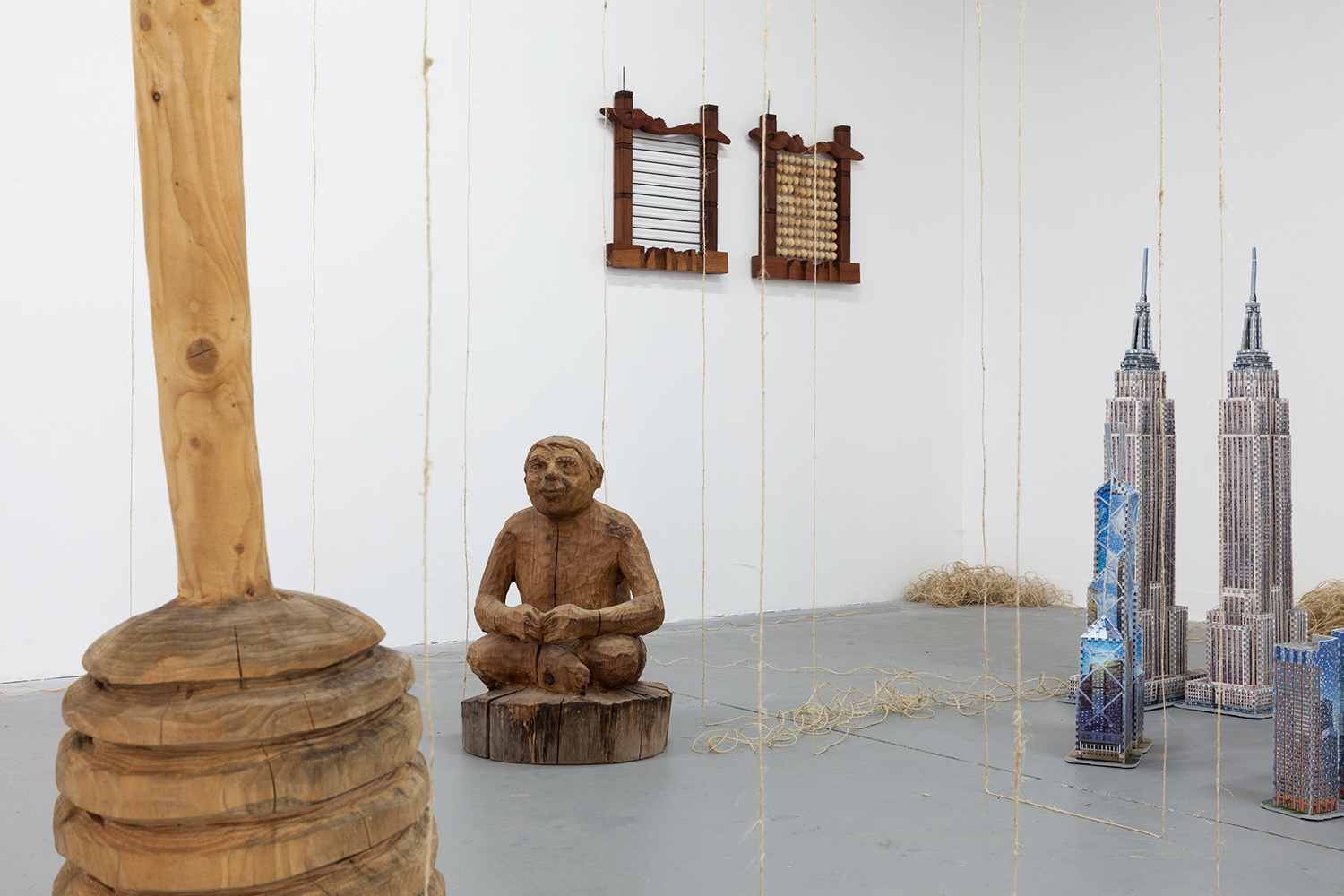
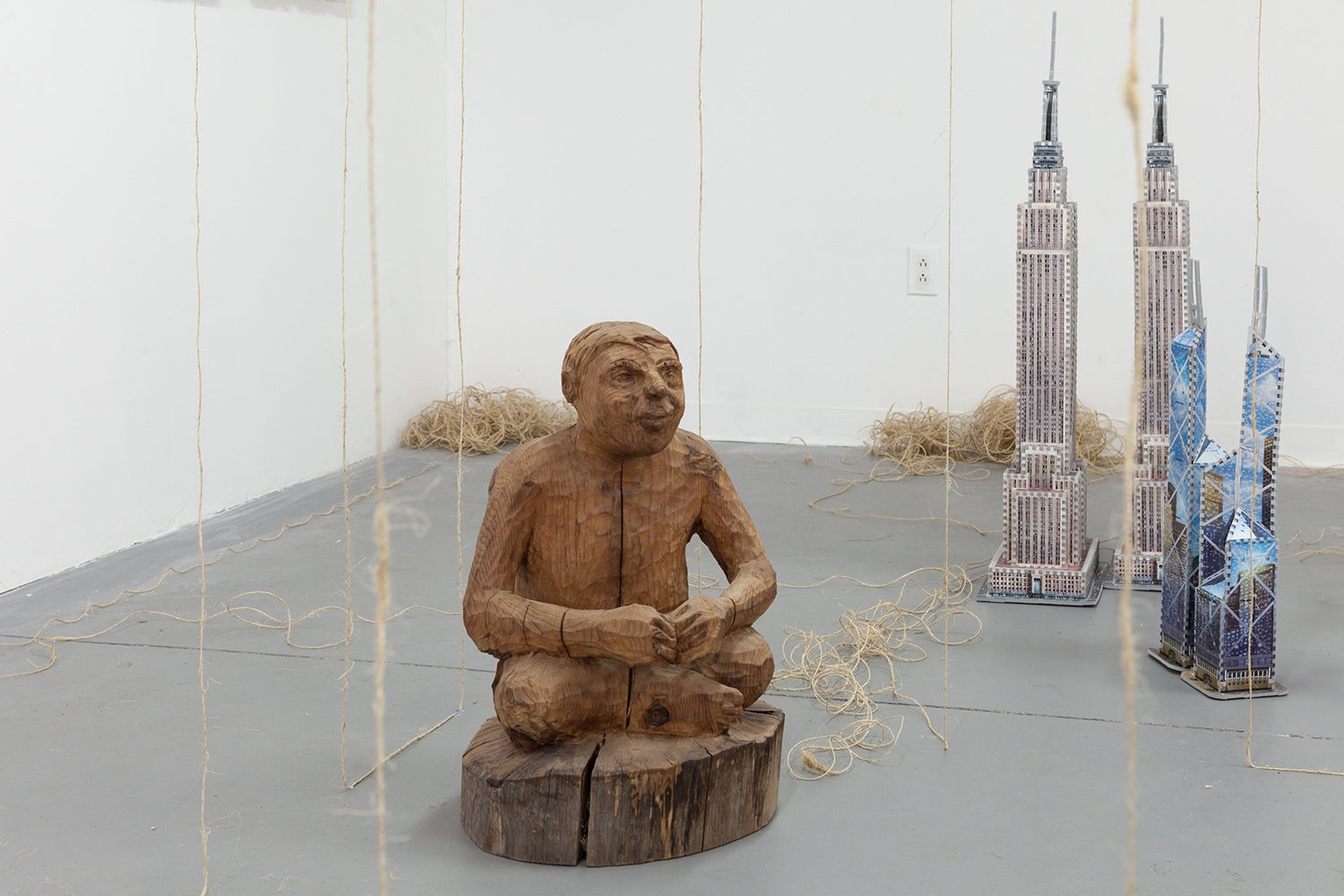
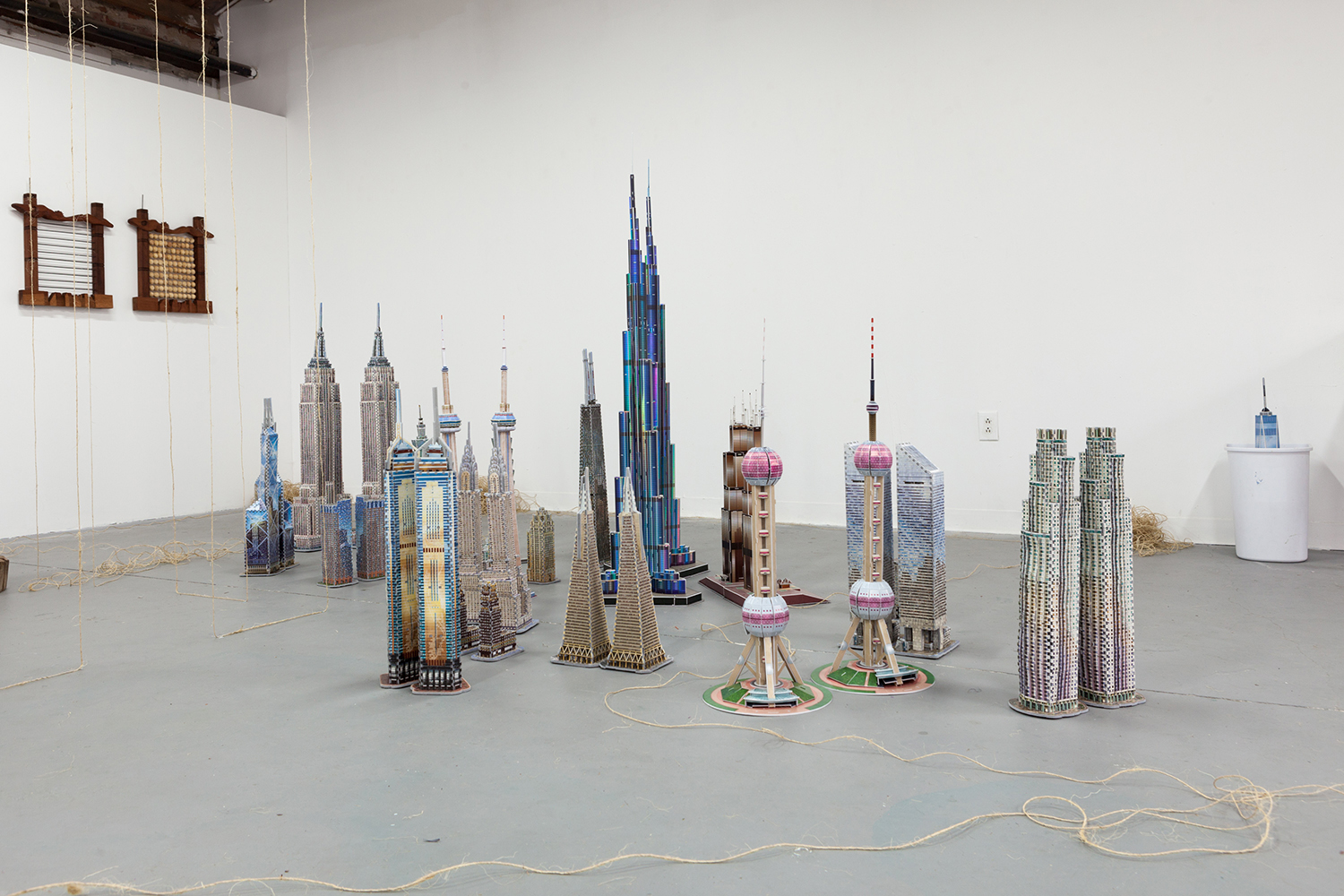
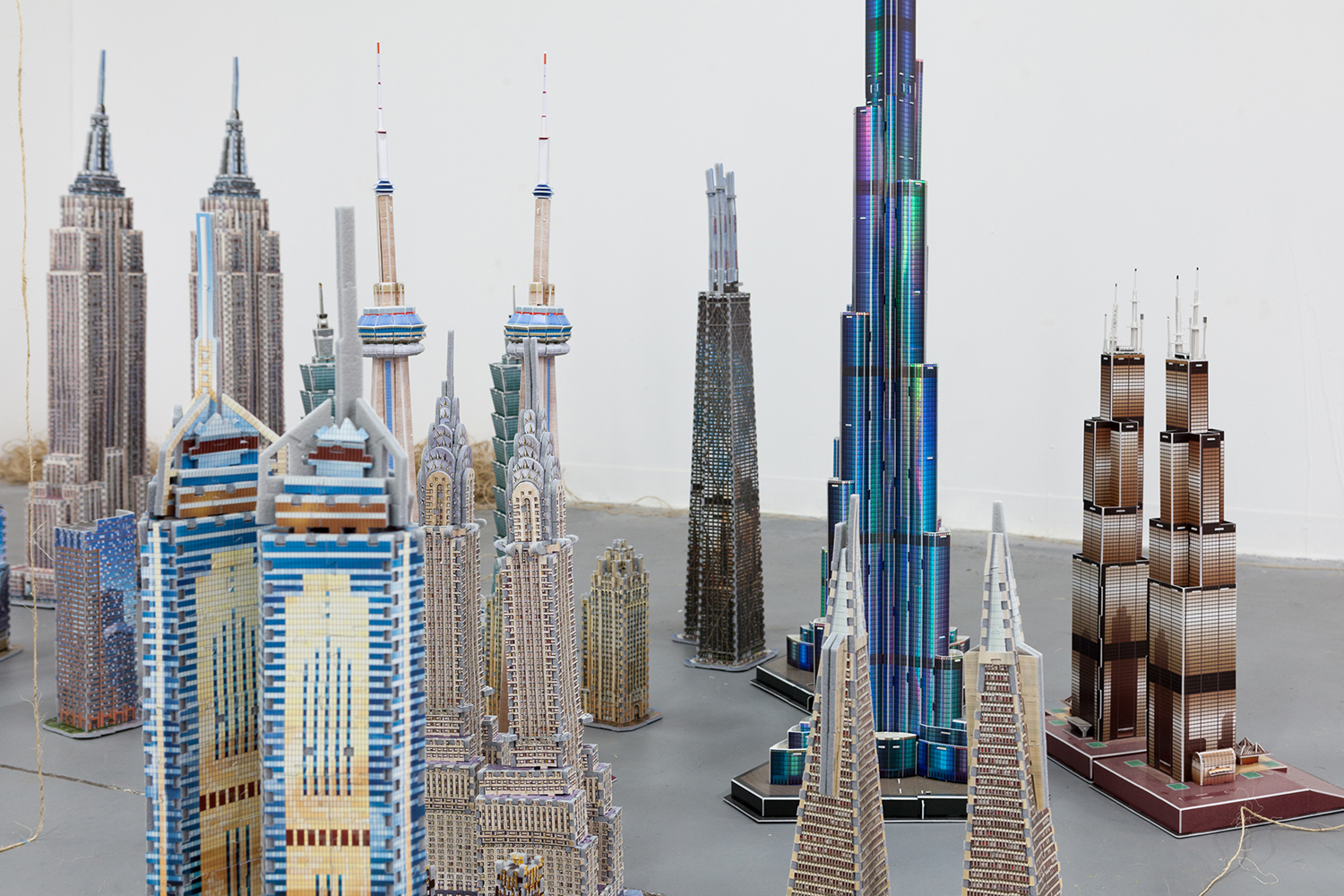
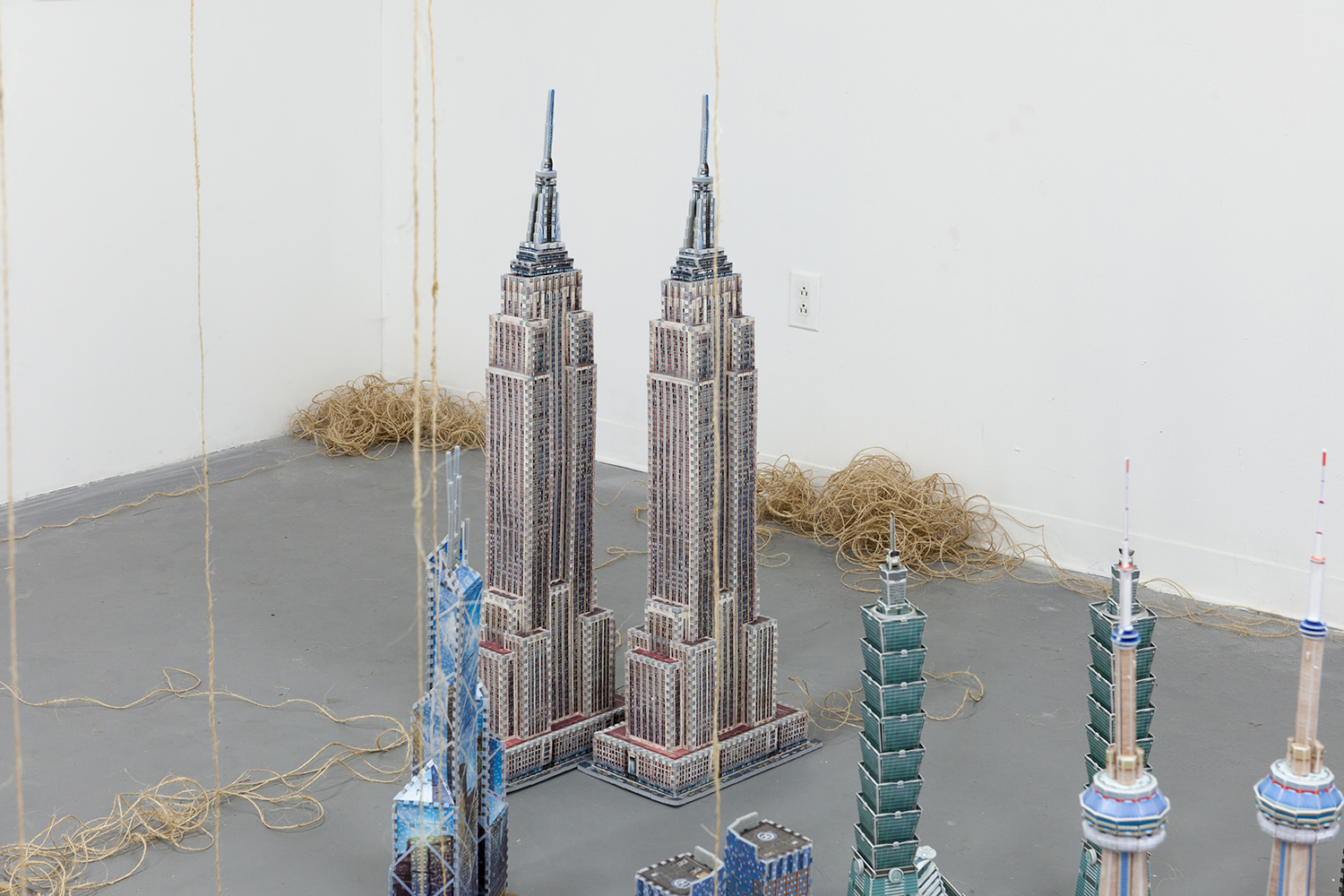
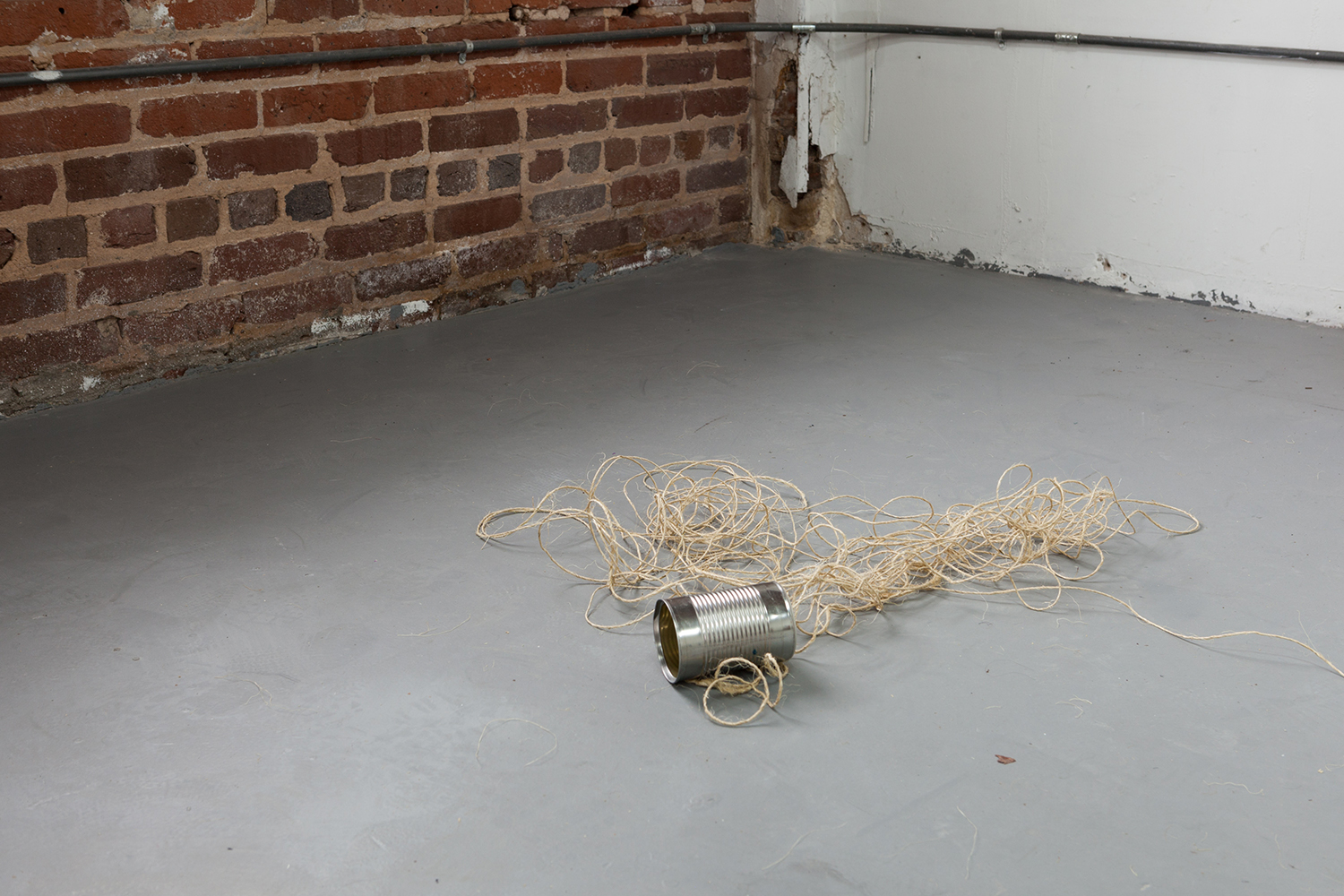
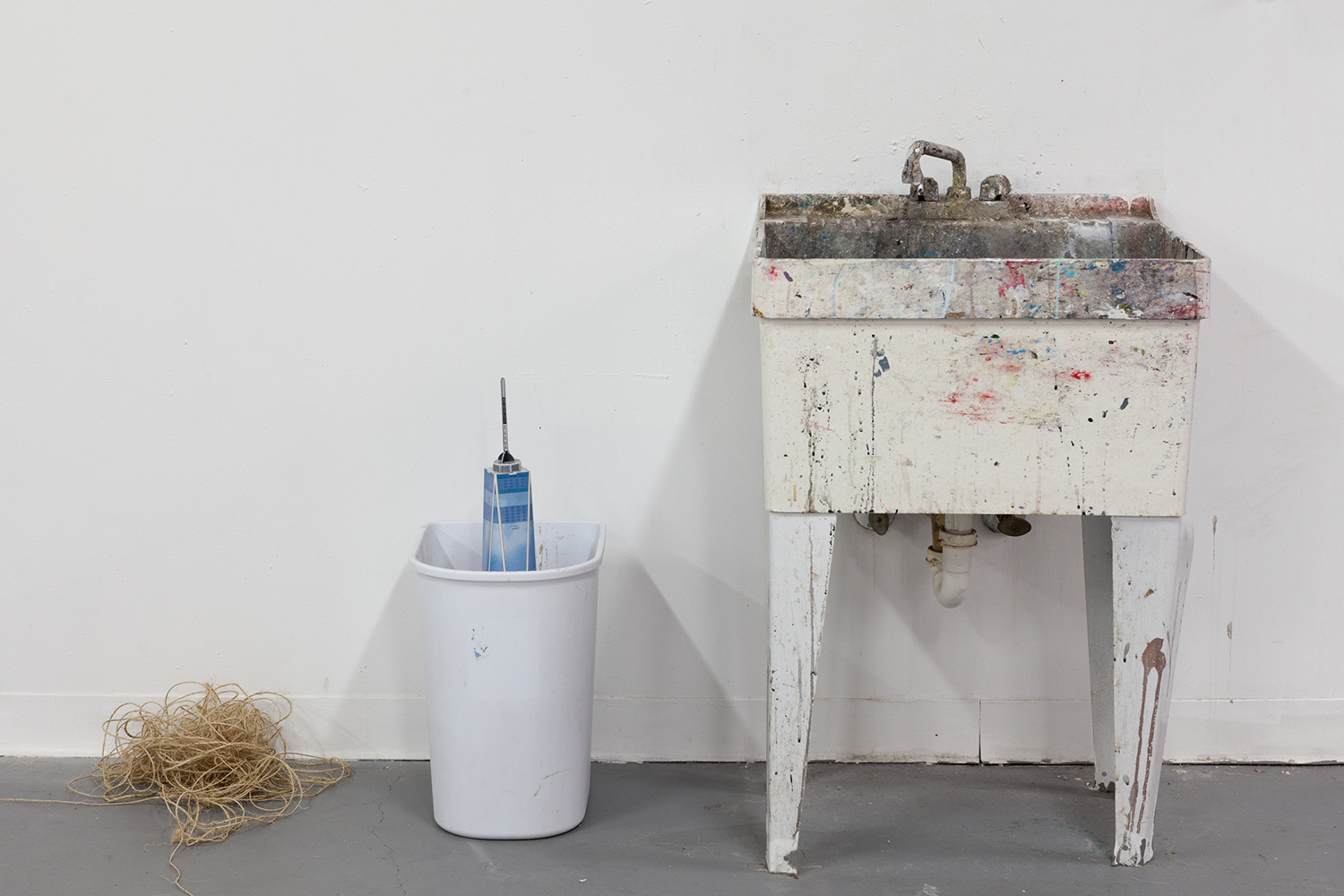




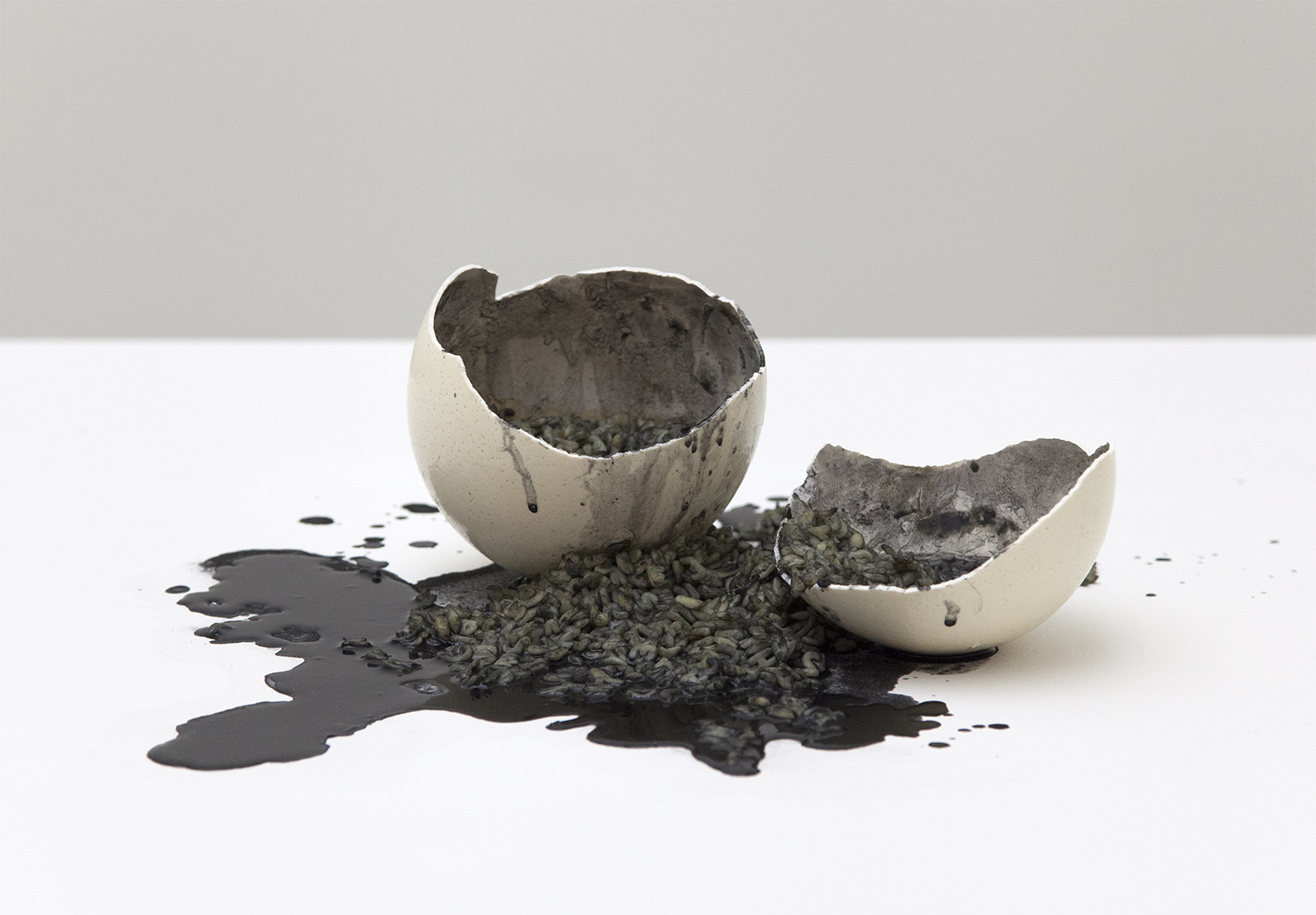

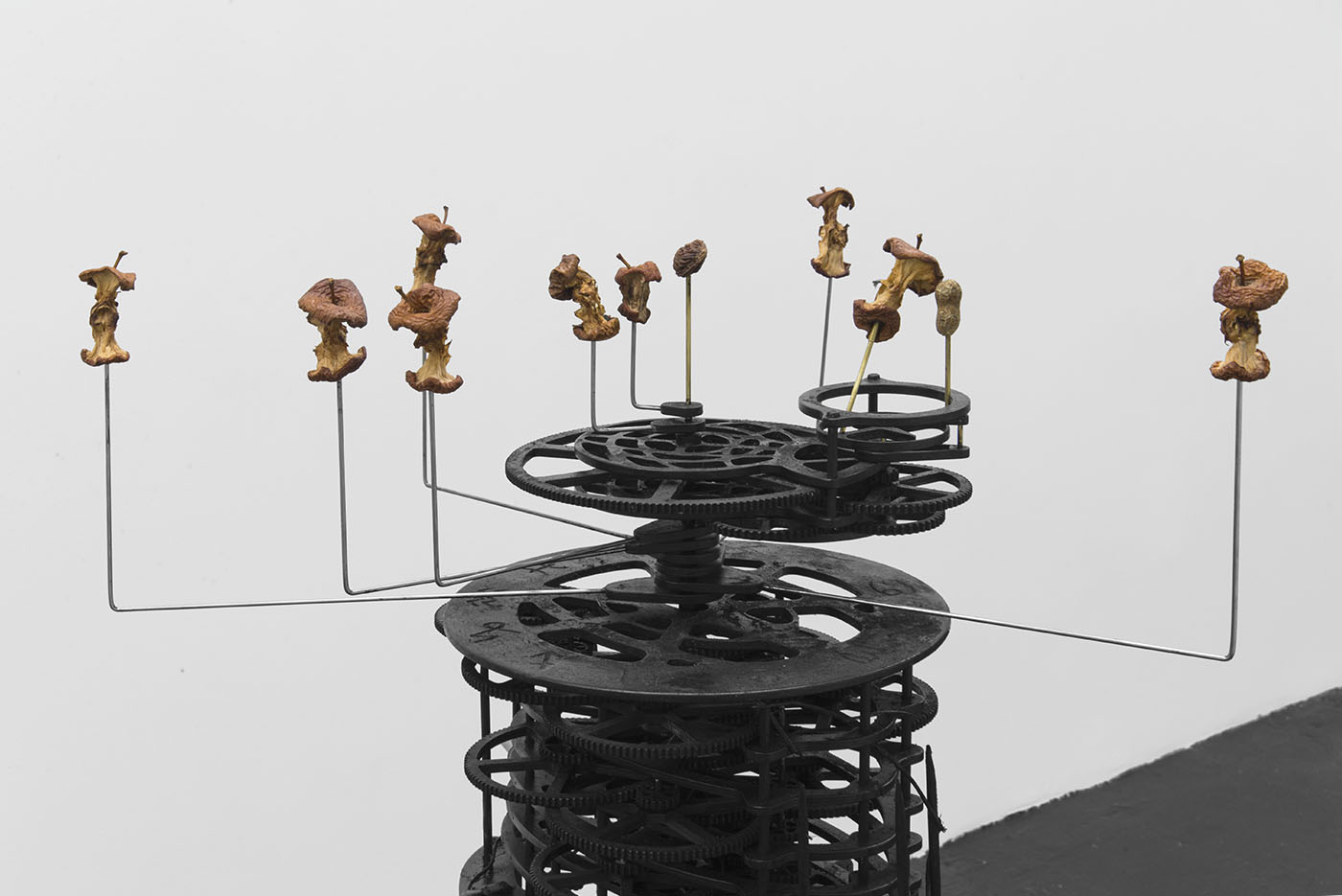


August, 2015
Princess

